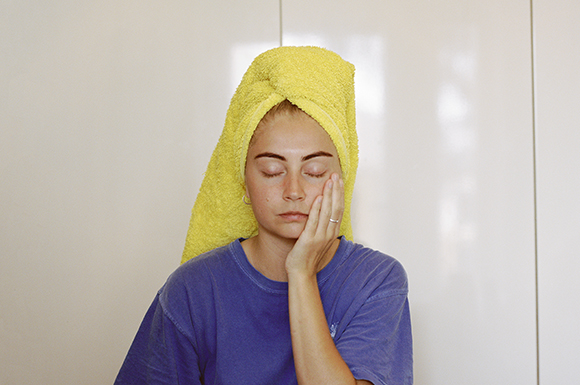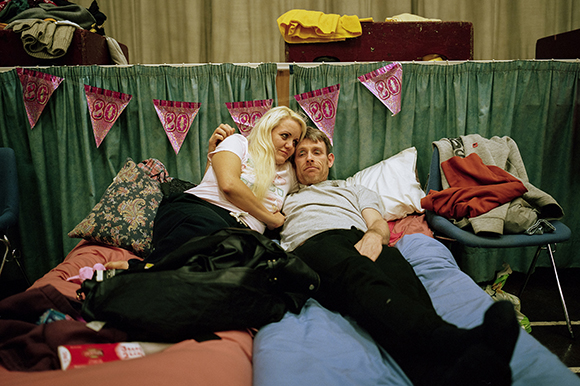Wellcome Photography Prize 2021
The Wellcome Photography Prize announces its 2021 shortlist, with photographs exploring the human side of three urgent health challenges: mental health, infectious disease and global heating.
The world faces huge health challenges, and we at Wellcome support science that can find ways to solve these. But we also want to change the way the world thinks about health and to inspire new action.
That’s why the Wellcome Photography Prize celebrates remarkable visual stories that bring these issues to life.
In the shortlist below, 31 talented photographers share their personal views of three of the most urgent global health challenges: mental health, infectious disease and global heating. By bearing witness to these stories, we can all enrich our understanding – and strengthen our determination to find new solutions.
This year's winners will be announced at a live event on YouTube on 28 July 2021. Subscribe to attend the event.
Follow us on Instagram to see extra content from our shortlisted photographers, and to get the latest news about the Wellcome Photography Prize.
Mental health problems are common all over the world but they’re still little-understood. These photos share unique insights into what it’s like to live with depression, anxiety and other such problems. They also show us some of the way that people – individually and as communities – are finding ways to keep their lives on course in a turbulent world.
Managing Mental Health (single image)

Oded Wagenstein
Michael (not his real name) is in his 70s, with a wife and children, but he keeps his sexual orientation a secret from almost everyone he knows. He poses wrapped in his tallit prayer shawl to symbolise the way he conceals his identity from his religious community in Israel. Fear of prejudice means that people who are closeted are at higher risk of depression, but support groups can reduce that isolation and give them somewhere safe to be themselves.
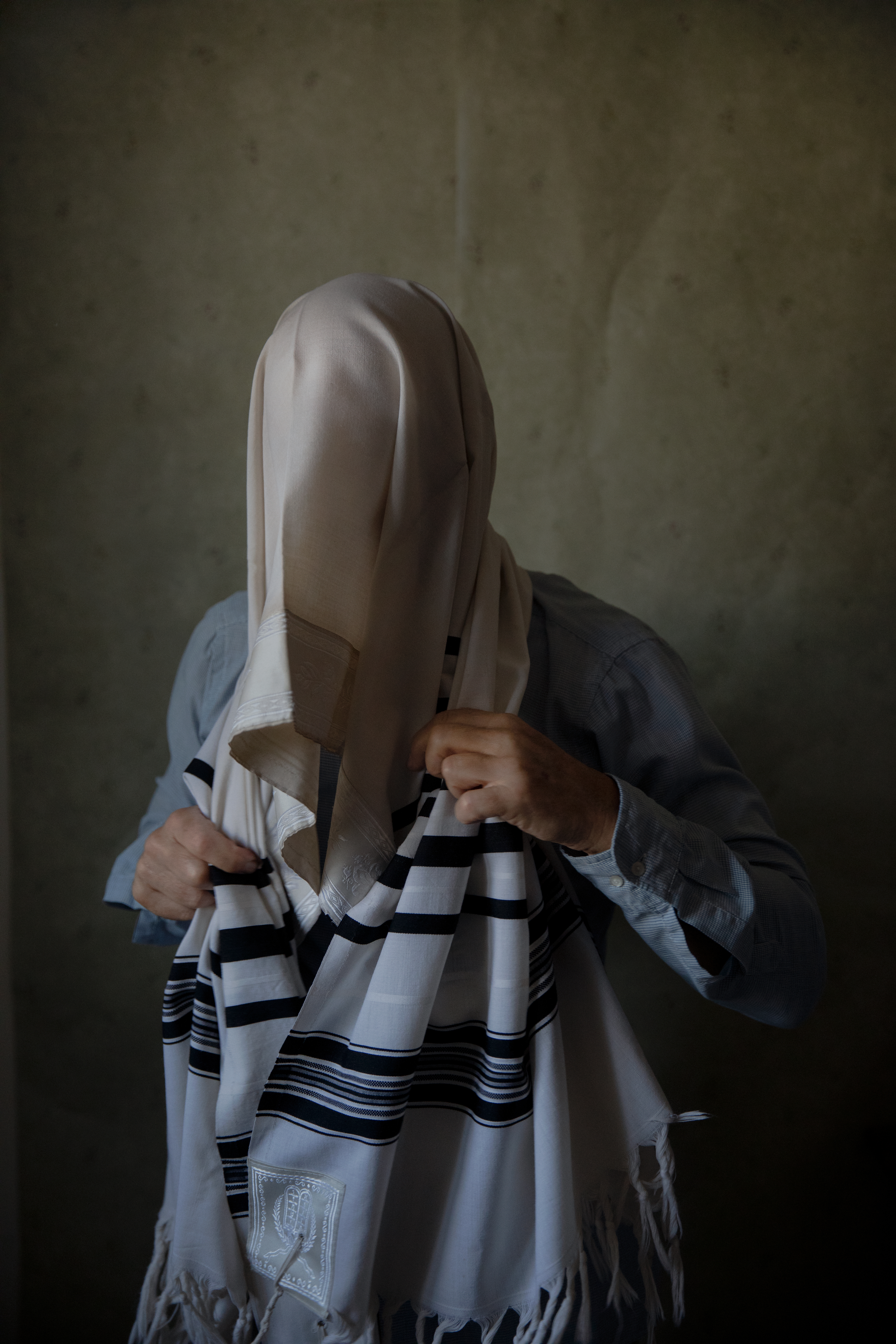

Thomas Duffield
Since Thomas Duffield was a child, his father has struggled with a heroin addiction. After a long estrangement, they have reconnected and found strength by addressing the mental health issues and vulnerabilities that surround their shared experience. “From tall tales of youthful mischief, to remorseful longing for the past, we have laughed deep into our stomachs and also held back tears like two teenage boys that were scared to let them go.” Here, the father cuts the son’s hair, an expression of parental care that can be hard to put into words.


Dulcie Wagstaff
To help with her depression, Dulcie Wagstaff works in her garden. On this winter’s day, she confronted the cold with a summery floral dress and imagined burying herself, “connecting with the earth whilst hiding from the world above”. She says: “Gardening in winter is a defiant act, against the elements and our human instinct to stay indoors in the short, dark days. However in this instance it is a lifeline, in search of light, connection, movement and purpose.”
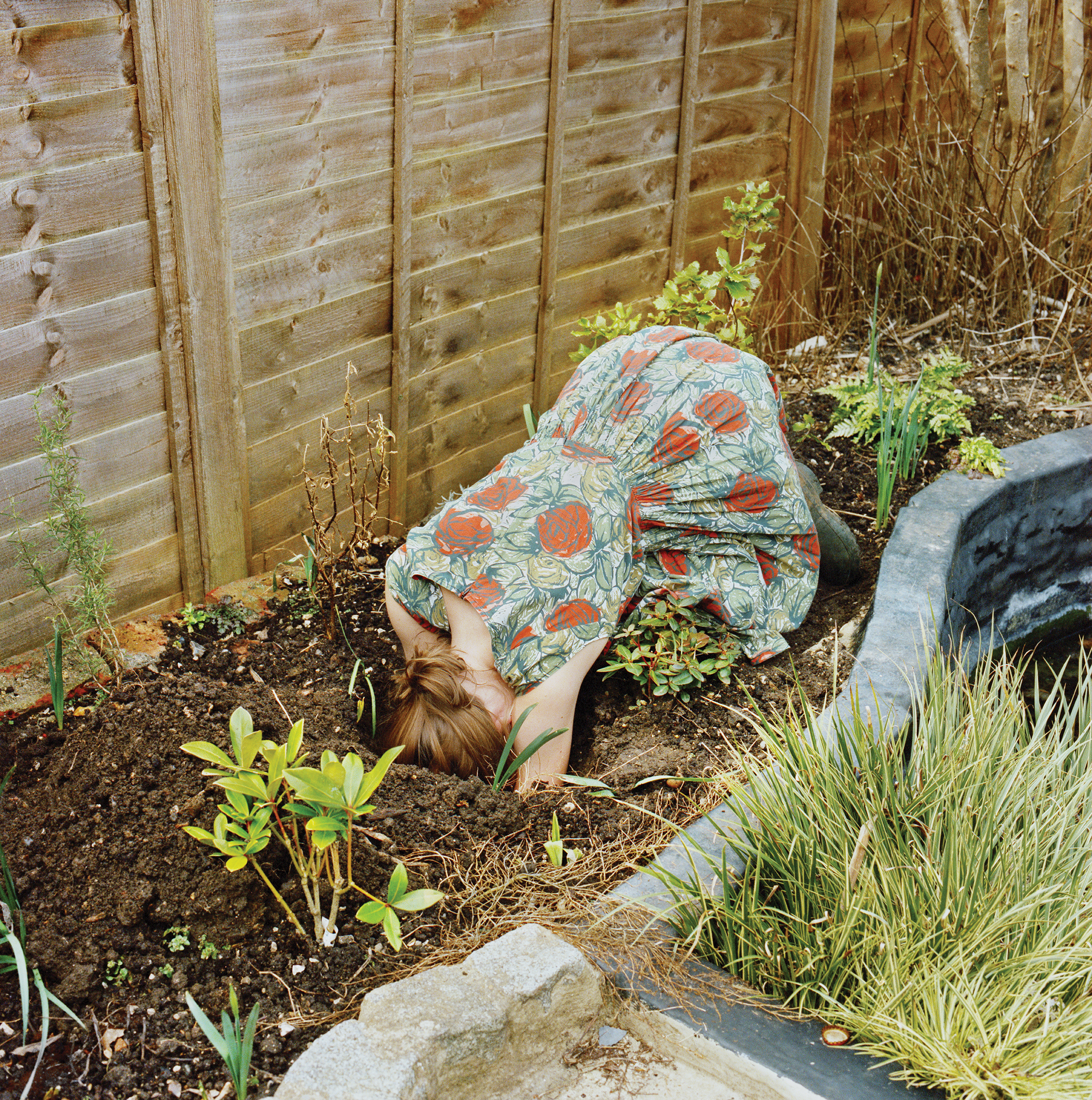

Jameisha Prescod
The isolation of lockdown exacerbated London film maker Jameisha Prescod’s depression, as she spent most of her time in the concentrated chaos of this room. “It’s where I work a full-time job, eat, sleep, catch up with friends and most importantly cry.” Before long, she felt like she was “drowning in the clutter”. For escape, she turned to knitting, which helps to soothe her mind. It may not be a cure, but it does at least put “everything else on pause” for a while.
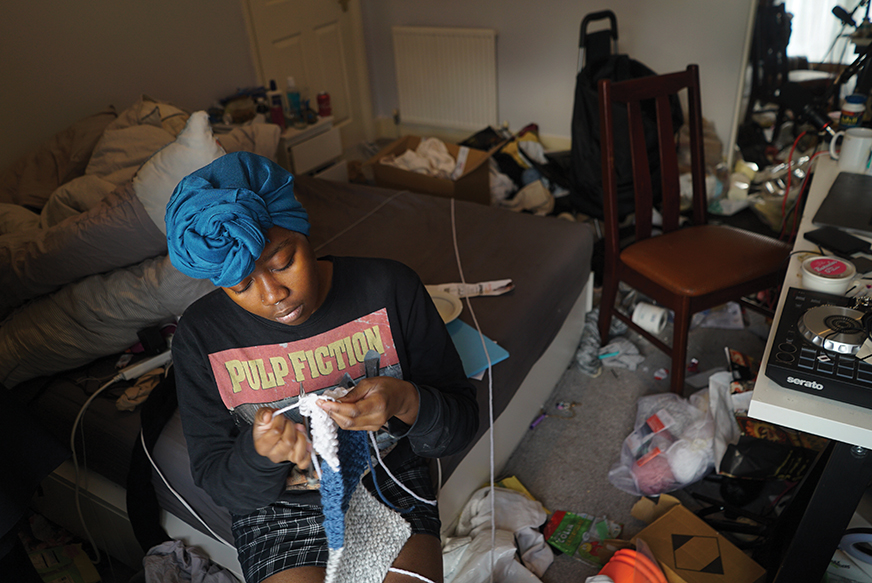

Kate Rosewell
Experiences of dissociation involve feeling separated from yourself, like watching your life as if it were a film. Distanced self-portraits like this one capture a sense of that for Kate Rosewell, and help her to make sense of what’s in her mind. Dissociation can be a way of deflecting intense trauma, but it can also occur in less extreme situations, not least the isolation of lockdown, which in another way has separated so many of us from reality.
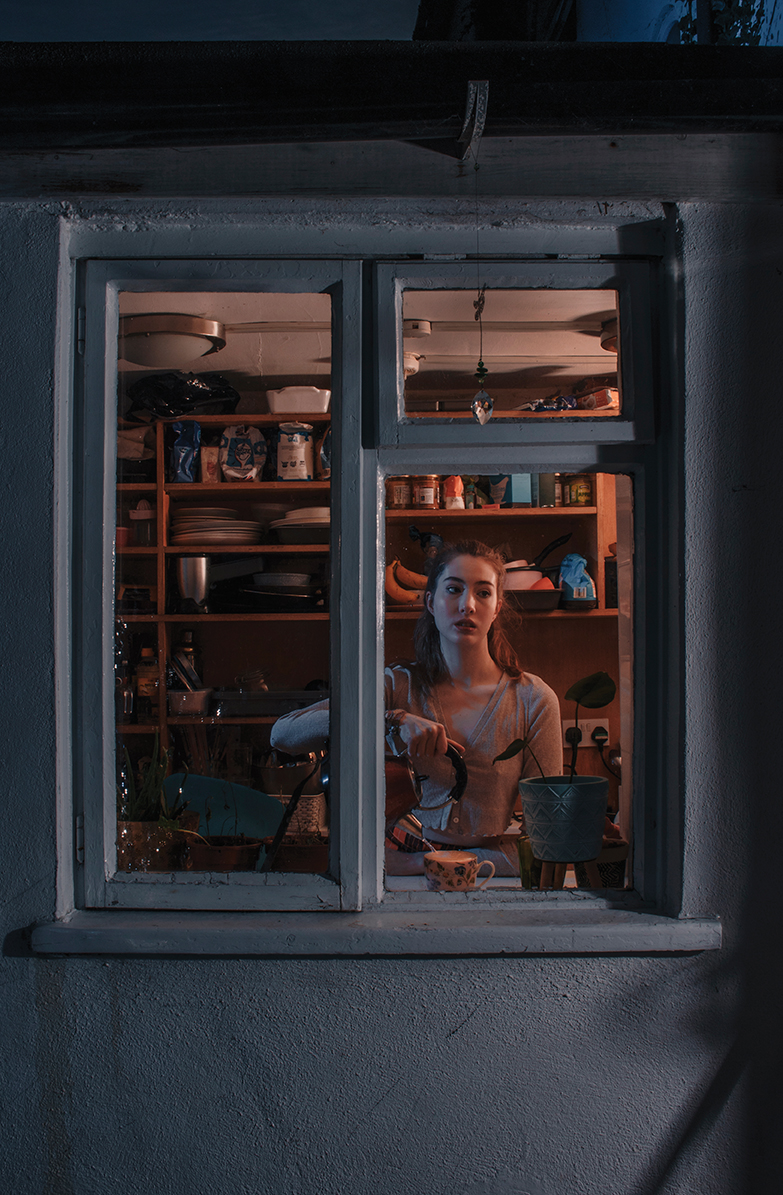
Managing Mental Health (series)
Friendship Bench Zimbabwe

Brent Stirton
Friendship Bench volunteers are community grandmothers, traditionally beacons of trust and confidentiality. Their training lets them perform a vital service in a country with one psychiatrist for every 1.5 million people. The programme has now spread to five countries and inspired similar initiatives in several others.
About this series
Through Zimbabwe’s Friendship Bench programme, trained volunteers counsel people with depression and other problems using principles from cognitive behavioural therapy – in the informal setting of a chat on a bench.
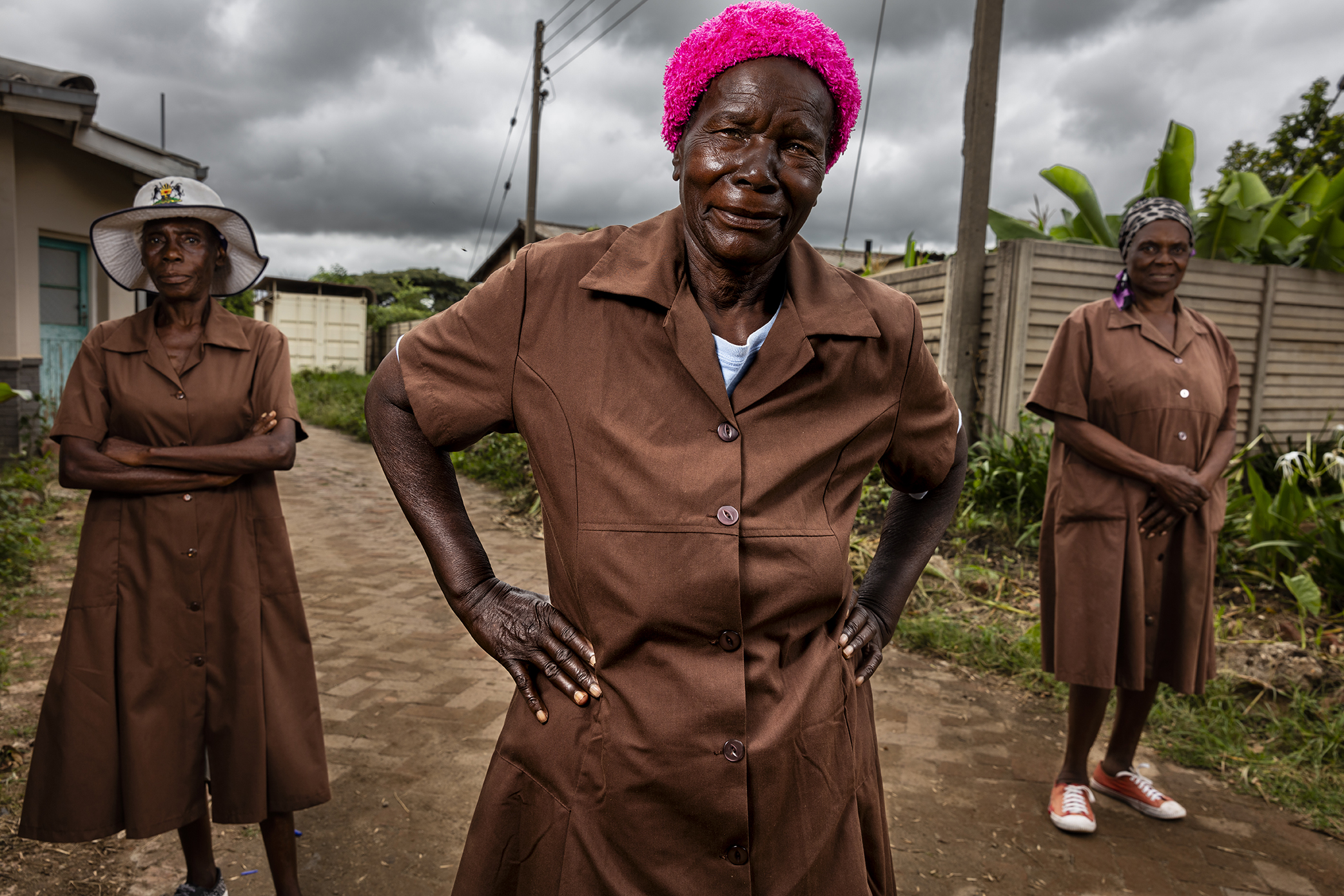

Brent Stirton
Elizabeth Mapaire is a volunteer in the Zaka area. Here she talks to Sophia Nyamuwngi, who had been feeling suicidal after her husband left her. Elizabeth referred her to a more experienced counsellor, and talked to her again later about potential support measures.
About this series
Through Zimbabwe’s Friendship Bench programme, trained volunteers counsel people with depression and other problems using principles from cognitive behavioural therapy – in the informal setting of a chat on a bench.
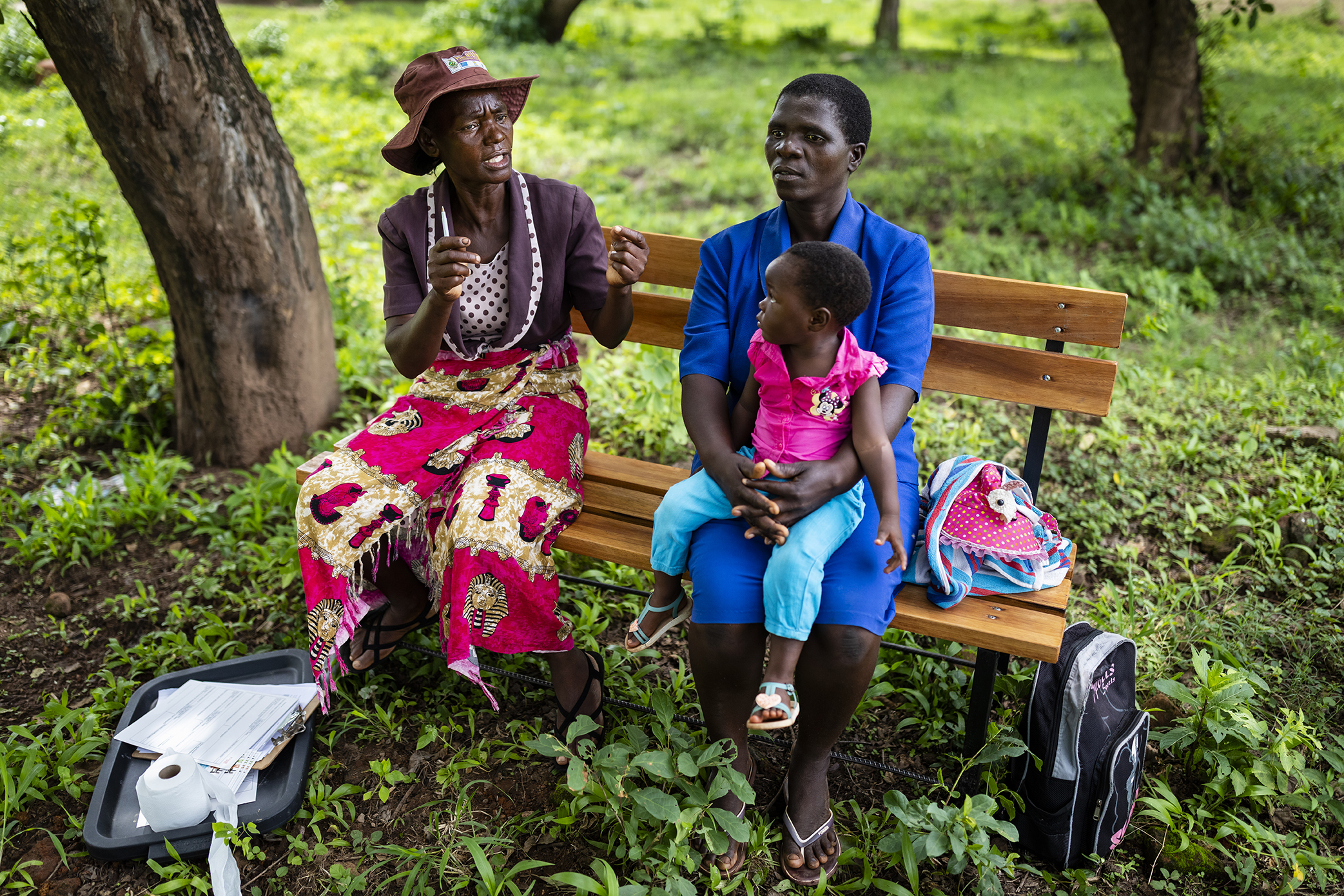

Brent Stirton
A grandmother volunteer at the Mbare Poly Clinic counsels a young mother, who is struggling financially and has an out-of-work husband whose frustration sometimes turns violent. Mass unemployment means that these are common problems.
About this series
Through Zimbabwe’s Friendship Bench programme, trained volunteers counsel people with depression and other problems using principles from cognitive behavioural therapy – in the informal setting of a chat on a bench.
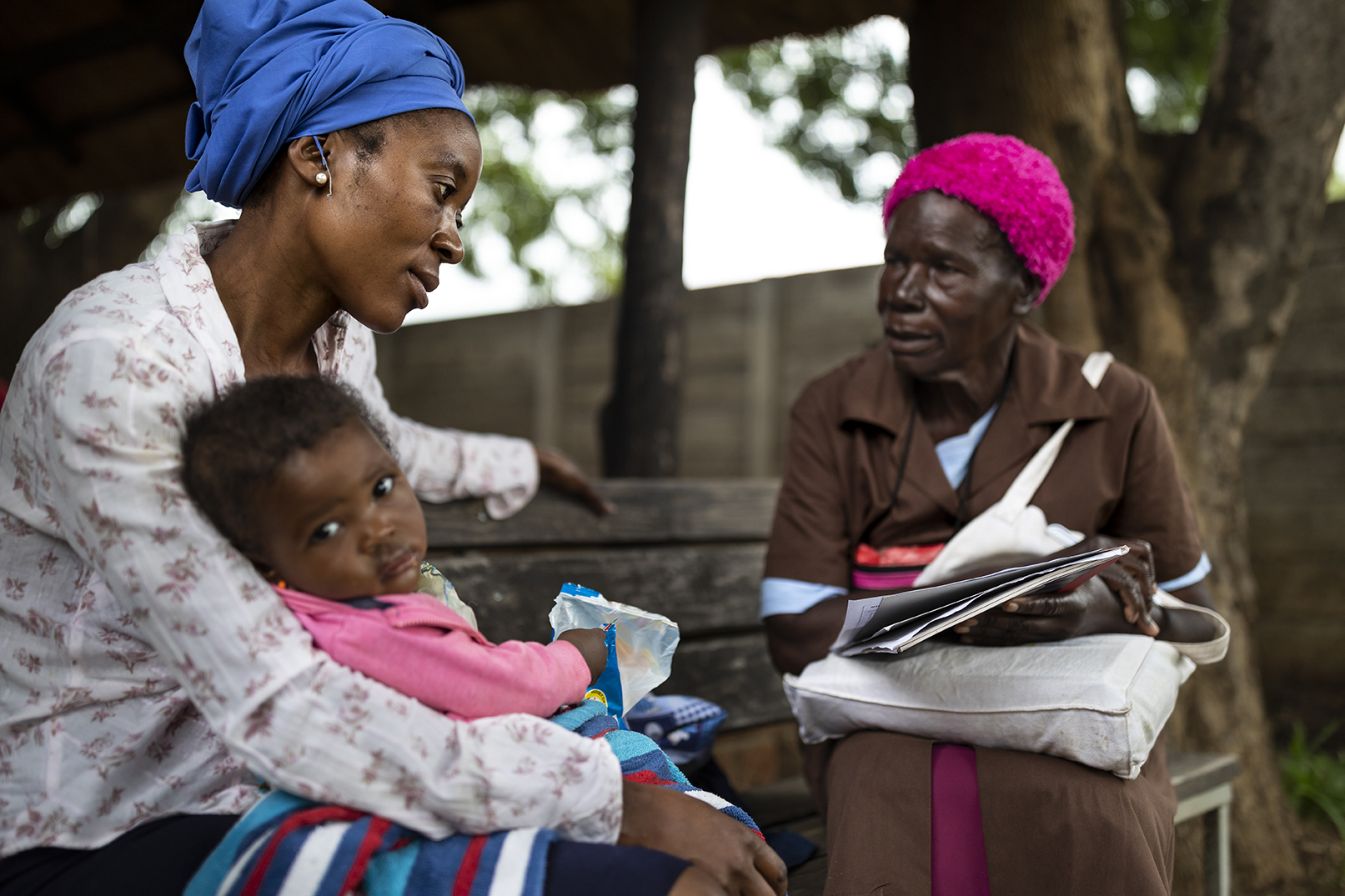

Brent Stirton
Counsellor Aleta Gukwa comforts new patient Apolonia Mekadha. Apolonia is HIV+, unemployed and homeless. Now she has someone she can rely on for advice, support and empathy.
About this series
Through Zimbabwe’s Friendship Bench programme, trained volunteers counsel people with depression and other problems using principles from cognitive behavioural therapy – in the informal setting of a chat on a bench.
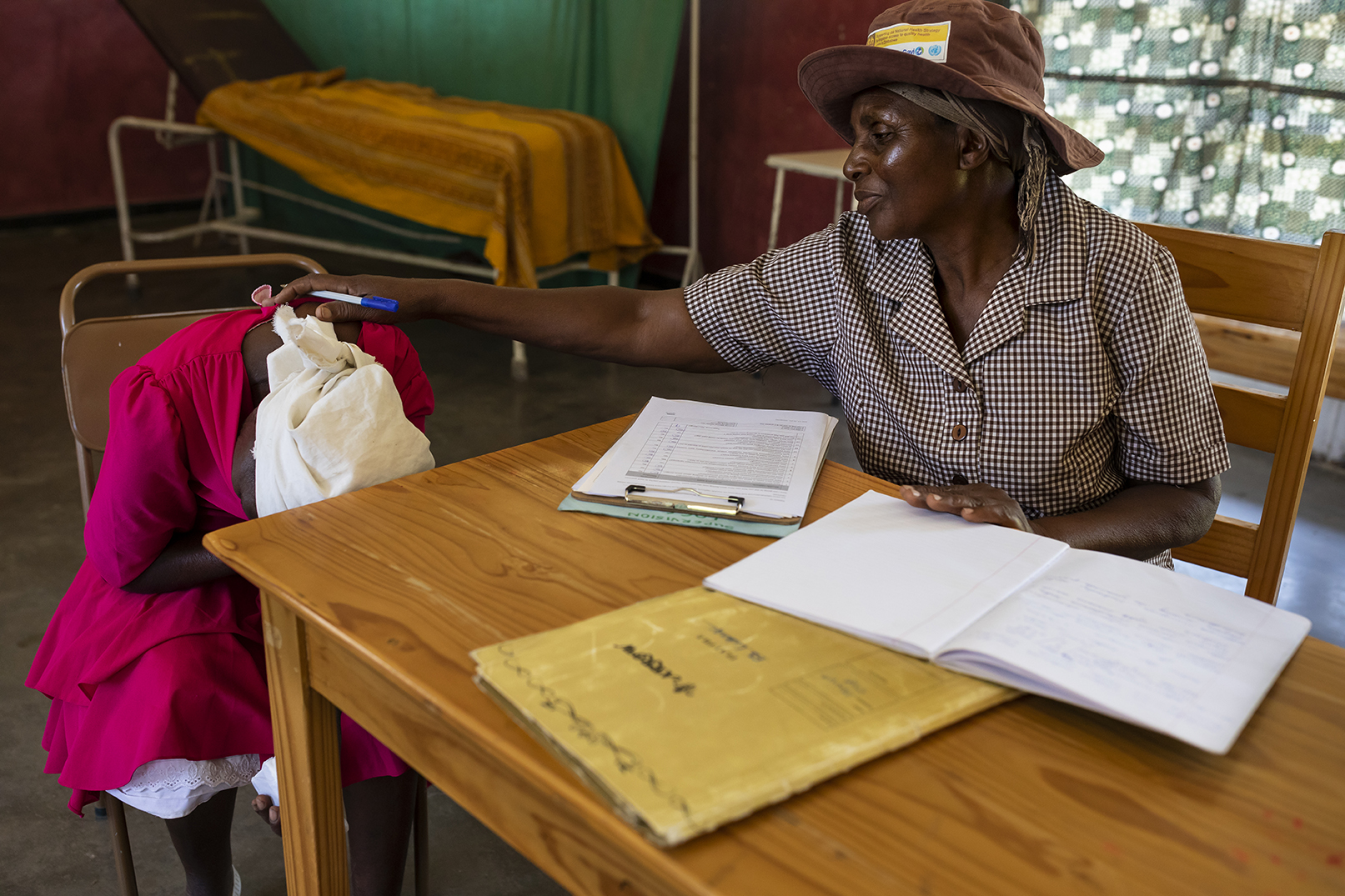

Brent Stirton
Counsellor Aleta Gukwa (L) helps her patient Apolonia to fix her house, damaged by a cyclone. They are also trying to work out a small loan to allow Apolonia to bake bread for sale. Aleta says Friendship Benches “can be immediately helpful with suicidal people and you can see the person getting better in your sessions”.
About this series
Through Zimbabwe’s Friendship Bench programme, trained volunteers counsel people with depression and other problems using principles from cognitive behavioural therapy – in the informal setting of a chat on a bench.

Birds of a Feather Flock Together

Rebekah Williams
A collage featuring Nadeem Perera (L) and Ollie Olanipekun (R), who founded Flock Together in 2020 in response to stresses caused by the pandemic and racial injustice in society. The world of birdwatching, like so many others, is overwhelmingly white.
About this series
Spending time in nature can be beneficial for mental health, and Flock Together is a London-based birdwatching club for people of colour, building a community of mutual support.
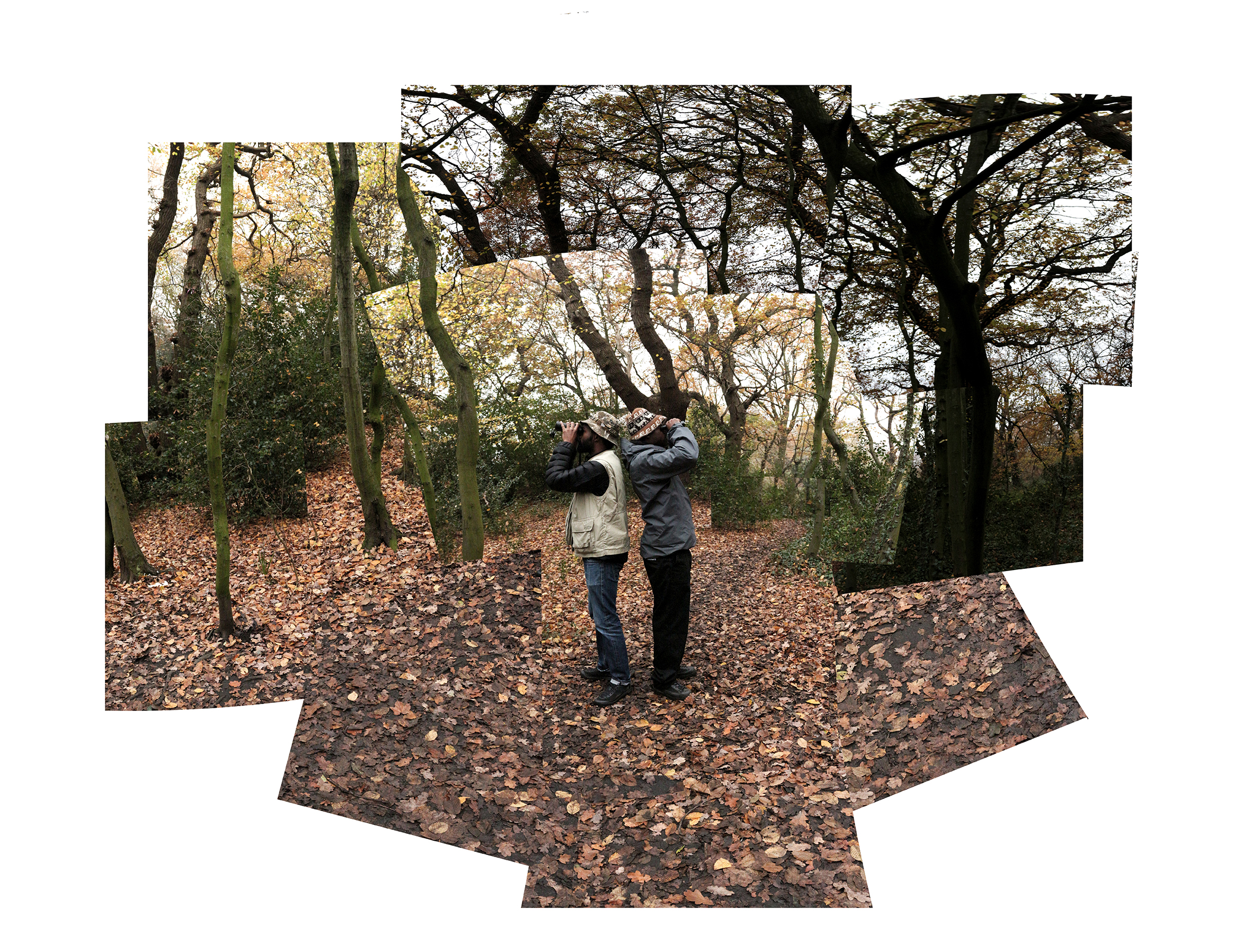

Rebekah Williams
On why a community like Flock Together is so important, Ollie says that it uses “strength in numbers”, letting people come together to create somewhere they can experience and enable growth. “When you feel safe it allows our mind to run free with ideas.”
About this series
Spending time in nature can be beneficial for mental health, and Flock Together is a London-based birdwatching club for people of colour, building a community of mutual support.


Rebekah Williams
Because of the mud, you don’t usually birdwatch lying down. But Ollie and Nadeem agreed to try it to get a change in perspective. They both expressed a sense of calm and stillness being on the ground, looking upwards into the trees.
About this series
Spending time in nature can be beneficial for mental health, and Flock Together is a London-based birdwatching club for people of colour, building a community of mutual support.
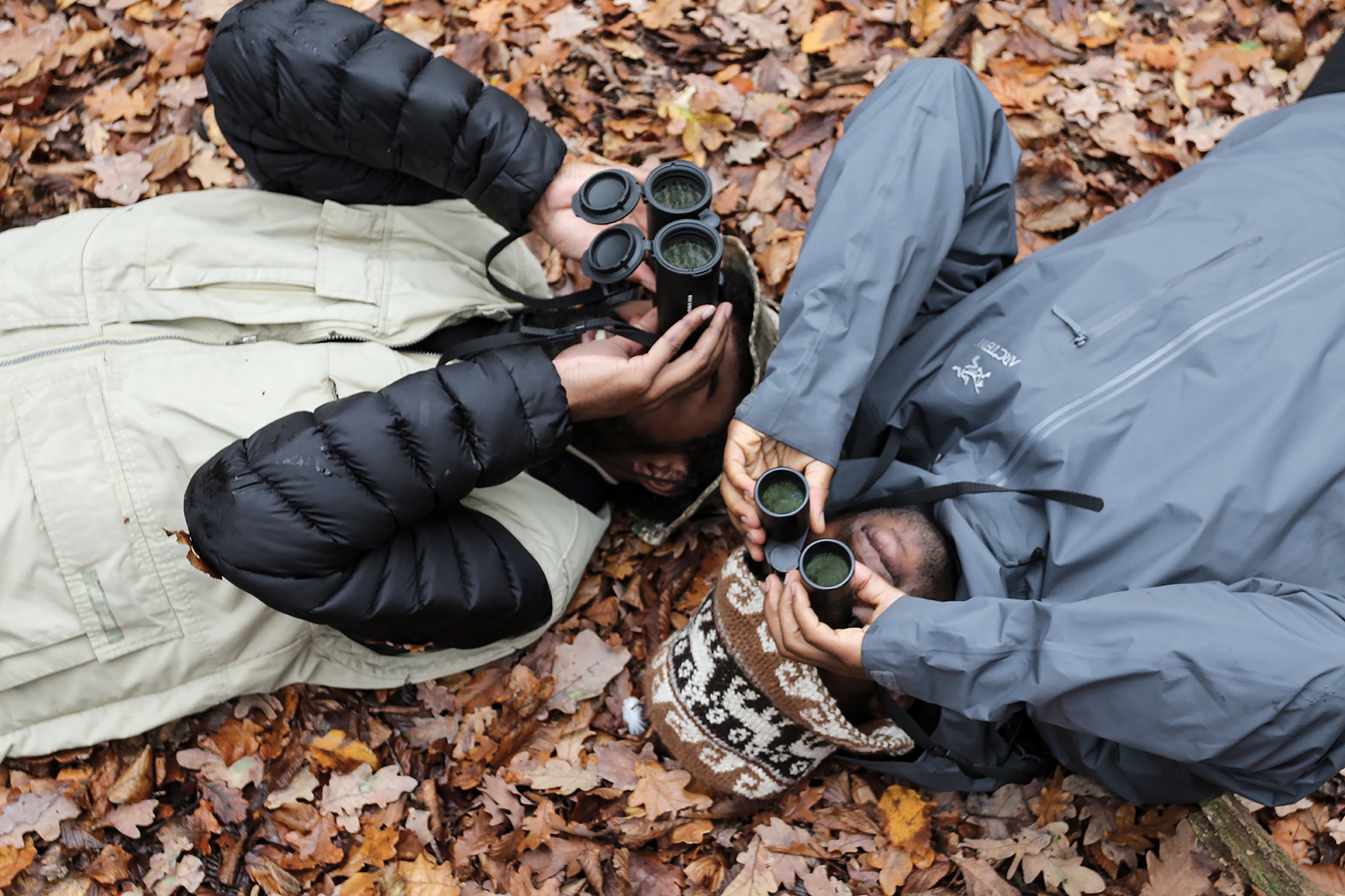

Rebekah Williams
Nadeem finds birdwatching to be immensely calming, a way to overcome mental roadblocks. “My busy mind clears when I lock onto a bird.” He wants experiences like these to be much more available to communities that have traditionally been left out.
About this series
Spending time in nature can be beneficial for mental health, and Flock Together is a London-based birdwatching club for people of colour, building a community of mutual support.
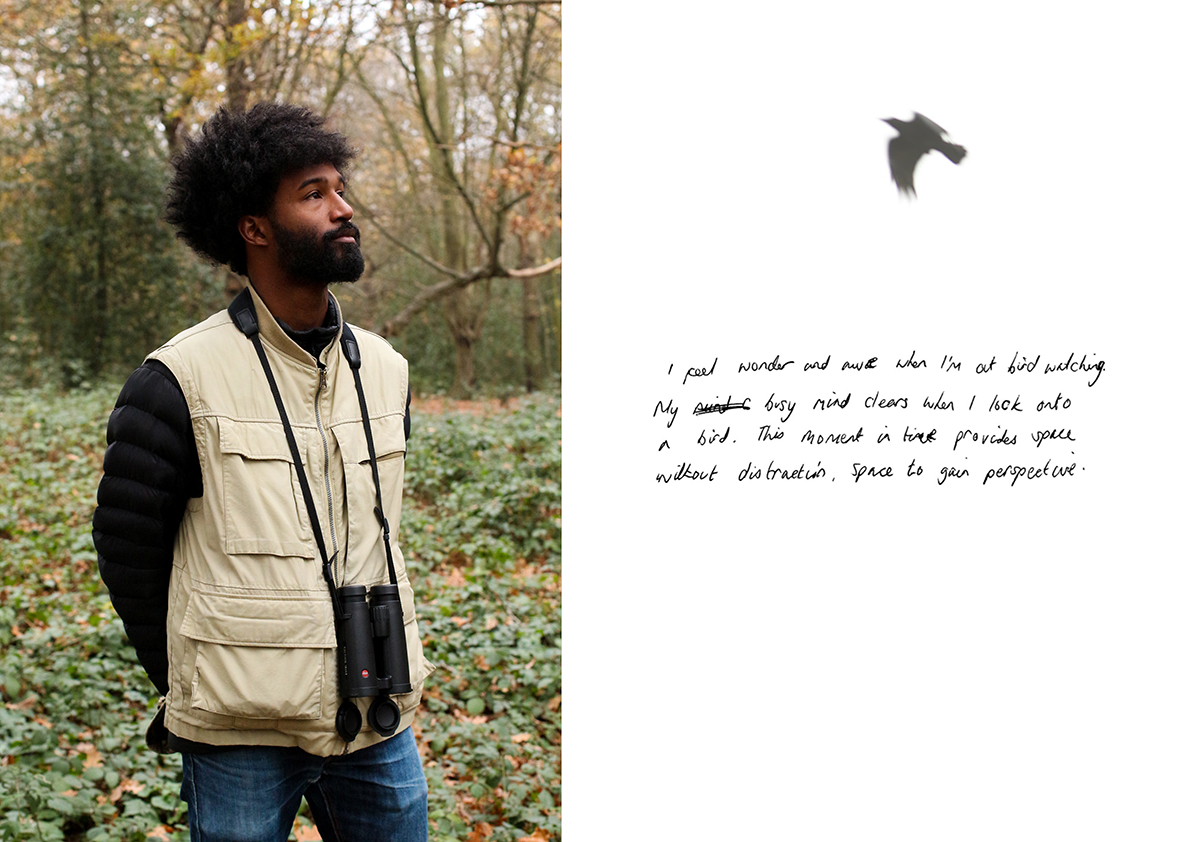

Rebekah Williams
Birdwatching requires great patience and stillness. It’s an opportunity not only to appreciate the small wonders of the ”diversity and interdependence of the natural world”, as Ollie puts it, but also to take stock and see yourself anew.
About this series
Spending time in nature can be beneficial for mental health, and Flock Together is a London-based birdwatching club for people of colour, building a community of mutual support.
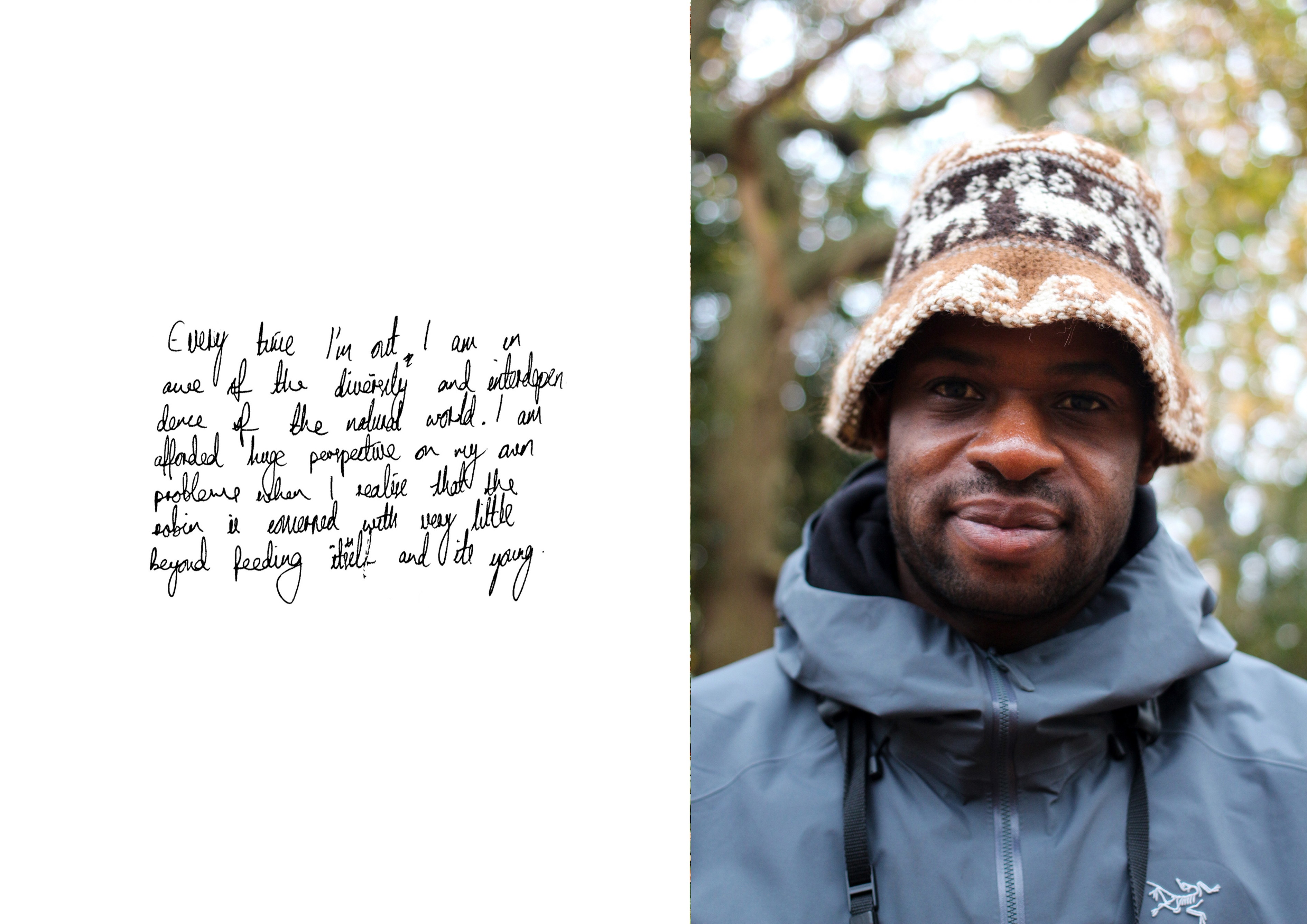
Morpheus

Agnese Carlotta Morganti
The Blue Yeti microphone is popular for ASMR, sensitive enough to capture rich and full-bodied sounds. This is in the home studio of Monica Spicciani (aka Arasulè ASMR) as she prepares for filming.
About this series
ASMR artists create videos to induce soothing, tingly sensations (known as ‘autonomous sensory meridian response’) that can help to ease stress and insomnia. Watching or just listening has become a bedtime ritual for a growing online community around the world. Morpheus documents the work of four ASMR artists in Italy.
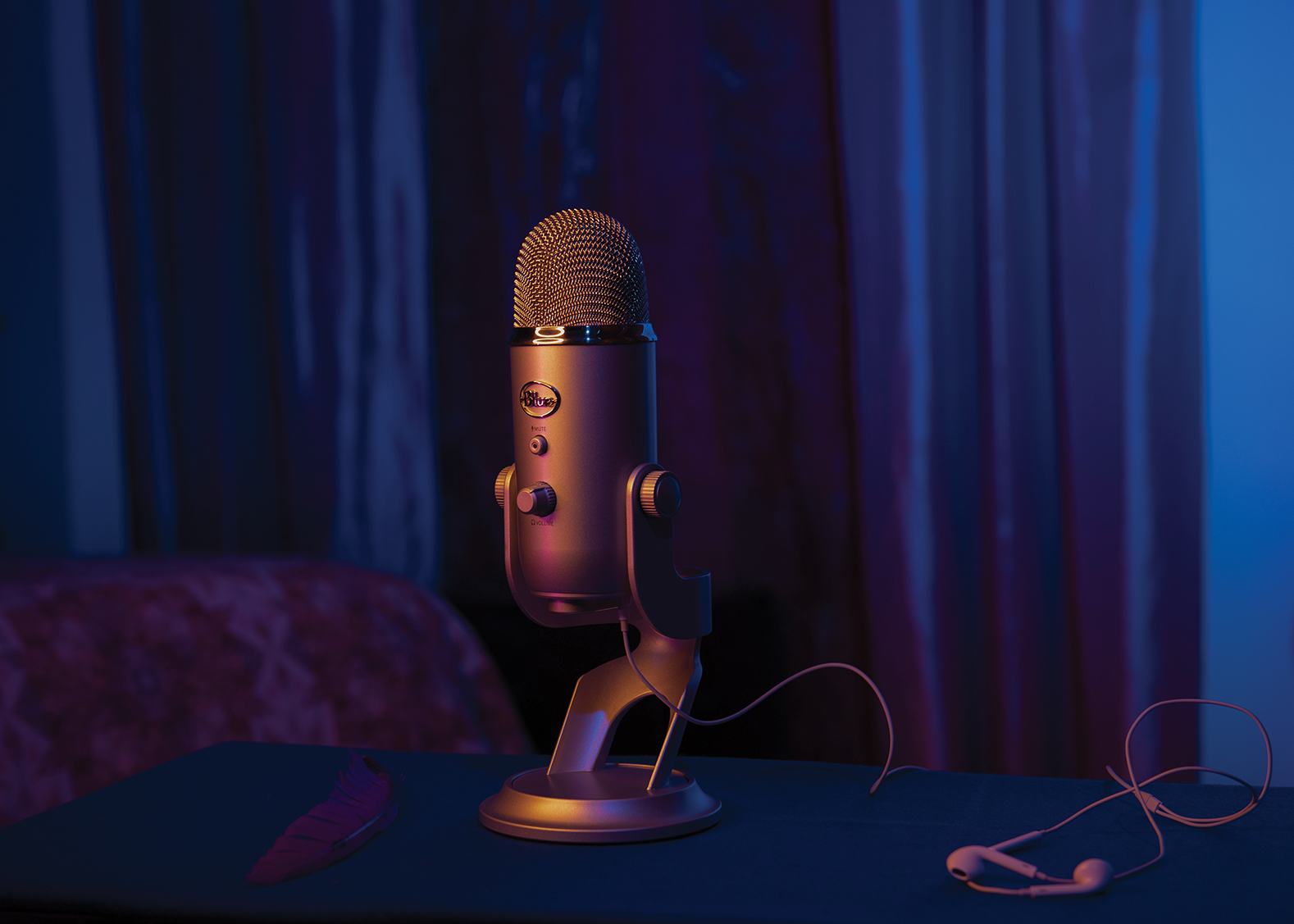

Agnese Carlotta Morganti
Starling ASMR recording a video of herself reading a story in a soft-spoken voice. Her regular viewers say that her videos – in Italian, English, or Russian – help to overcome anxiety and stress.
About this series
ASMR artists create videos to induce soothing, tingly sensations (known as ‘autonomous sensory meridian response’) that can help to ease stress and insomnia. Watching or just listening has become a bedtime ritual for a growing online community around the world. Morpheus documents the work of four ASMR artists in Italy.


Agnese Carlotta Morganti
Luca Cimaz (aka Luca ASMR) records a video where strands of paper represent the viewer’s negative thoughts. To encourage relaxation, he plucks them away one by one with a pair of tweezers.
About this series
ASMR artists create videos to induce soothing, tingly sensations (known as ‘autonomous sensory meridian response’) that can help to ease stress and insomnia. Watching or just listening has become a bedtime ritual for a growing online community around the world. Morpheus documents the work of four ASMR artists in Italy.
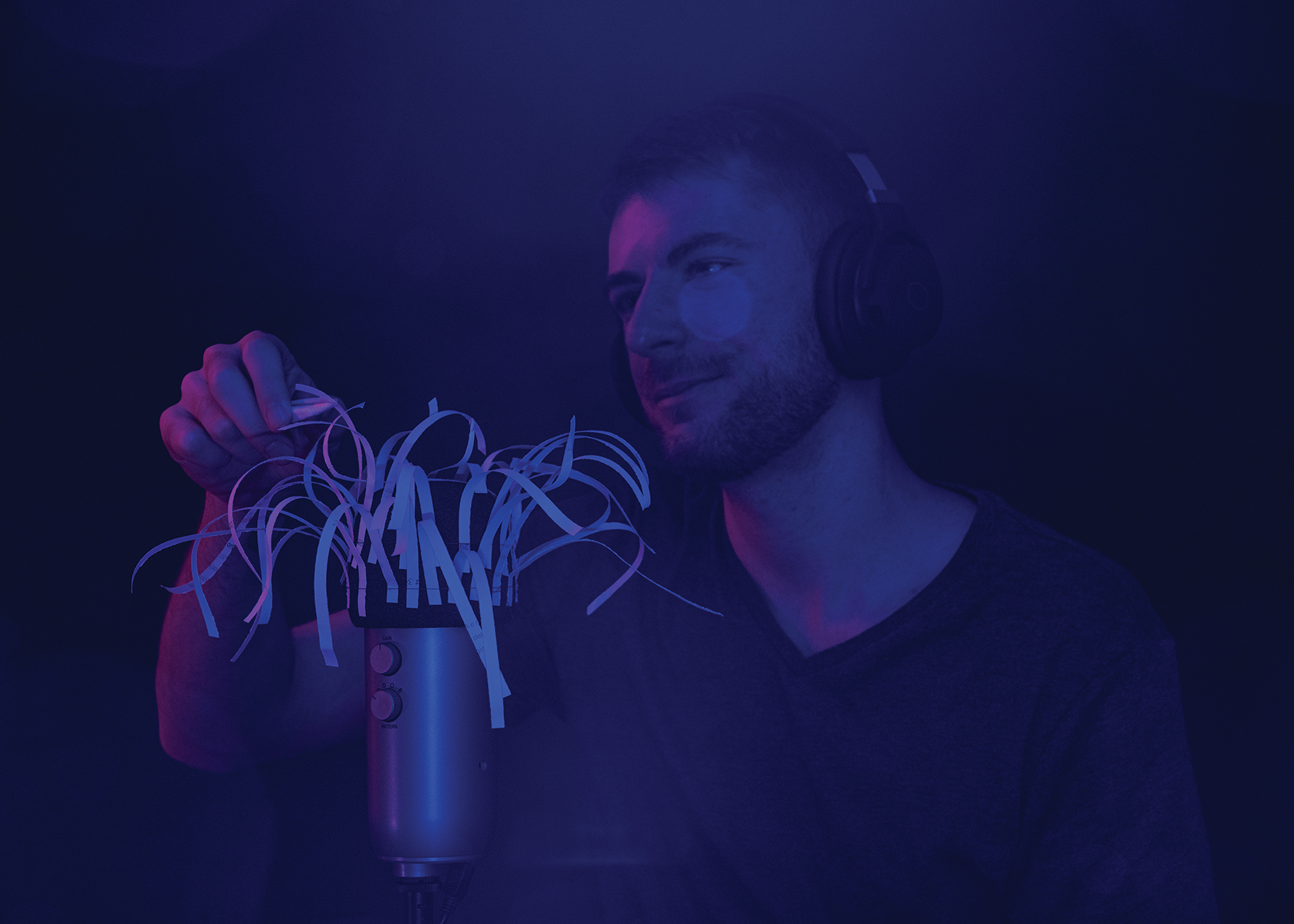

Agnese Carlotta Morganti
Alice (aka Tiny Seeds of ASMR) records a video using an old coffee grinder and beans to make soft sounds. She started creating videos in 2017, after finding that ASMR helped her through a tough time in her life.
About this series
ASMR artists create videos to induce soothing, tingly sensations (known as ‘autonomous sensory meridian response’) that can help to ease stress and insomnia. Watching or just listening has become a bedtime ritual for a growing online community around the world. Morpheus documents the work of four ASMR artists in Italy.
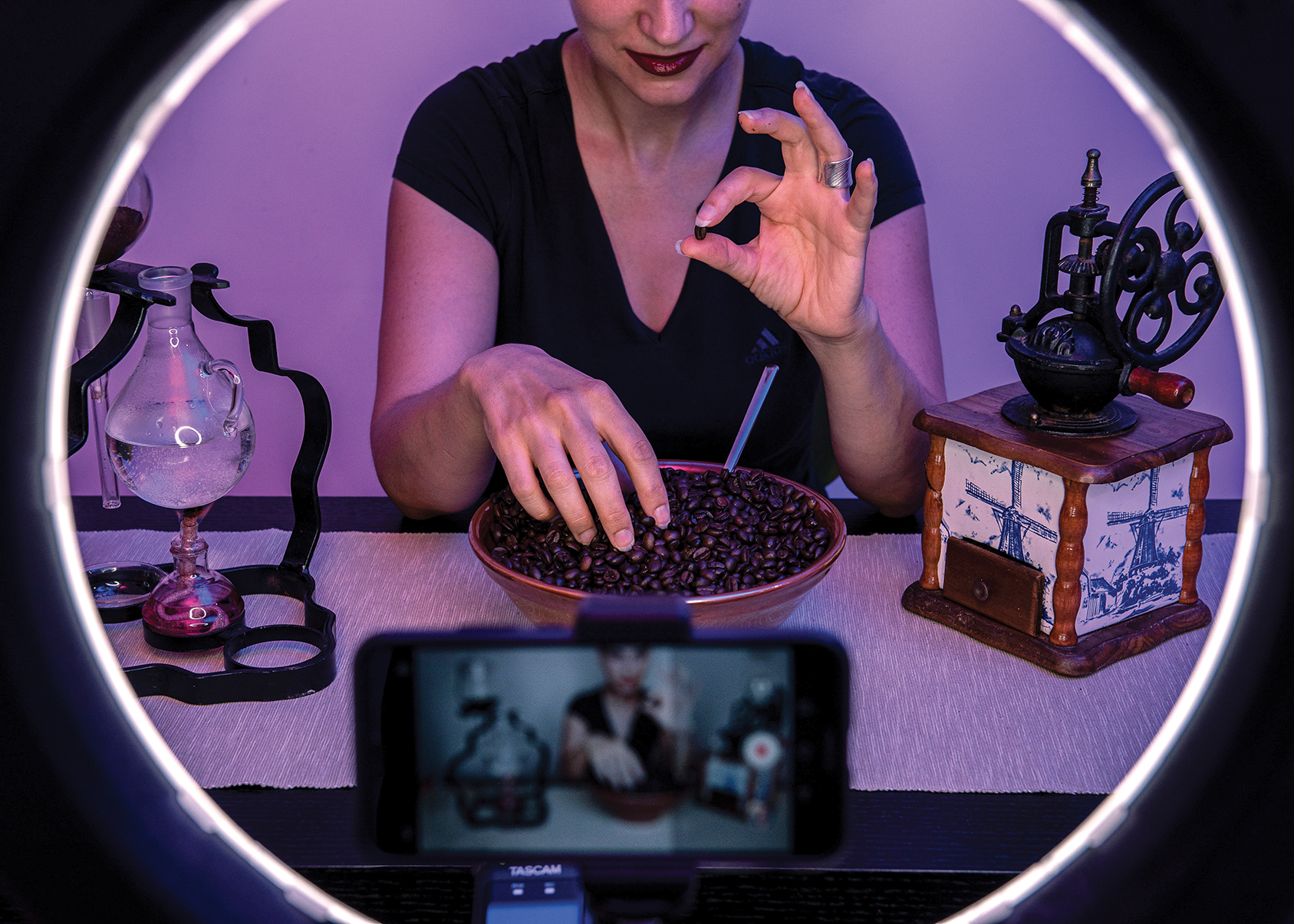

Agnese Carlotta Morganti
Monica Spicciani (aka Arasulè ASMR) takes a nap after a long recording session. Her audience is mostly young, many of them teenagers, relying on her videos to overcome experiences of anxiety.
About this series
ASMR artists create videos to induce soothing, tingly sensations (known as ‘autonomous sensory meridian response’) that can help to ease stress and insomnia. Watching or just listening has become a bedtime ritual for a growing online community around the world. Morpheus documents the work of four ASMR artists in Italy.
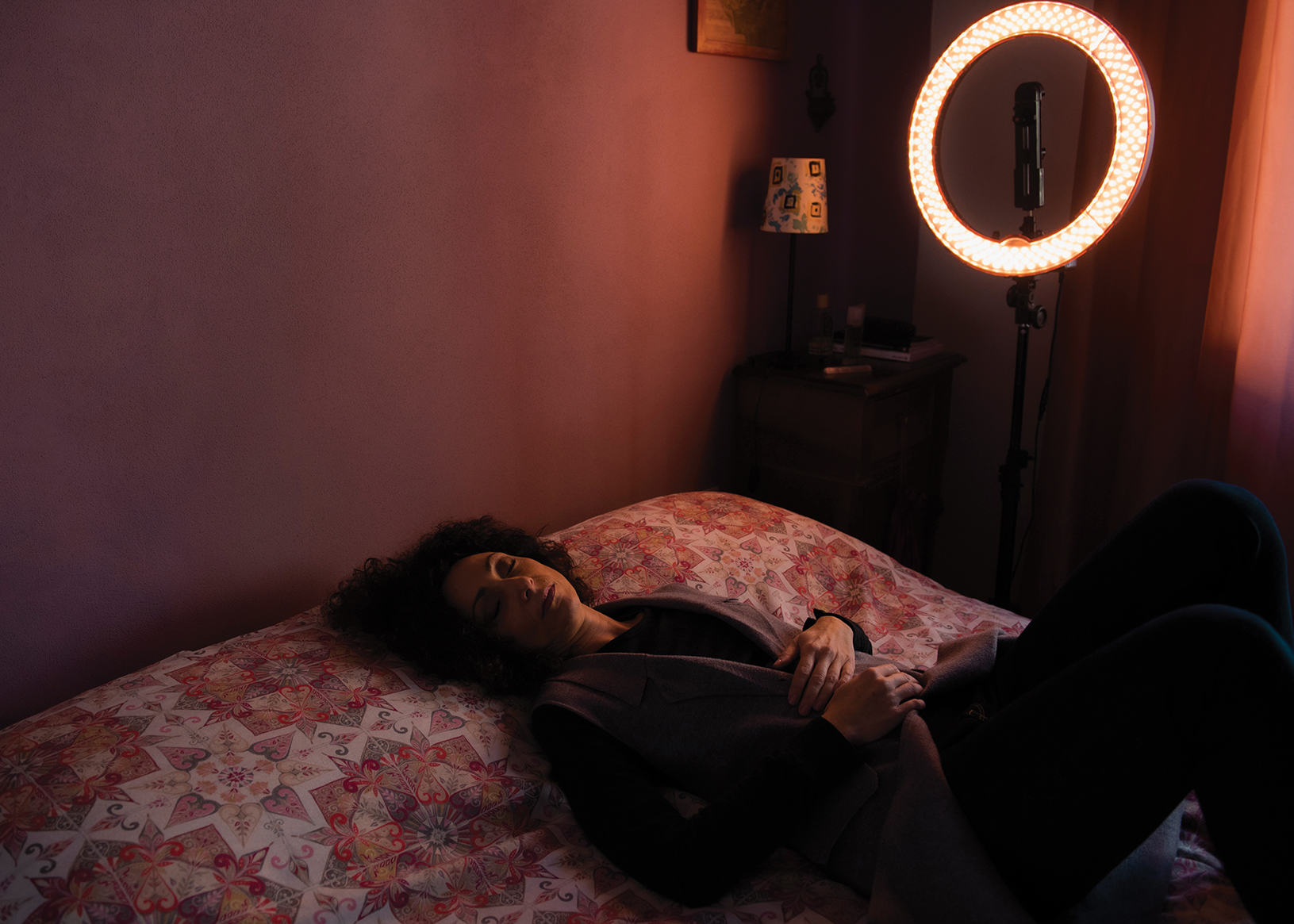
ADHD Portraits

Nora Nord
Rosie (she/her) and the pile that contains her art studio and belongings. “I wouldn’t be doing art without ADHD. I’ve learnt that my combined learning disabilities are what make me creative, and also very cheerful. The only reason ADHD is debilitating (apart from rejection sensitivity dysphoria, etc.) is because the world isn’t built for us.”
About this series
In the UK, attention deficit hyperactivity disorder (ADHD) is ill-understood and under-diagnosed. The resultant lack of support makes life so much harder, causing mental health problems. To expand the conversation, Nora Nord photographs ADHD-diagnosed queer and trans people.
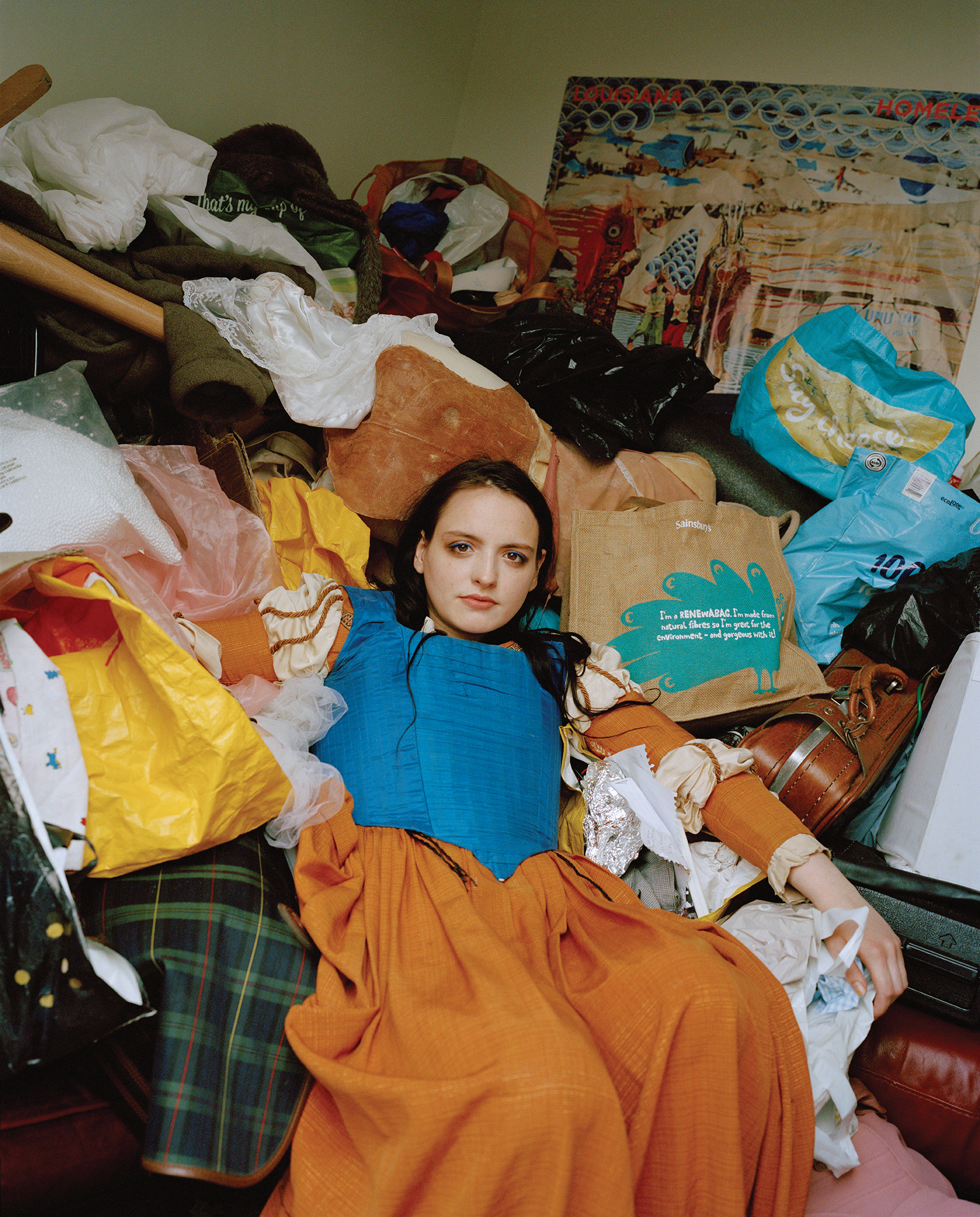

Nora Nord
Calm (she/her) has long struggled with depression and anxiety, and recently she learned she has ADHD. She says she’d always thought it was something only energetic cis white boys had. “Recently my dreams keep coming true, like clairvoyant! It made me think I’m going mad, and being here I’m like, I’m not going crazy.”
About this series
In the UK, attention deficit hyperactivity disorder (ADHD) is ill-understood and under-diagnosed. The resultant lack of support makes life so much harder, causing mental health problems. To expand the conversation, Nora Nord photographs ADHD-diagnosed queer and trans people.
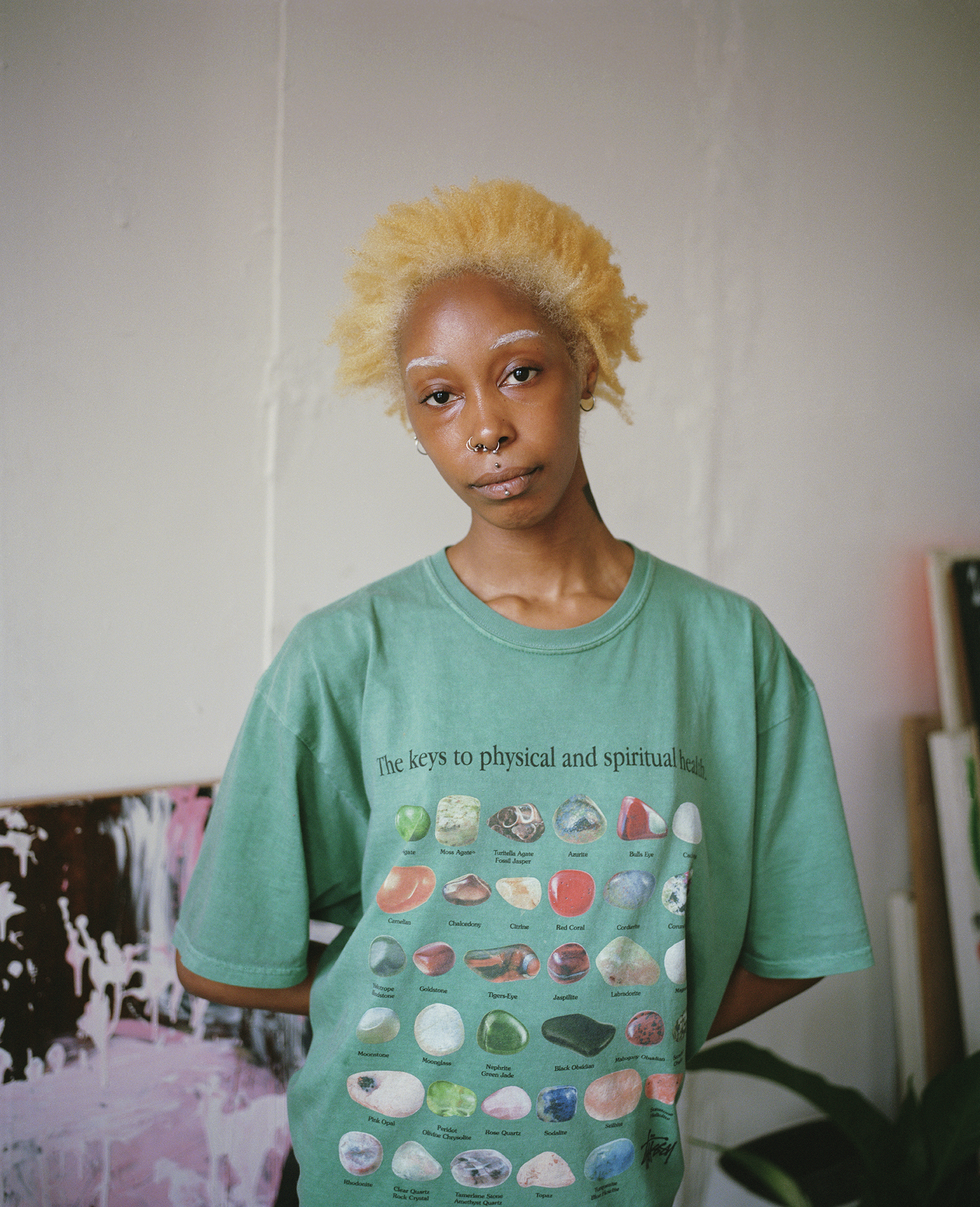

Nora Nord
Rachelle (she/her) keeps her bedroom meticulously organised, an extension of her ADHD brain, filled to the brim with ideas and creativity. “I’ve always felt like I am too intense, but now that I understand that this is a symptom of my cognitive processing I feel unapologetic about it.”
About this series
In the UK, attention deficit hyperactivity disorder (ADHD) is ill-understood and under-diagnosed. The resultant lack of support makes life so much harder, causing mental health problems. To expand the conversation, Nora Nord photographs ADHD-diagnosed queer and trans people.


Nora Nord
Jade (she/her) is a designer, milliner, model and artist. Her house and her ADHD are intimately connected. “Now and again I have to move things around for me to then reset the way I’m thinking, ‘cause otherwise, I get stuck – I literally feel like I’ve glitched.”
About this series
In the UK, attention deficit hyperactivity disorder (ADHD) is ill-understood and under-diagnosed. The resultant lack of support makes life so much harder, causing mental health problems. To expand the conversation, Nora Nord photographs ADHD-diagnosed queer and trans people.
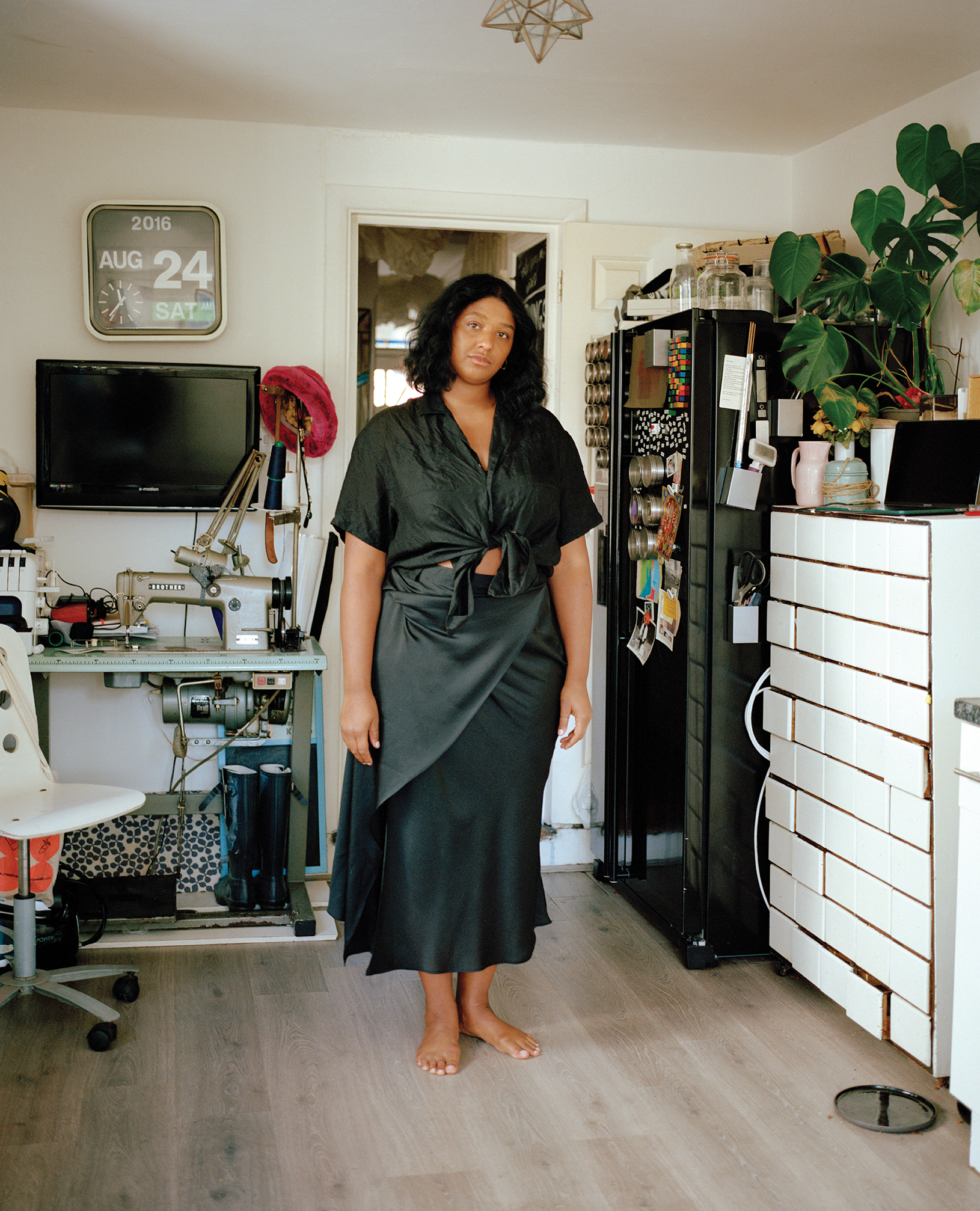

Nora Nord
June (he/him) lounges on his bed, a collage-in-process on the desk behind him. “I am super, super good at reading people. I’m good at gauging people’s emotional states quite well. I think that a lot of ADHD people are for some reason.”
About this series
In the UK, attention deficit hyperactivity disorder (ADHD) is ill-understood and under-diagnosed. The resultant lack of support makes life so much harder, causing mental health problems. To expand the conversation, Nora Nord photographs ADHD-diagnosed queer and trans people.
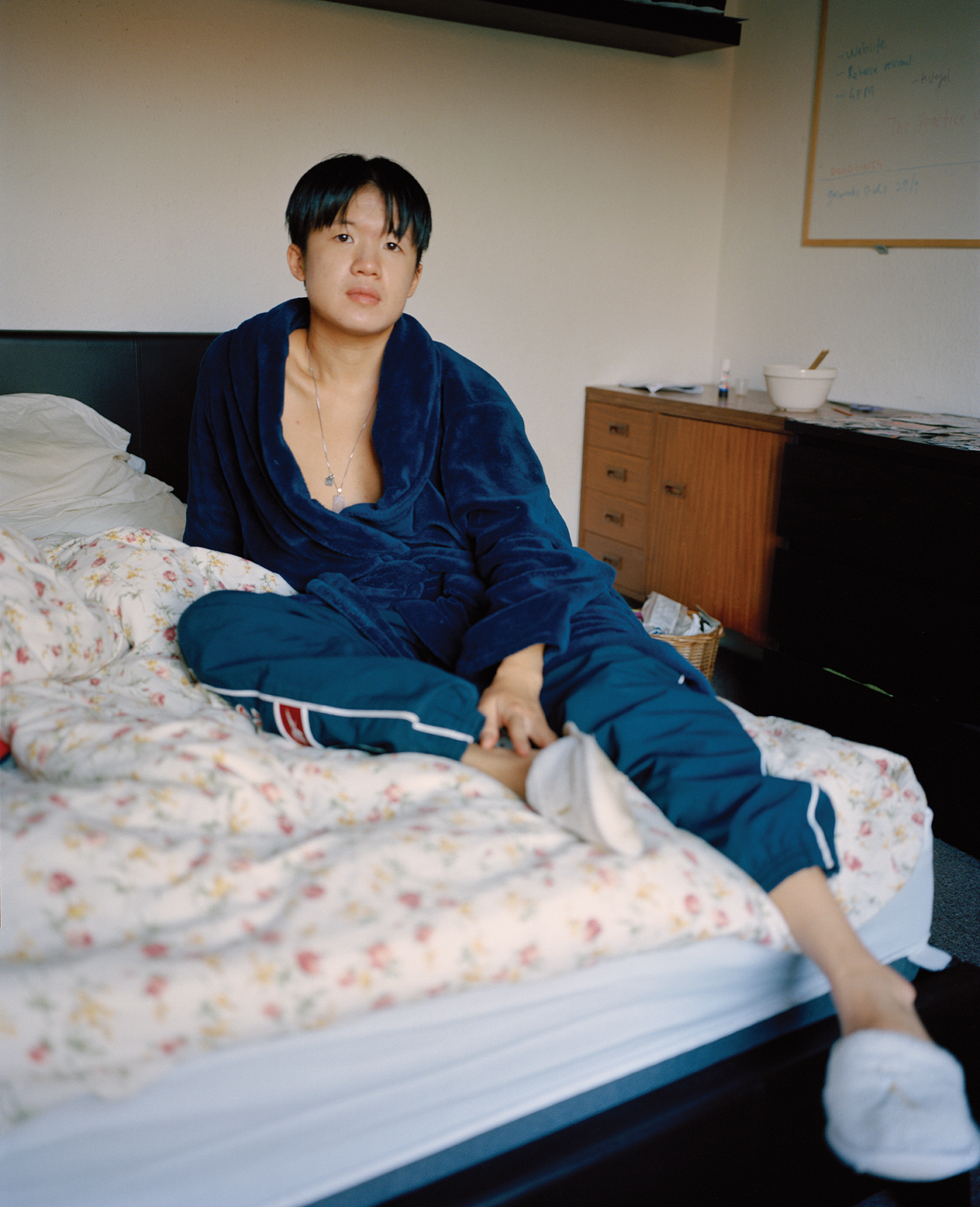
The Big Fish

Morteza Niknahad
“My mother once told me a secret about a monster she saw in her nightmares, which is why I always visualised a big dead fish on her bed.”
About this series
Inspired by a local Iranian myth, Morteza Niknahad reimagined his mother’s long-standing depression as a fish-like monster inside of her, a constant enemy to struggle against.
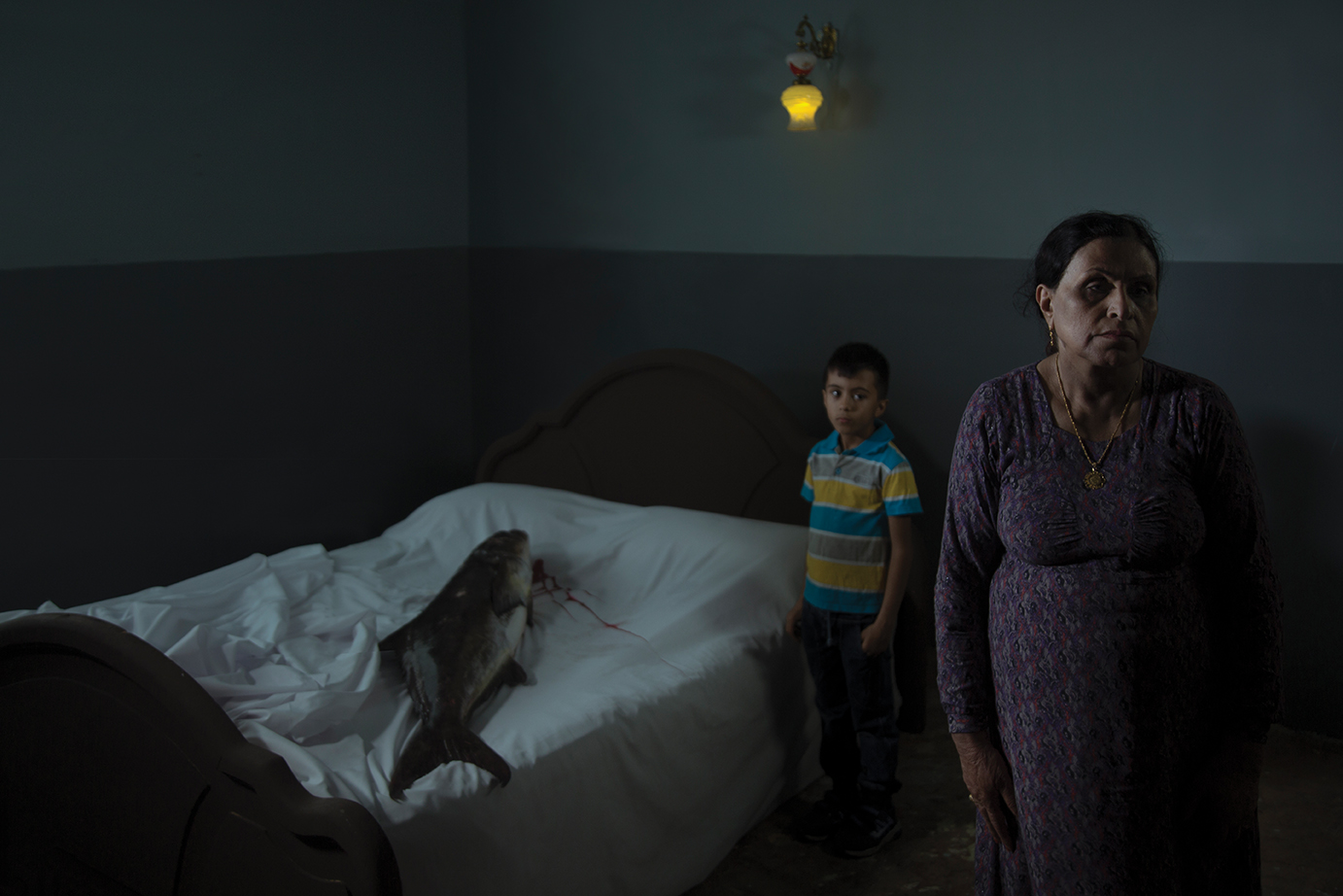

Morteza Niknahad
“My mother decided to separate from my father when we were children. But, concerned for the future of her two sons, she gave up on that decision later.”
About this series
Inspired by a local Iranian myth, Morteza Niknahad reimagined his mother’s long-standing depression as a fish-like monster inside of her, a constant enemy to struggle against.
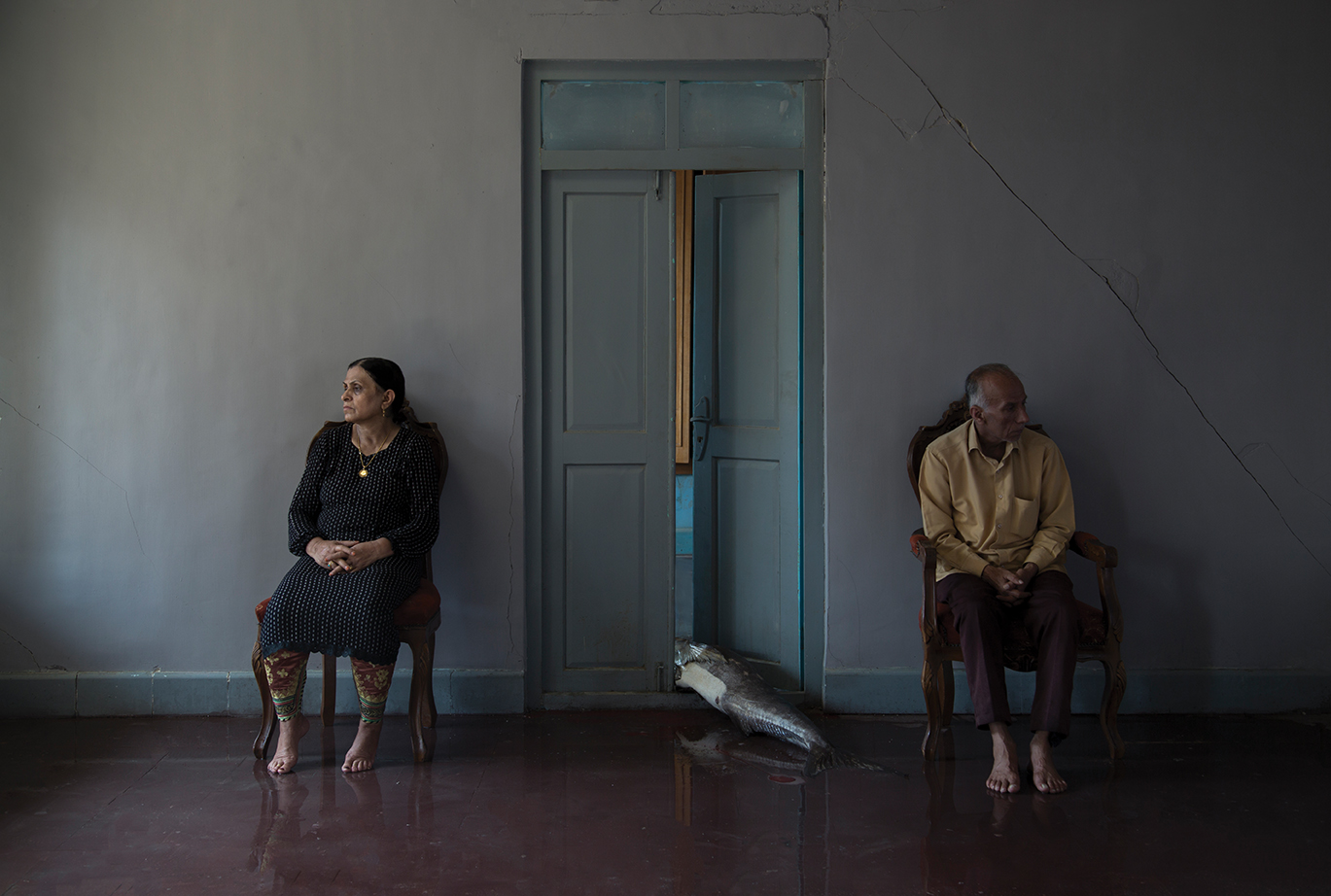

Morteza Niknahad
“In a period of 15 years, my mom lost three important members of her family: her brother’s son, Ali, her brother, Hossein, and her daughter-in-law, Masoumeh.”
About this series
Inspired by a local Iranian myth, Morteza Niknahad reimagined his mother’s long-standing depression as a fish-like monster inside of her, a constant enemy to struggle against.
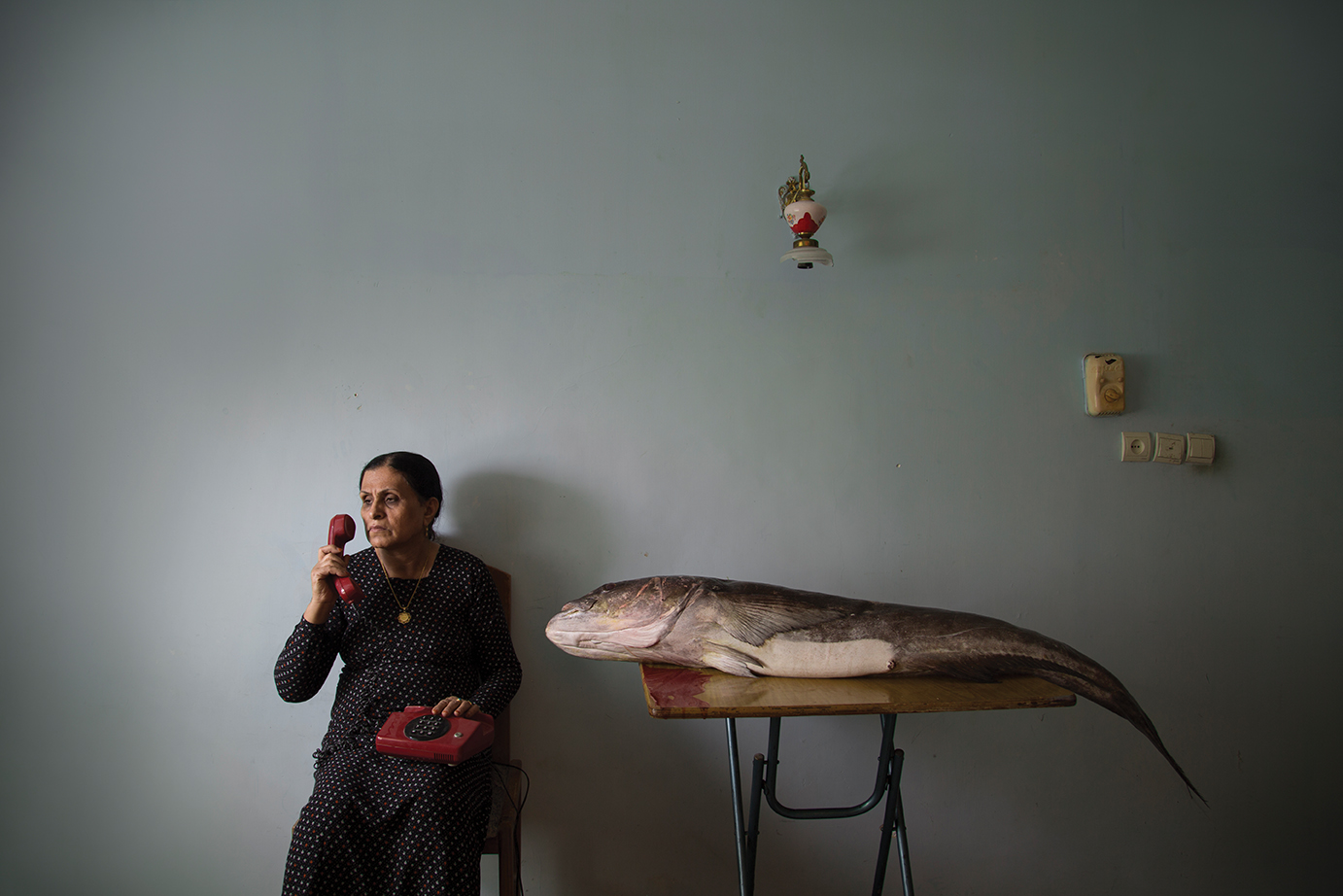

Morteza Niknahad
“When I looked at our family photos, I always saw that my mother was looking away from the camera. I was the only person who knew why, because I knew a secret.”
About this series
Inspired by a local Iranian myth, Morteza Niknahad reimagined his mother’s long-standing depression as a fish-like monster inside of her, a constant enemy to struggle against.
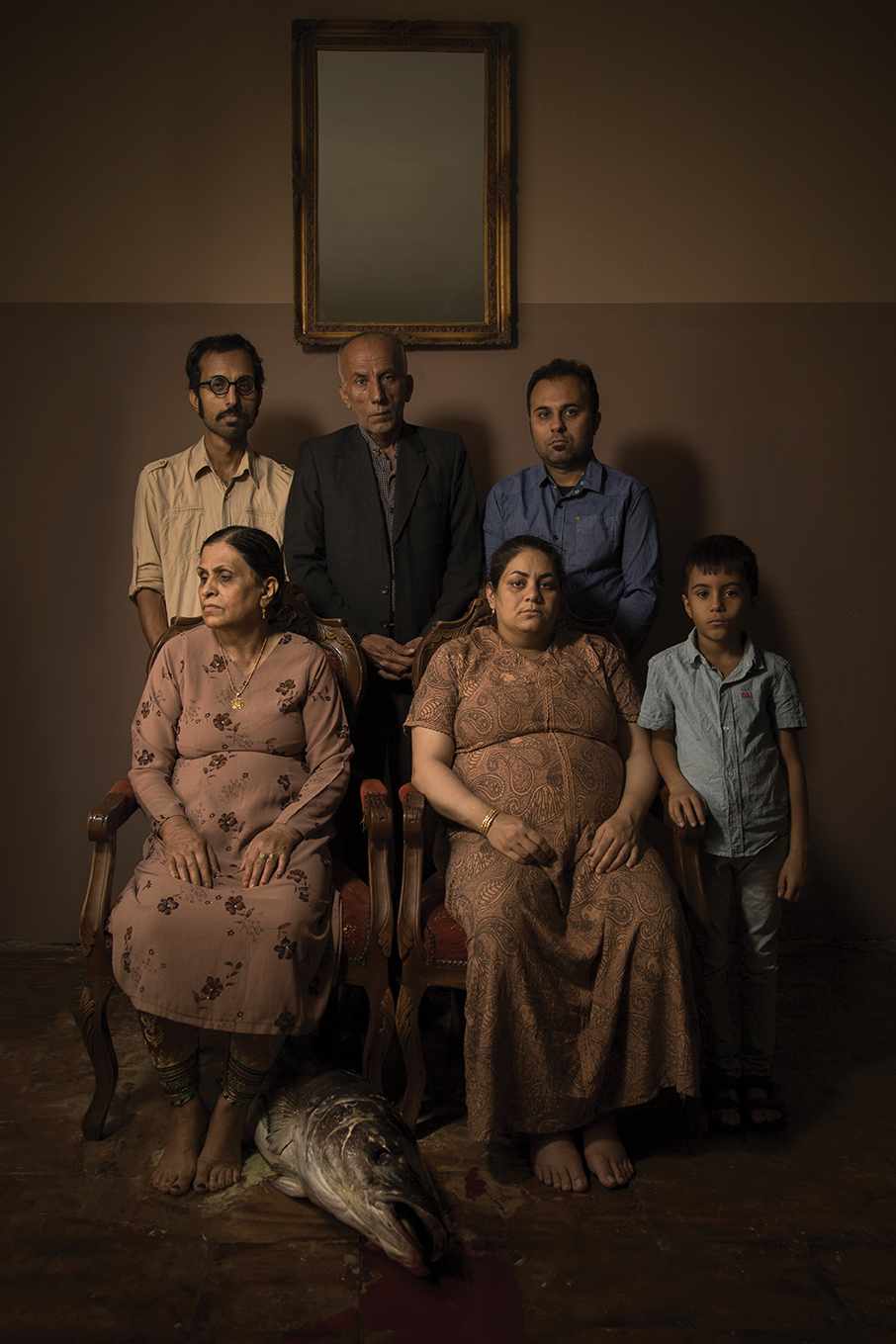

Morteza Niknahad
“When I was a teenager I used to take everyone’s picture. After printing the photos, I realised they all had something in common: my mom was always looking away from the lens. At that time I thought it was by accident, but when I grew up I realised there was a mystery I didn’t know about.”
About this series
Inspired by a local Iranian myth, Morteza Niknahad reimagined his mother’s long-standing depression as a fish-like monster inside of her, a constant enemy to struggle against.
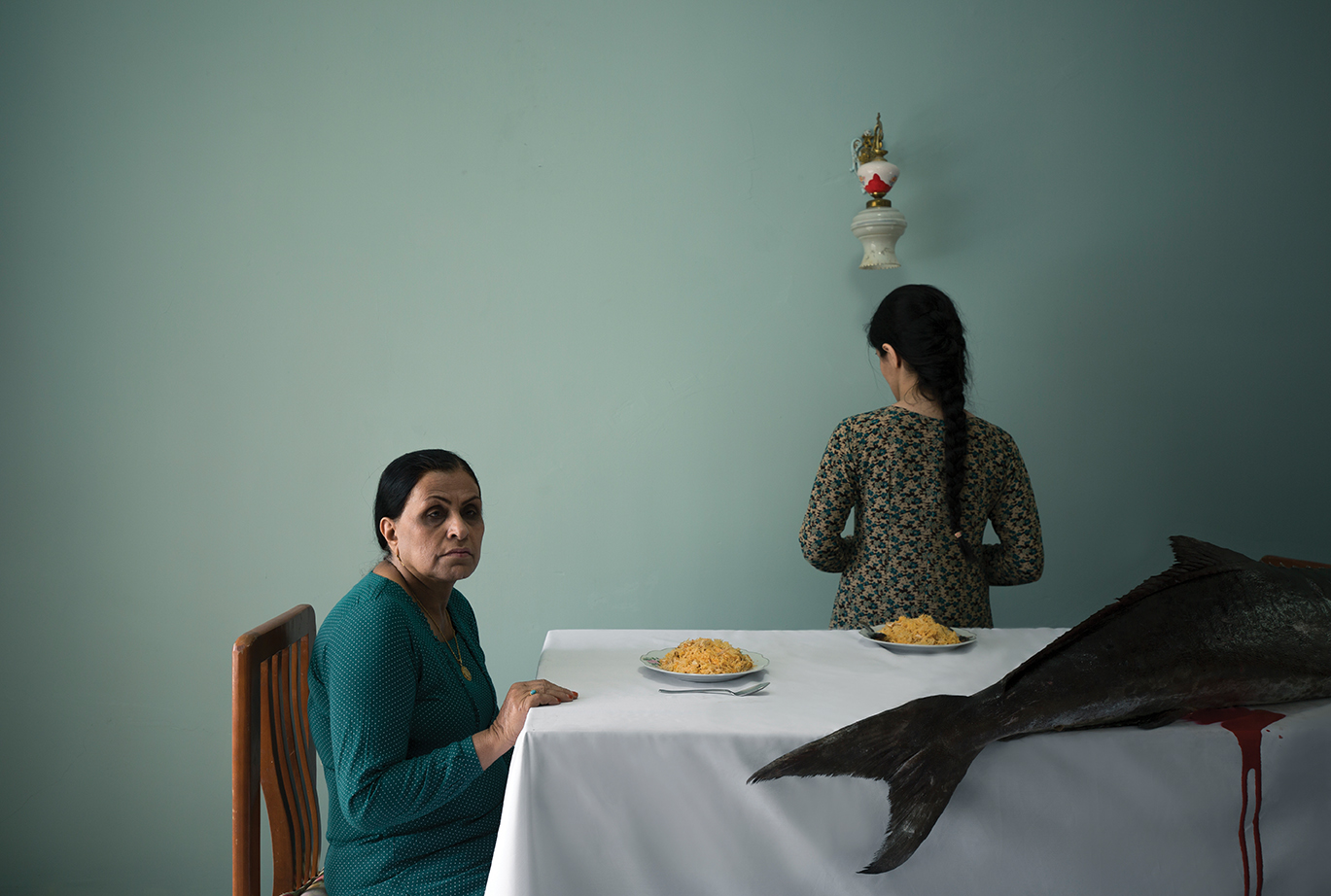
The photos in these categories naturally focus on Covid-19. The pandemic has affected people’s lives all over the world, and here we see some of those effects up close and personal. From the ceaseless efforts of frontline workers to the ordinary people from all walks of life, these stories also show how Covid has complicated other issues, like cancer treatment, the denial of trans rights, and war. We even get to glimpse where pandemics come from.
Fighting Infections (single image)
Aly Song
The global fight against Covid-19 has been enormous, deploying many different tactics. Here, in Wuhan, China – near where the pandemic started – in April 2020, volunteers are disinfecting the Qintai Grand Theatre. They work for the Blue Sky Rescue team, the largest humanitarian NGO in China. As the pandemic has progressed, we have learned more about which measures are most effective. Some may do more to boost public confidence than prevent the spread of the virus.

Hadi Dehghanpour
Covid-19 and social distancing rules have disrupted life in so many ways, causing families all over the world to miss out on countless special occasions. This staged picture in Sabzevar, Iran, imagines how a bride and groom would have to interact if they were kept apart. No wedding ceremony, no cheering guests, no kiss. Love will have to adapt.
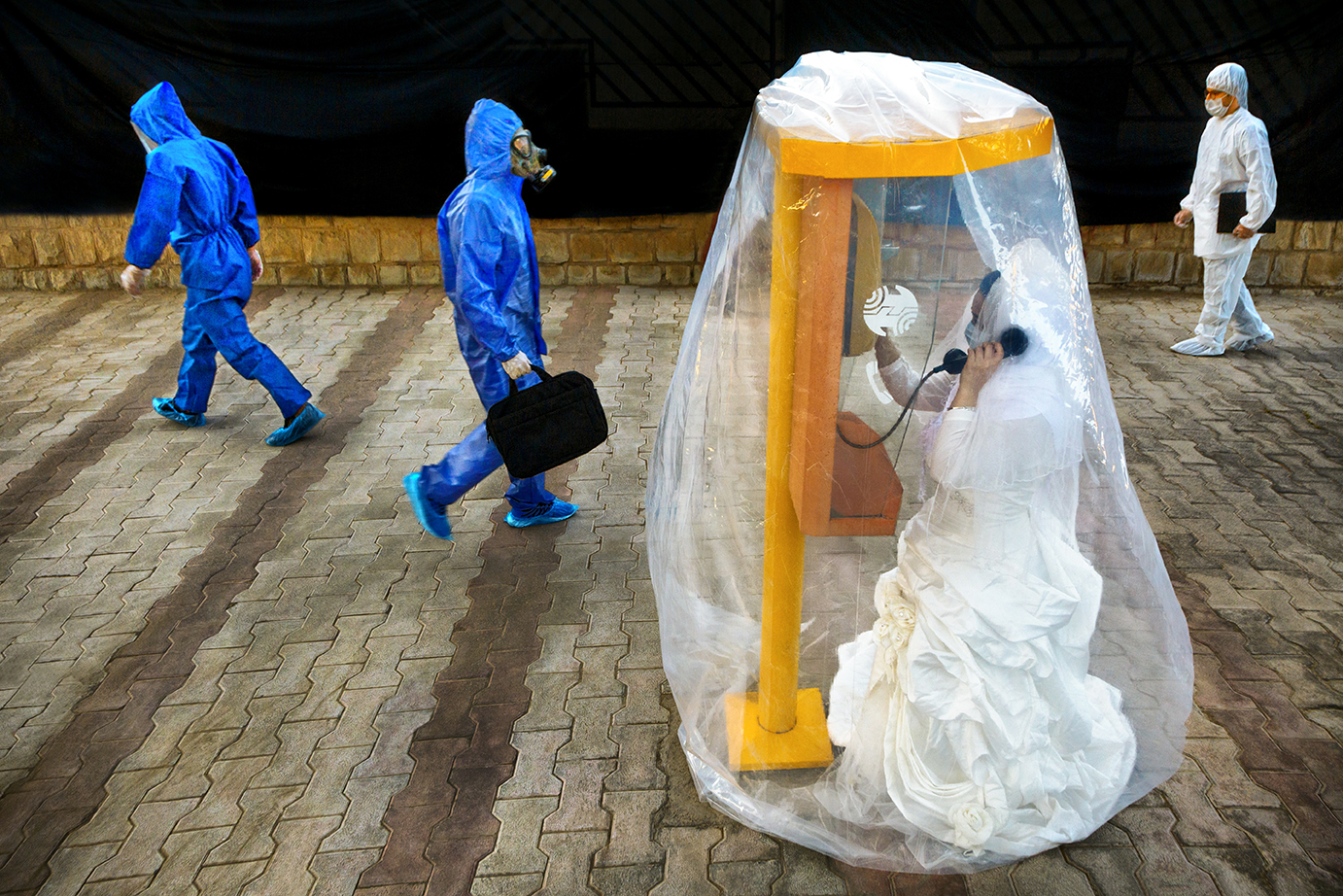

Max Cavallari
Just when we need each other the most, we have to stay apart. The Covid-19 pandemic compounds fear with loneliness. But in a nursing home in Castelfranco Veneto, northern Italy, staff found an answer: they use plastic sheeting to help residents reunite with their families, like this mother and daughter. “It was like opening a pressure cooker,” the daughter says. “Hugging my mother after eight months reminded me of a feeling I had long forgotten.”
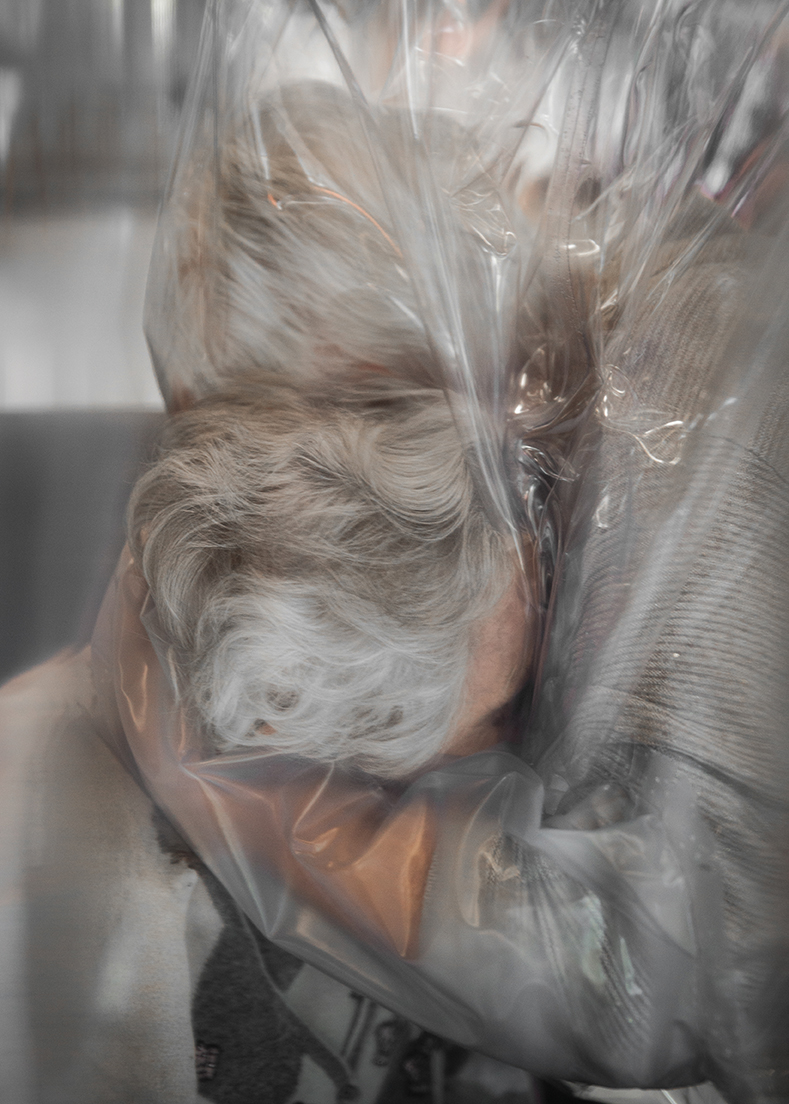

Richard Boll
A pandemic isn’t just a disease, it’s something that complicates all sorts of other health conditions. During the first UK lockdown, Richard Boll’s wife Louise was having chemotherapy for breast cancer. Her compromised immune system put her at extremely high risk, which meant strict self-isolation at their home in Hove. It was an incredibly hard time for Louise, but she is now close to full recovery. Richard says: “I look forward to a time when all that remains of this experience is some scar tissue and this photograph.”


Sudipto Das
It’s exhausting. A tram conductor in Kolkata, India, wears protective clothing from head to toe even in the heat of a summer afternoon. This was when restrictions were easing after India’s first Covid-19 lockdown – public transport was running, but staff were advised to suit up like this. We’ve all grown used to saluting the efforts of healthcare workers, but plenty of other people in public-facing jobs have performed gruelling duties too to keep people safe.

Fighting Infections (series)
The Next Pandemic

Hugh Kinsella Cunningham
Fidel Bahati and Bonus the bloodhound, part of the ‘Congo Hounds’ sniffer dogs unit in Virunga National Park. By patrolling this conservation zone, they protect the wildlife from poachers and others, and they protect the global human population from the risk of a new virus jumping species.


Hugh Kinsella Cunningham
Aerial views of bush fires started by farmers in Kwilu province. Destruction of habitat can force animals to move into new areas and come into contact with human beings for the first time, increasing the dangers of spreading viruses.


Hugh Kinsella Cunningham
A pangolin captured by hunters in the Ituri rainforest. The animal trade can be lucrative, as Congo hosts many exotic animals including pangolins – suspected to be involved in the emergence of the novel coronavirus. But hunting means more human contact with these animals and any pathogens they carry.
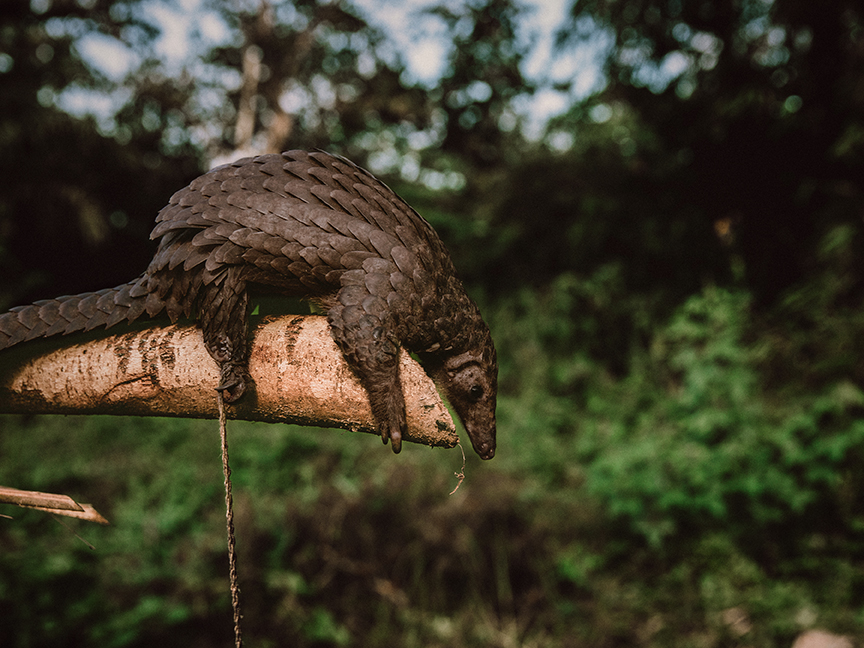

Hugh Kinsella Cunningham
An Mbuti boy runs through the Ituri rainforest. Numerous communities live here alongside the huge variety of wildlife, hunting on a small scale. Contact between these people and animals is a daily fact of life.
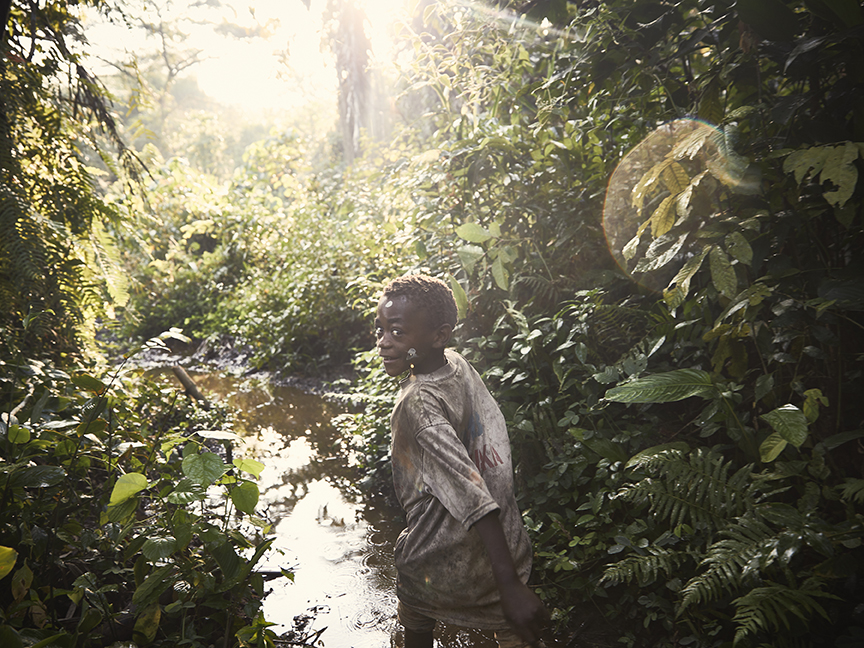

Hugh Kinsella Cunningham
Muzuka is a six-year-old mountain gorilla. She was rescued from a poacher’s snare, losing her foot in the process. Virunga National Park operates a shelter for gorillas that have been orphaned or rescued, giving them a safe place to live, free of intrusive human contact.

2 Metres: Masked Portraits on Ridley Road

Gideon Mendel (assisted by Maria Quigley)
100 portraits of community members, shot during the 104 days of the first UK lockdown. “Most of the people I approached were keen to be photographed, feeling that they wanted to advocate mask wearing to fight the virus,” says Gideon Mendel.
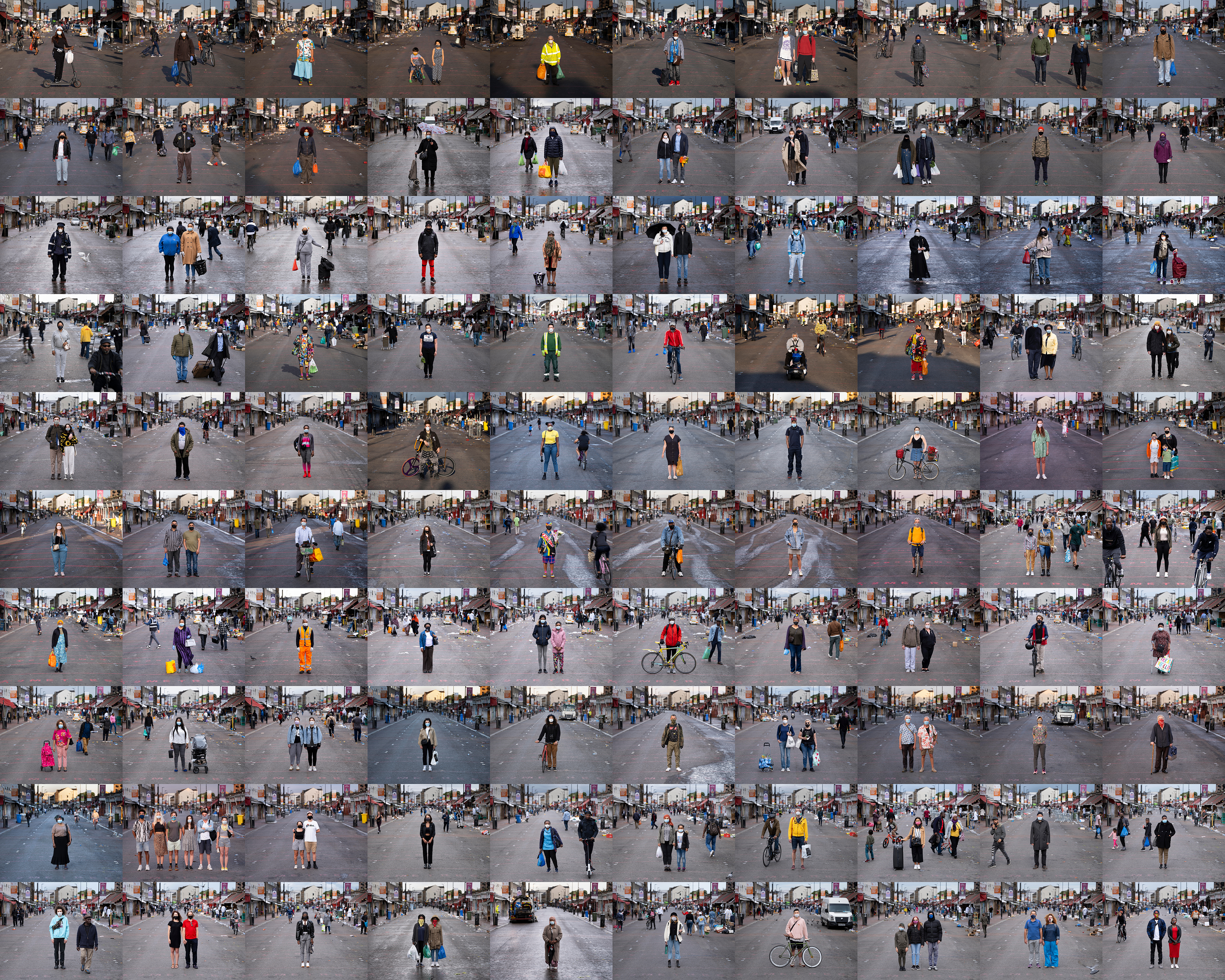

Gideon Mendel (assisted by Maria Quigley)
Elam Forrester, film maker. “Everything stopped at the end of March. I got a mild version of the virus and isolated myself beyond the recommended time as I had lost my sense of taste and smell. Keeping one’s distance in shops, buses and busy streets is challenging so wearing a mask feels like the safest option.”
About this series
Portraits taken during the UK’s first lockdown on Ridley Road in Hackney, east London. It’s usually the site of a bustling market, but its hours were restricted and distancing lines were painted on the road.
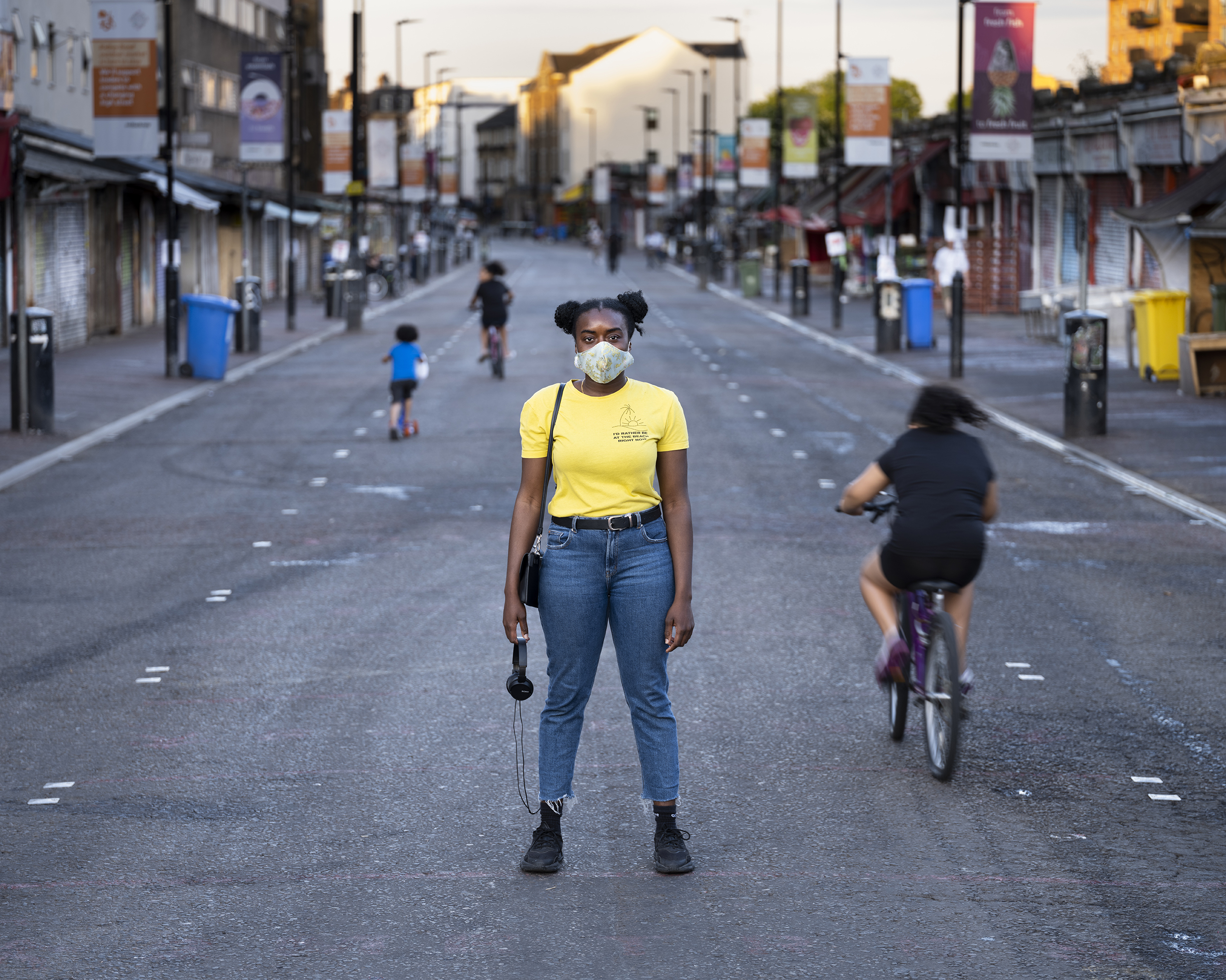

Gideon Mendel (assisted by Maria Quigley)
Angie Pieters, client success manager. “In March I got the virus and isolated for over 3 weeks. Luckily the symptoms were mild and I got better soon. I realise I’ve had an easy ride compared to others. No one in my inner circle has had a severe case, I still have my job and I’ve got a roof over my head.”
About this series
Portraits taken during the UK’s first lockdown on Ridley Road in Hackney, east London. It’s usually the site of a bustling market, but its hours were restricted and distancing lines were painted on the road.
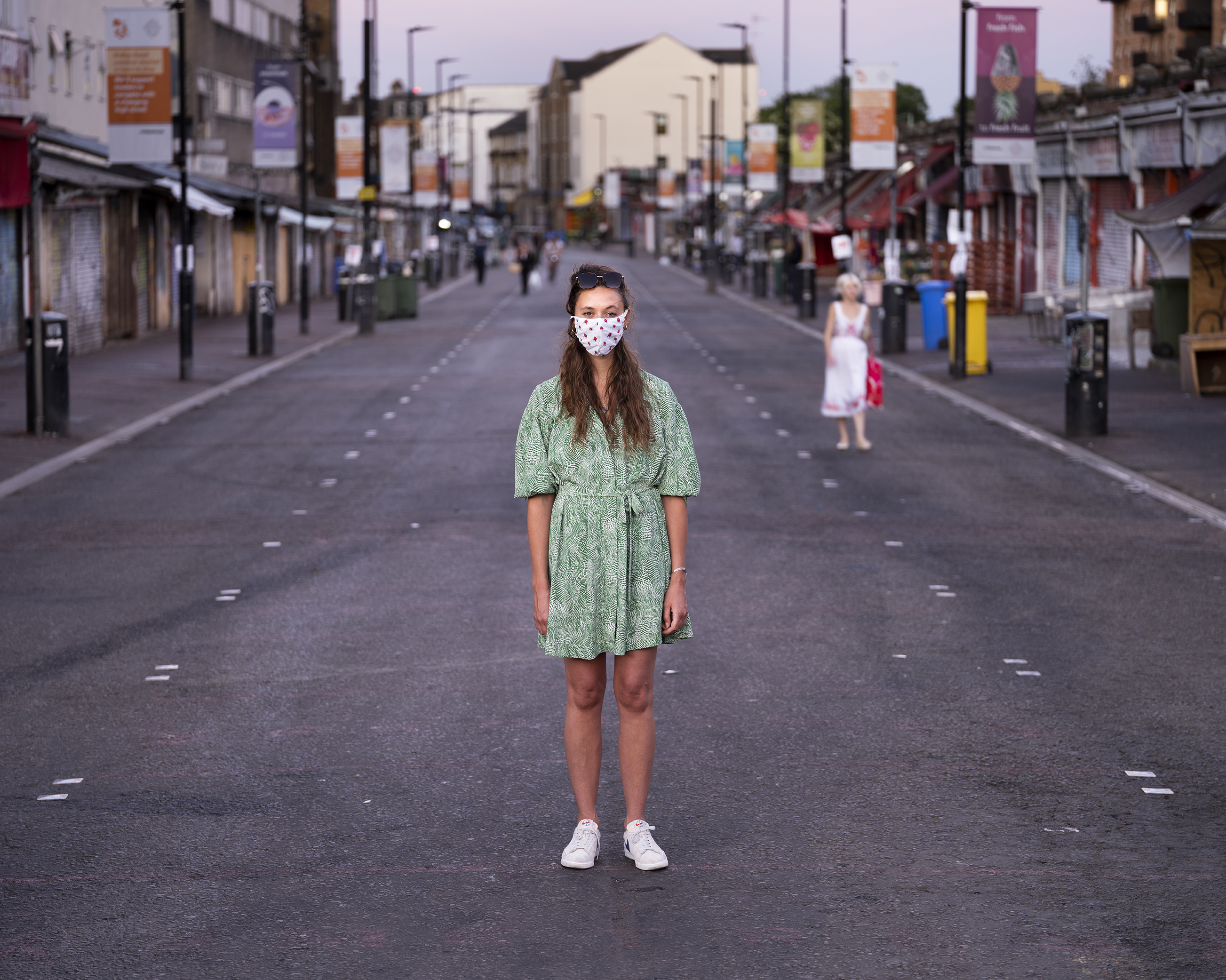

Gideon Mendel (assisted by Maria Quigley)
Sandra Odalipo, charity volunteer. “I’m an asylum seeker and as soon as the lockdown came I was housed into Queen Mary’s hostel. I couldn’t believe that one could be locked in a place for such a long time. I have health problems so I am vulnerable. When I go out I cover all my body and my face – to save myself and save people around me.”
About this series
Portraits taken during the UK’s first lockdown on Ridley Road in Hackney, east London. It’s usually the site of a bustling market, but its hours were restricted and distancing lines were painted on the road.
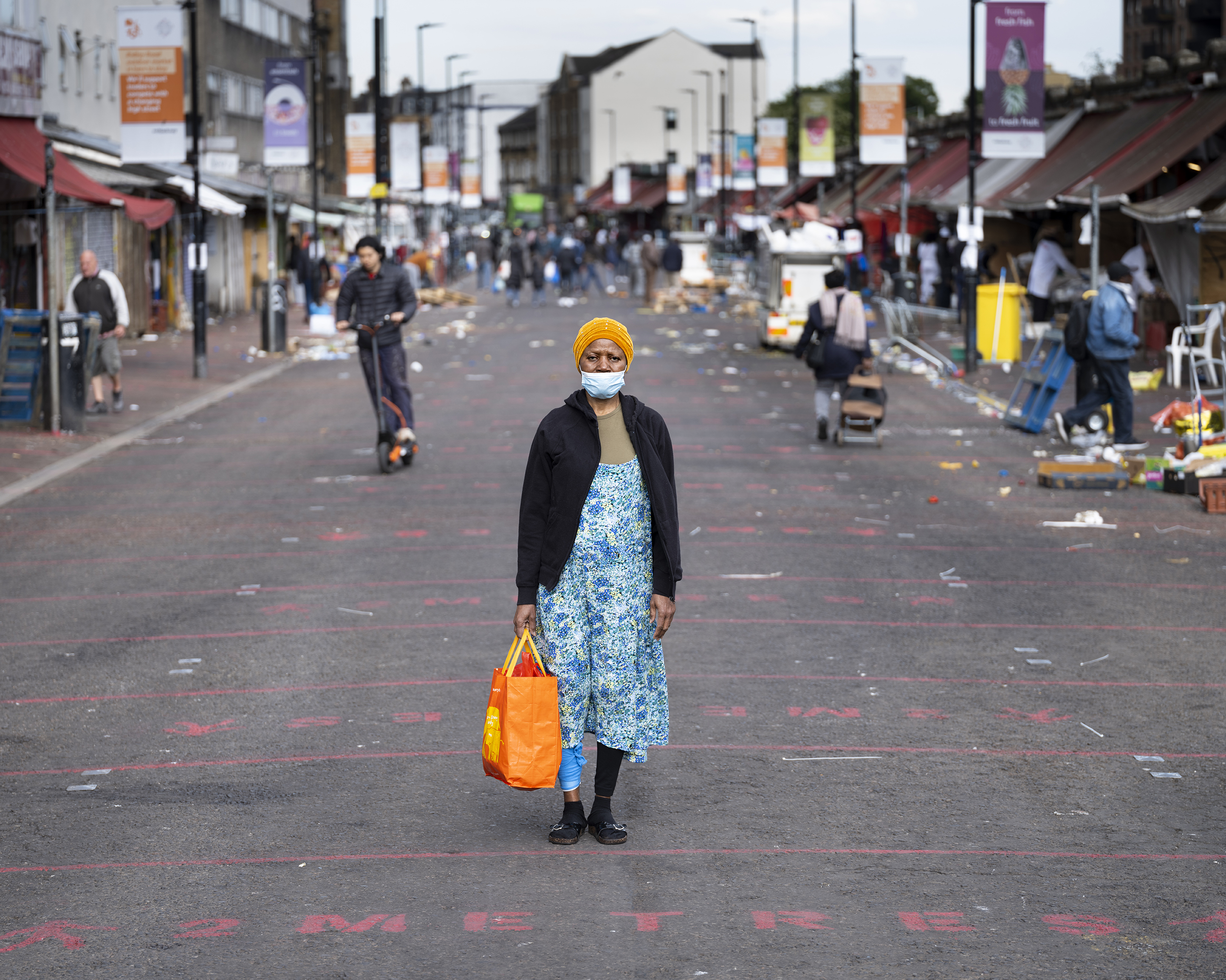

Gideon Mendel (assisted by Maria Quigley)
Hana Lameiras, IT project manager. “The biggest impact on my life is my redundancy. I cried when I heard because I was feeling like a failure and I was ashamed. Now I am grateful for where I’m at and excited because it taught me to be resilient and to have the courage to grow into the unknown.”
About this series
Portraits taken during the UK’s first lockdown on Ridley Road in Hackney, east London. It’s usually the site of a bustling market, but its hours were restricted and distancing lines were painted on the road.
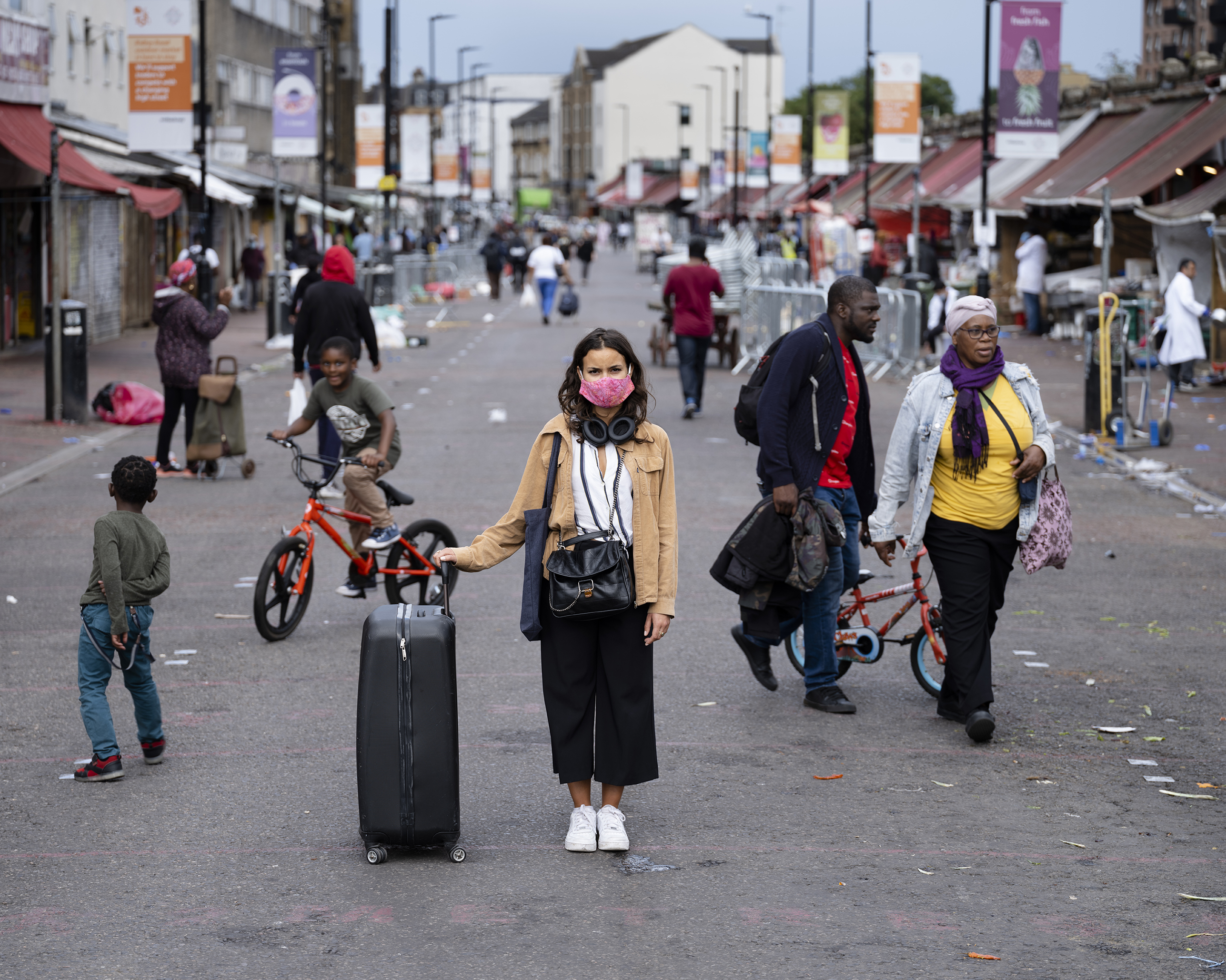
Trans Woman: Between Colour and Voice

Yoppy Pieter
Mama Yuli (R) sits with Mama Dona (L) resting on her knee. As leader of the Indonesian Transgender Communication Forum, Mami Yuli is dedicated to fighting for trans women’s rights. During the pandemic she has been distributing financial support to her community, with contributions coming from individuals and churches instead of government.
About this series
Trans women in Indonesia face many obstacles in life: it’s hard to get a job, and to access healthcare and other government services. All of these difficulties have been made much harder by Covid-19.
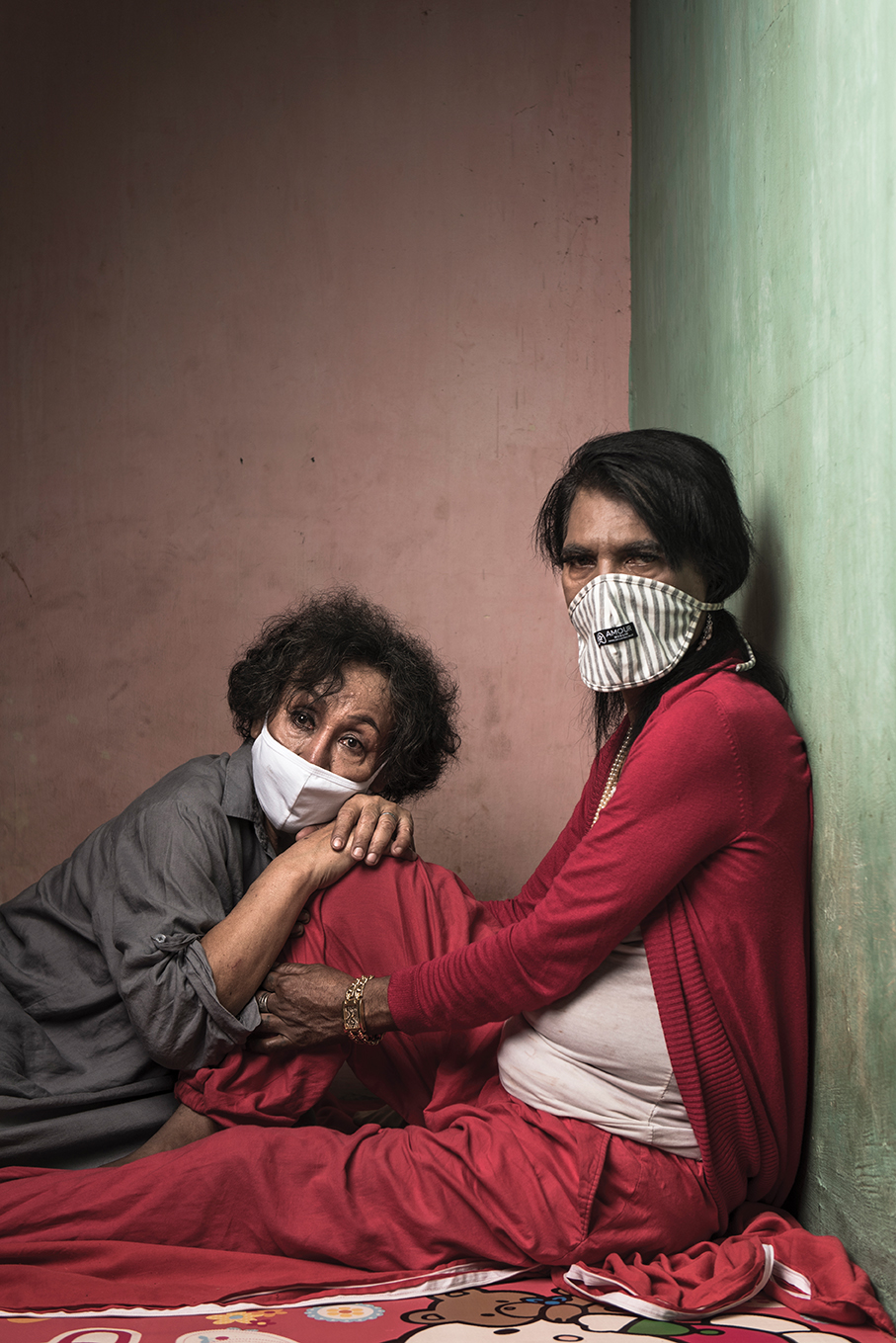

Yoppy Pieter
Darni holds her ID card – it is in her old name of Darno, and it expired in 2012. An estimated 70% of trans women in Jarkarta don’t have valid ID cards, which are needed to get access to government services like education, financial support and healthcare – including for Covid-19.
About this series
Trans women in Indonesia face many obstacles in life: it’s hard to get a job, and to access healthcare and other government services. All of these difficulties have been made much harder by Covid-19.
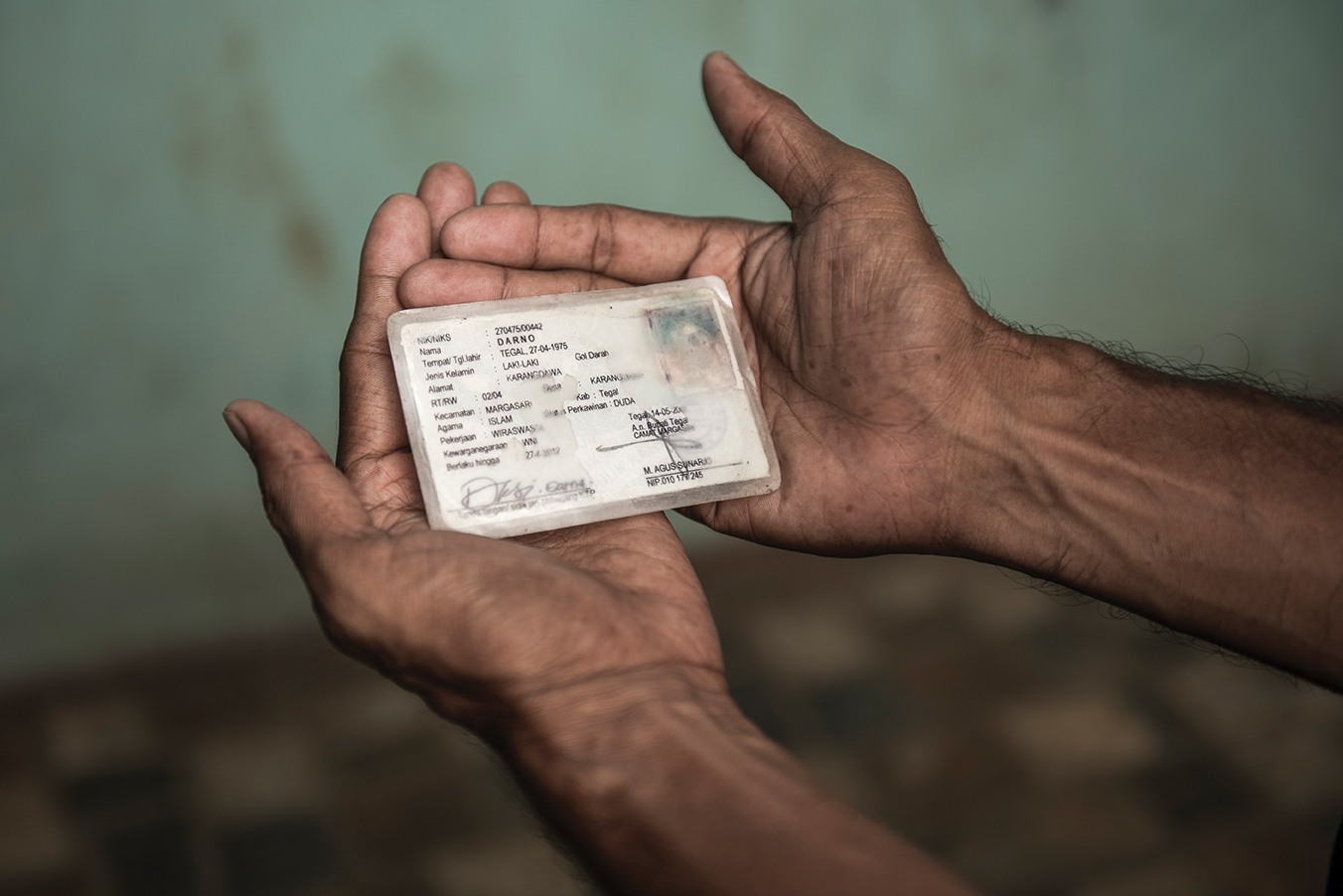

Yoppy Pieter
Lilis (centre) having an HIV test in Serpong, South Tangerang. She is accompanied by Aurel (L) from Pelita Tangsel, an organisation that helps trans women access health services when they don’t have the required official documentation.
About this series
Trans women in Indonesia face many obstacles in life: it’s hard to get a job, and to access healthcare and other government services. All of these difficulties have been made much harder by Covid-19.
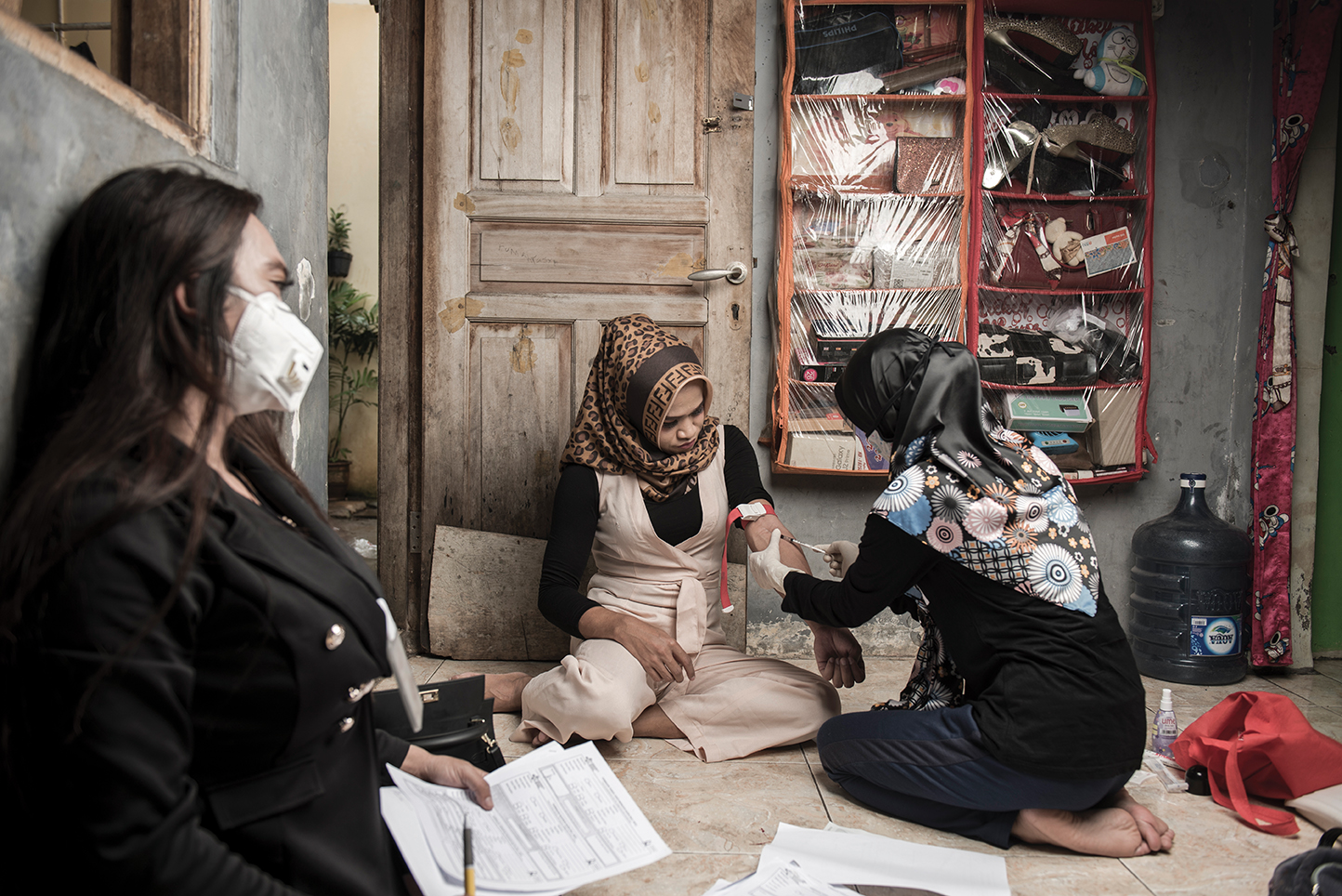

Yoppy Pieter
A slum area in Depok, West Java. There’s a community of trans women here, as rents are low and many of them are living in poverty. But during the pandemic, they are losing a lot of what little income they had, so they are finding it even harder to pay the rent.
About this series
Trans women in Indonesia face many obstacles in life: it’s hard to get a job, and to access healthcare and other government services. All of these difficulties have been made much harder by Covid-19.
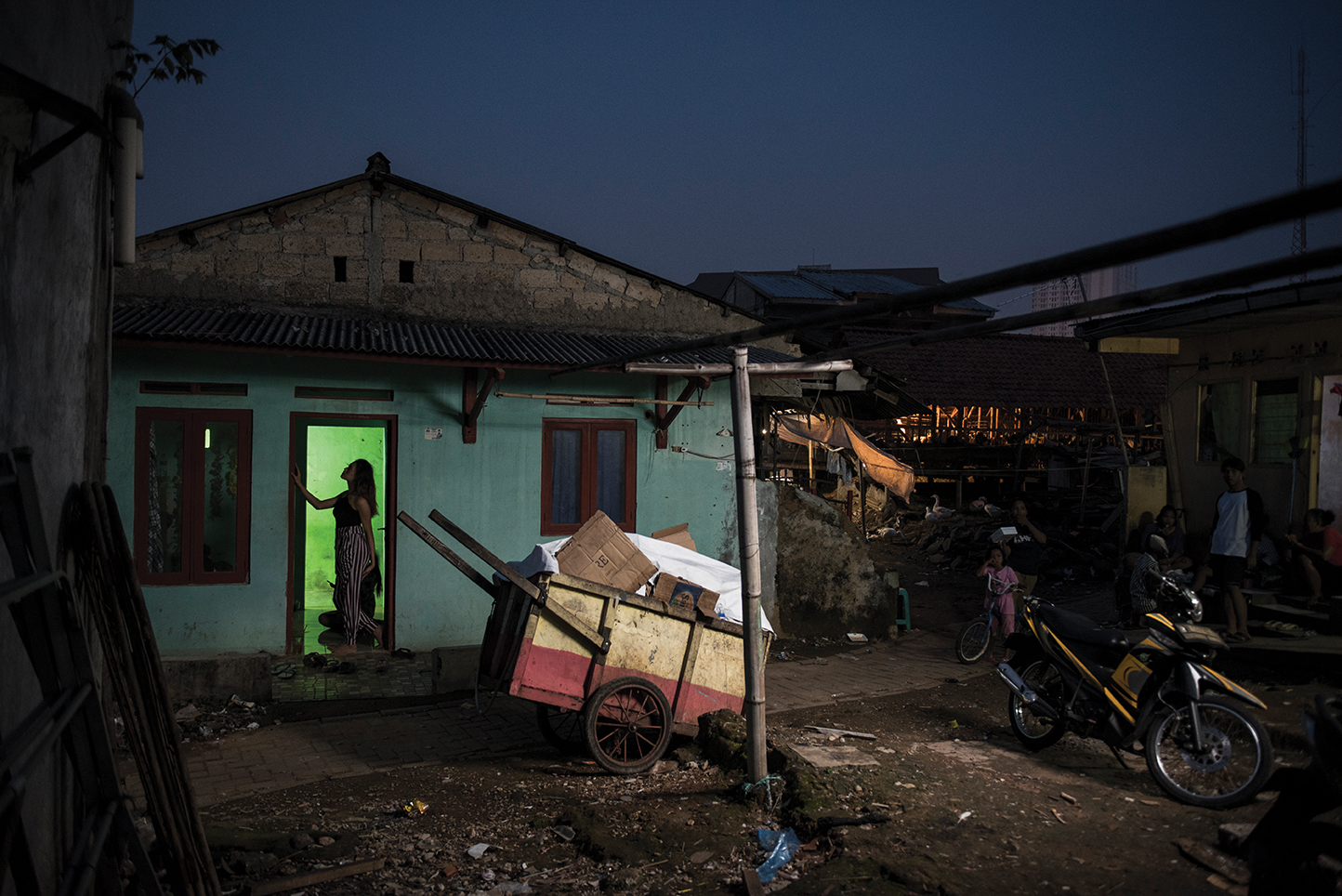

Yoppy Pieter
Mira (not her real name) is a sex worker in Jakarta. Covid restrictions mean that she can no longer work in the street, so she is working from home using the internet. “I have no option and need to work to pay rent and living expenses,” she says.
About this series
Trans women in Indonesia face many obstacles in life: it’s hard to get a job, and to access healthcare and other government services. All of these difficulties have been made much harder by Covid-19.
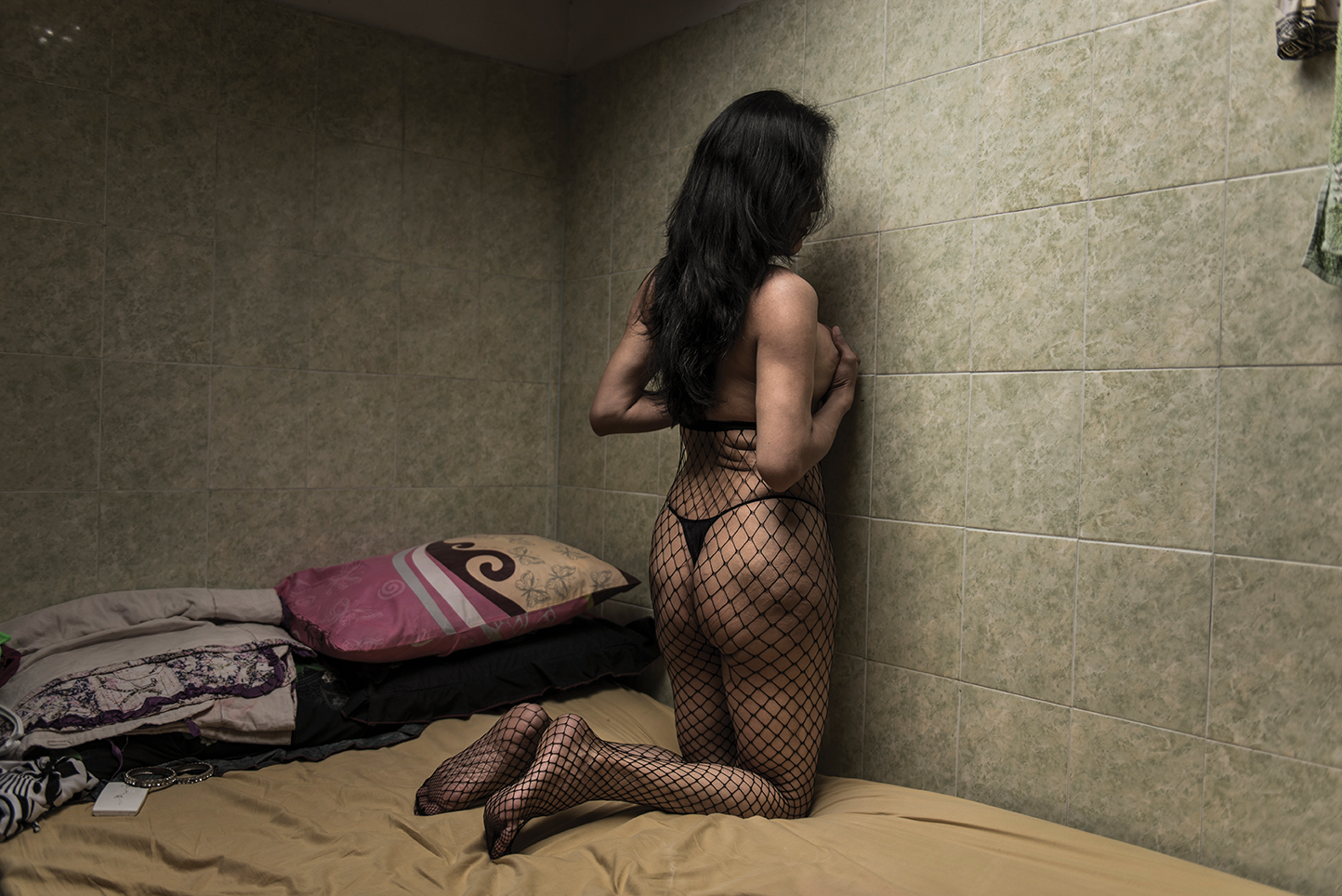
Measure and Middle

Ingmar Björn Nolting
Young couples meet at the previously open border between Konstanz, Germany, and Kreuzlingen, Switzerland. The authorities put up a fence, and later a second one to force distancing more effectively. Here, on a stretch on private ground, there was only one old fence, allowing a little physical contact.
About this series
Covid-19 and lockdowns disrupted almost every aspect of life, challenging people, governments and organisations of every kind to find ways to adapt. Ingmar Björn Nolting travelled through Germany in April 2020 to see what was going on.
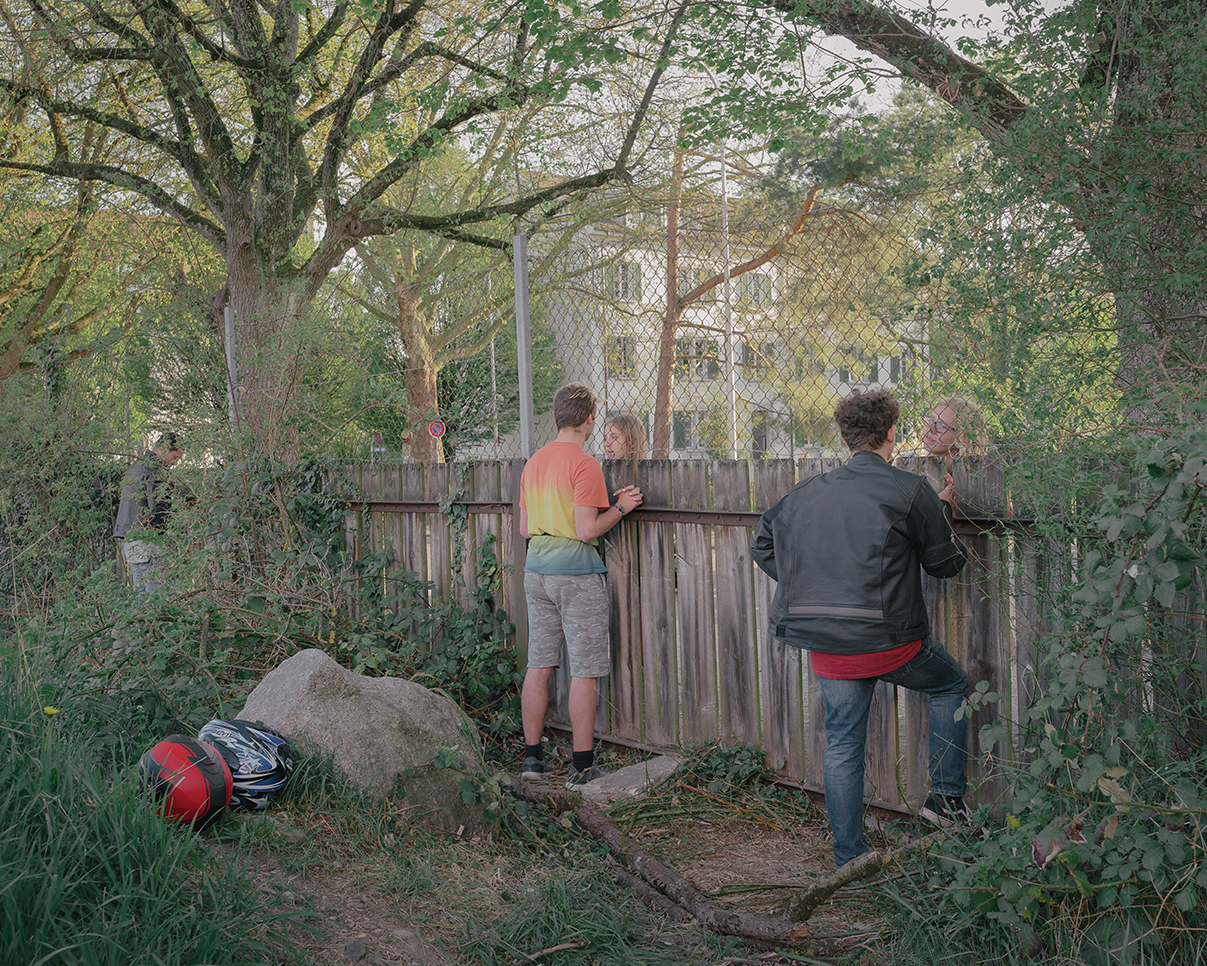

Ingmar Björn Nolting
Stored beds for a makeshift Covid hospital in an exhibition hall in Hanover. This site was prepared to take 500 patients for non-intensive care, if all other possibilities were exhausted.
About this series
Covid-19 and lockdowns disrupted almost every aspect of life, challenging people, governments and organisations of every kind to find ways to adapt. Ingmar Björn Nolting travelled through Germany in April 2020 to see what was going on.
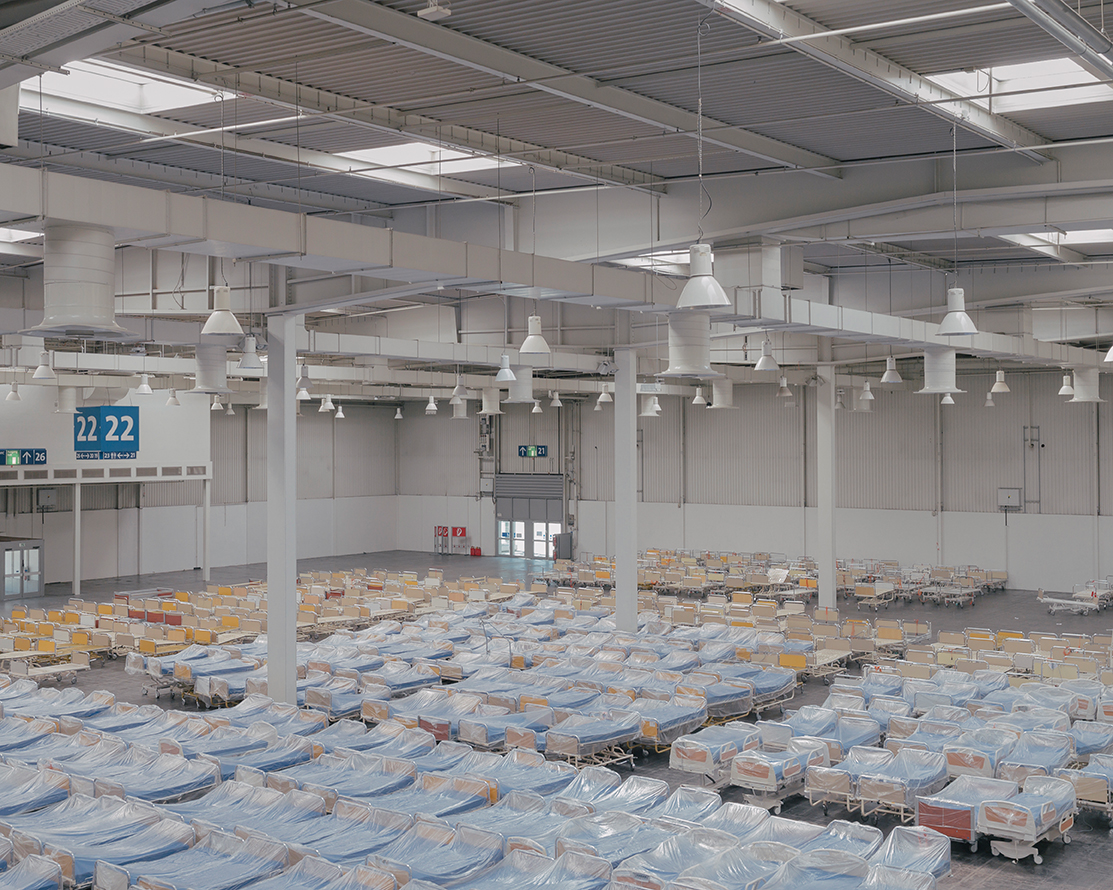

Ingmar Björn Nolting
Melanie Laufer (Nolting’s aunt) during a dental treatment in Vlotho. Dentist Dörte Stübbe (L) bought special protective helmets to protect herself, her staff and her patients.
About this series
Covid-19 and lockdowns disrupted almost every aspect of life, challenging people, governments and organisations of every kind to find ways to adapt. Ingmar Björn Nolting travelled through Germany in April 2020 to see what was going on.
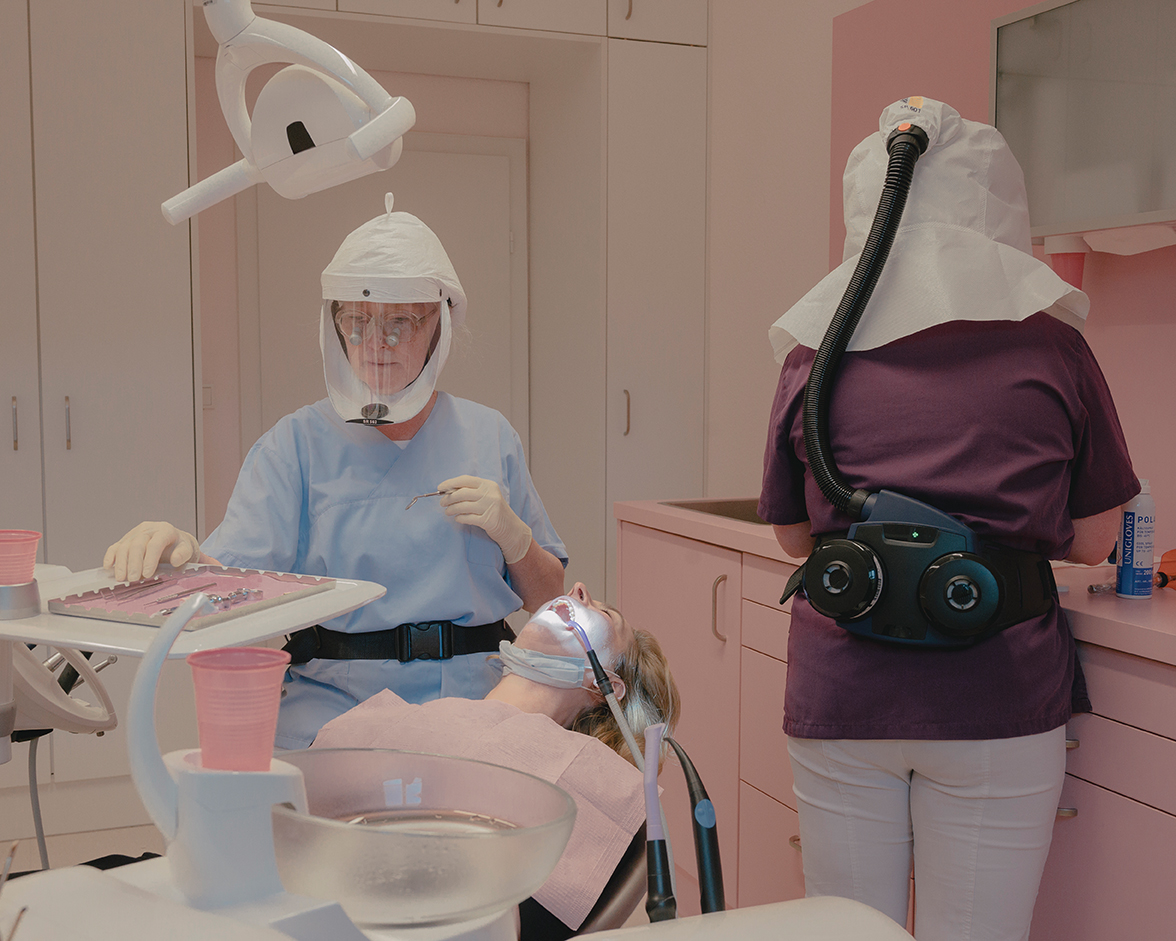

Ingmar Björn Nolting
With indoor worship prohibited, an ecumenical Good Friday service is held at a drive-in cinema in Düsseldorf. Led by Heinrich Fucks (Protestant, L) and Frank Heidkamp (Catholic, R).
About this series
Covid-19 and lockdowns disrupted almost every aspect of life, challenging people, governments and organisations of every kind to find ways to adapt. Ingmar Björn Nolting travelled through Germany in April 2020 to see what was going on.
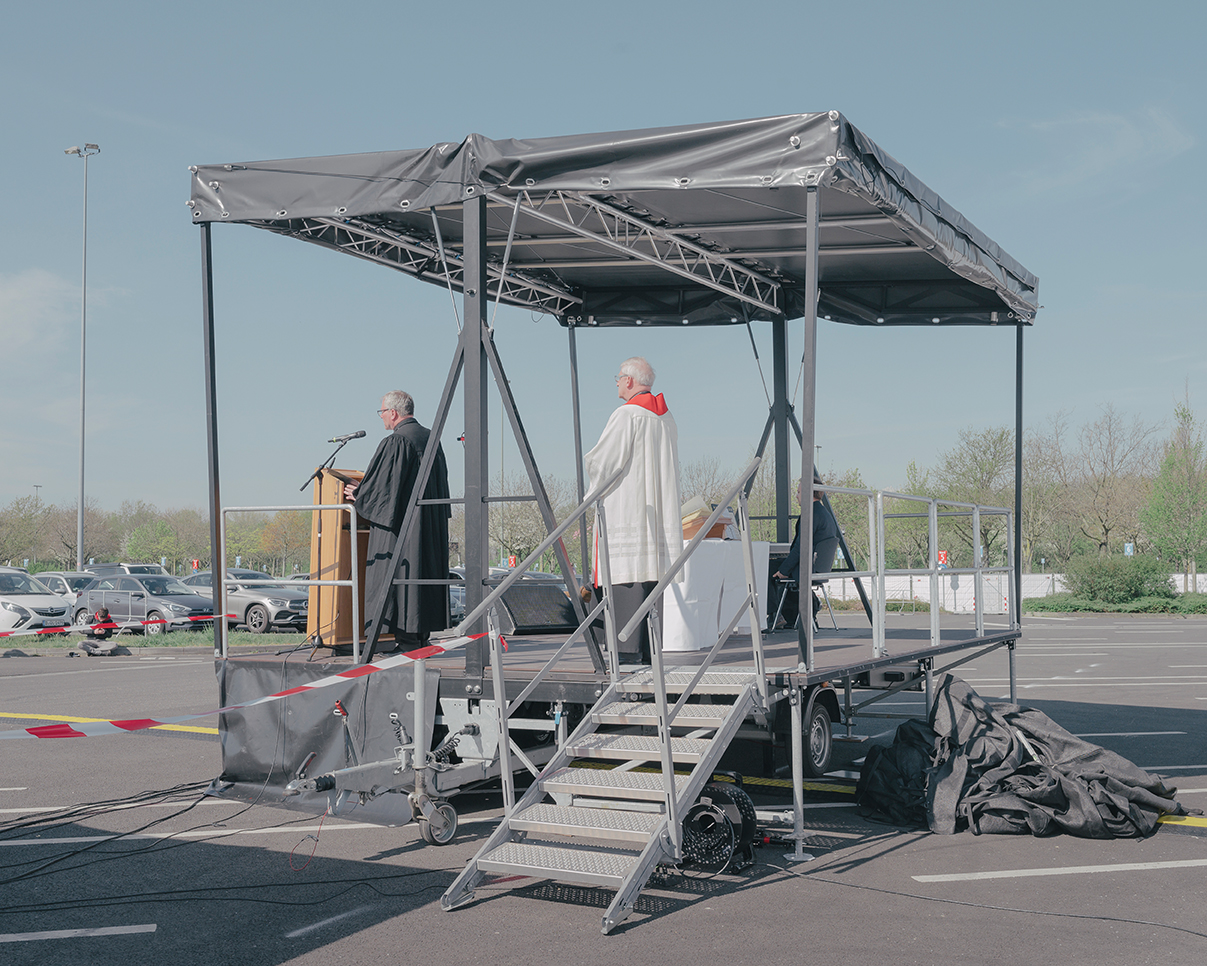

Ingmar Björn Nolting
Live audience events were banned but livestreamed ones could still happen. Here, organist Cameron Carpenter rehearses for his Easter concert in the Konzerthaus Berlin. Carpenter says the empty concert hall created new acoustic possibilities, and he positioned his organ and loudspeakers to make the most of these.
About this series
Covid-19 and lockdowns disrupted almost every aspect of life, challenging people, governments and organisations of every kind to find ways to adapt. Ingmar Björn Nolting travelled through Germany in April 2020 to see what was going on.

Conflict and Covid-19 in Nagorno-Karabakh
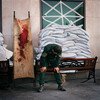
Anastasia Taylor-Lind
A man weeps beside a bloodied stretcher outside a medical centre in Stepanakert. In the face of the conflict, doctors abandoned Covid precautions like PPE. Infections quickly spread through medical staff, who continued working while sick.
About this series
The war in Nagorno-Karabakh was the first conflict to start during the pandemic, and the overlap of the two crises was deadly. Infections spiralled out of control, caused by the pressure put on healthcare facilities and the mass movement of people in and out of this disputed territory (officially part of Azerbaijan, for years it has operated as a breakaway state backed by Armenia).
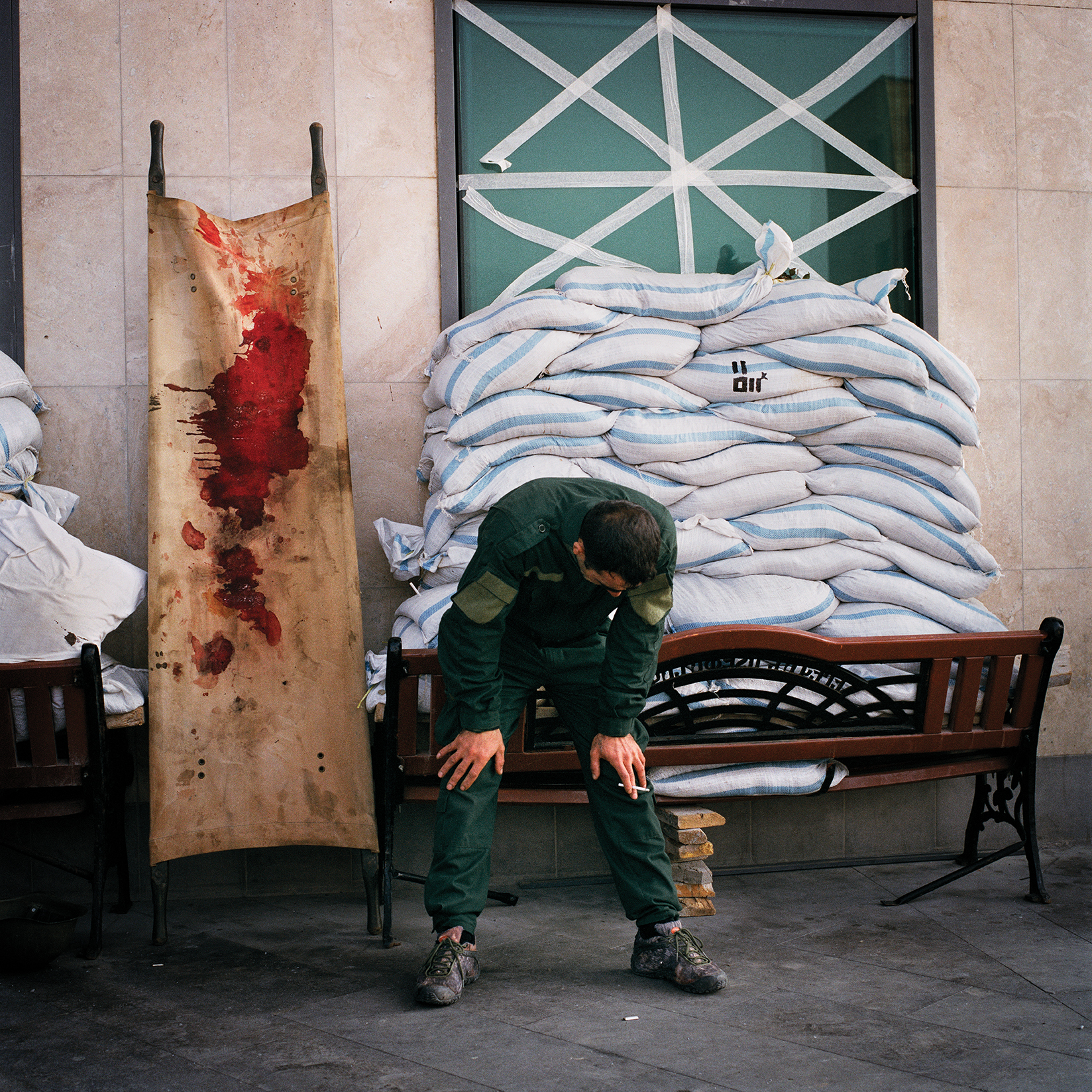
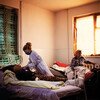
Anastasia Taylor-Lind
Nurse practitioner Gayane Mkrtchyan tends to Hrant Israelyan in a Covid-19 hospital ward in Stepanakert. In the next bed is Hrant's wife, Naira, who also has Covid-19.
About this series
The war in Nagorno-Karabakh was the first conflict to start during the pandemic, and the overlap of the two crises was deadly. Infections spiralled out of control, caused by the pressure put on healthcare facilities and the mass movement of people in and out of this disputed territory (officially part of Azerbaijan, for years it has operated as a breakaway state backed by Armenia).
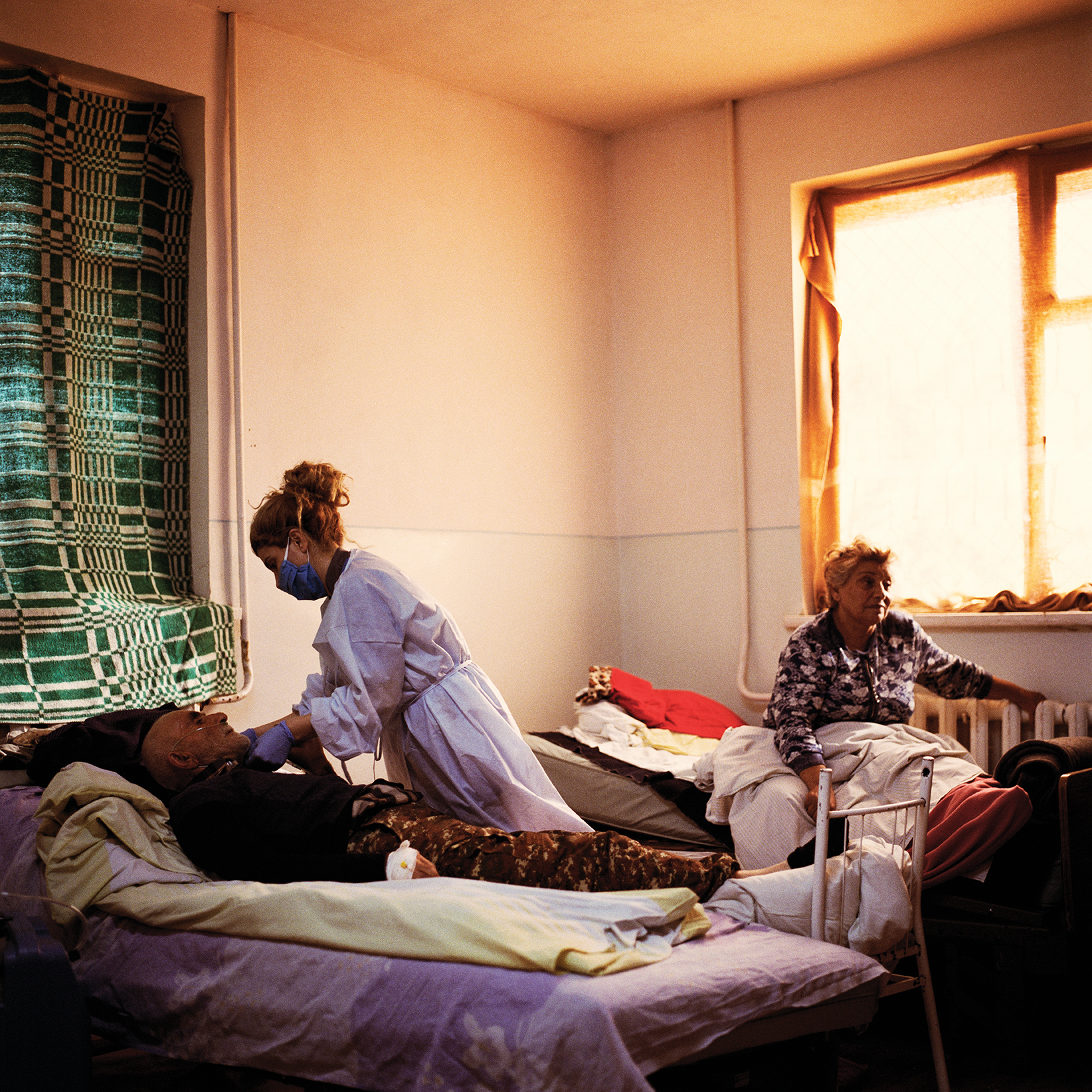
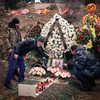
Anastasia Taylor-Lind
Boris Gasparyan was killed in action, along with his friend Tovmas Tovmasyan; they were buried side by side. Tovmas’s relatives live in Russia and were unable to attend the funeral due to coronavirus travel restrictions.
About this series
The war in Nagorno-Karabakh was the first conflict to start during the pandemic, and the overlap of the two crises was deadly. Infections spiralled out of control, caused by the pressure put on healthcare facilities and the mass movement of people in and out of this disputed territory (officially part of Azerbaijan, for years it has operated as a breakaway state backed by Armenia).
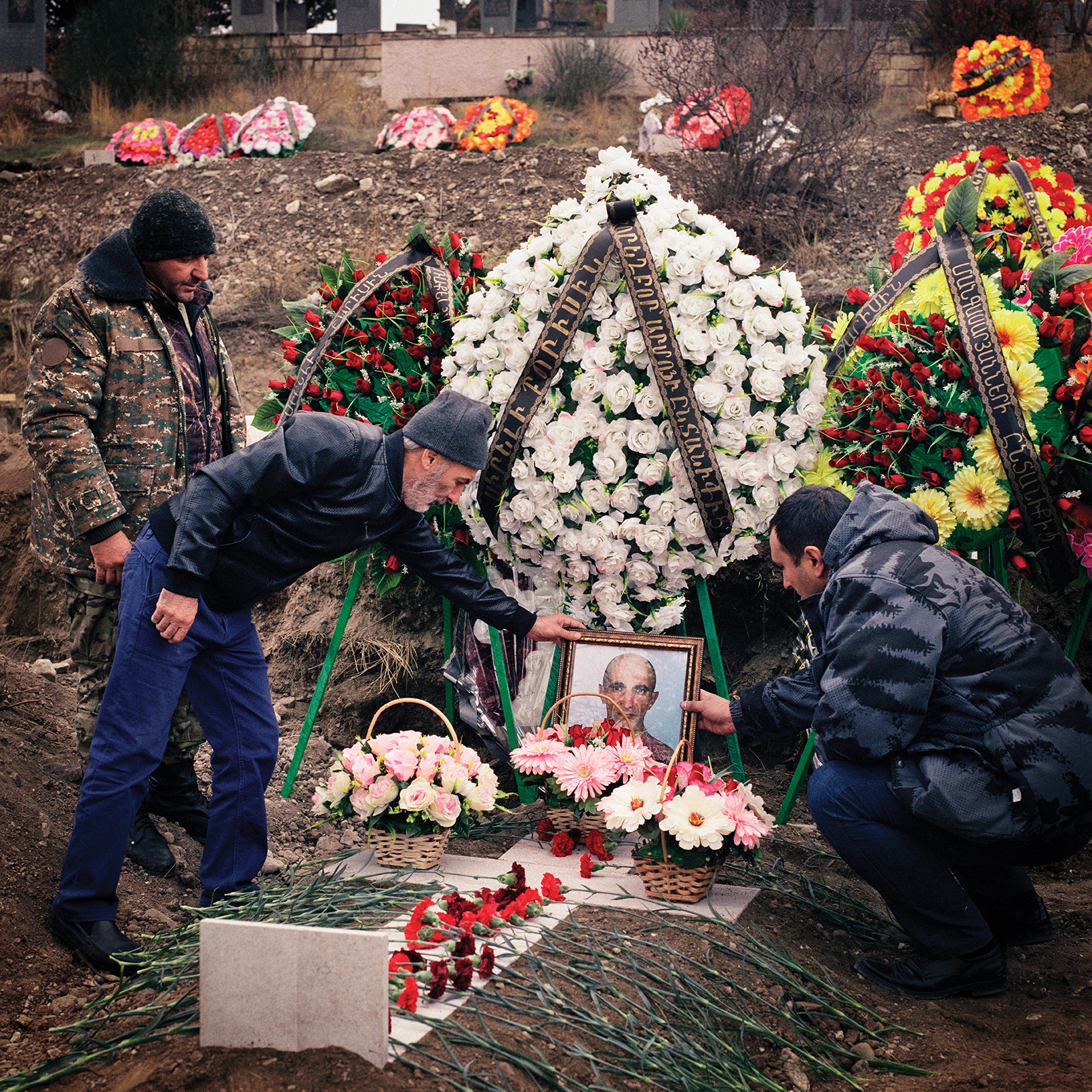
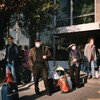
Anastasia Taylor-Lind
Displaced persons from Nagorno-Karabakh wait in Yerevan, Armenia, to be bussed to temporary housing. During the war around 100,000 people fled to Armenia, where infection rates were high.
About this series
The war in Nagorno-Karabakh was the first conflict to start during the pandemic, and the overlap of the two crises was deadly. Infections spiralled out of control, caused by the pressure put on healthcare facilities and the mass movement of people in and out of this disputed territory (officially part of Azerbaijan, for years it has operated as a breakaway state backed by Armenia).
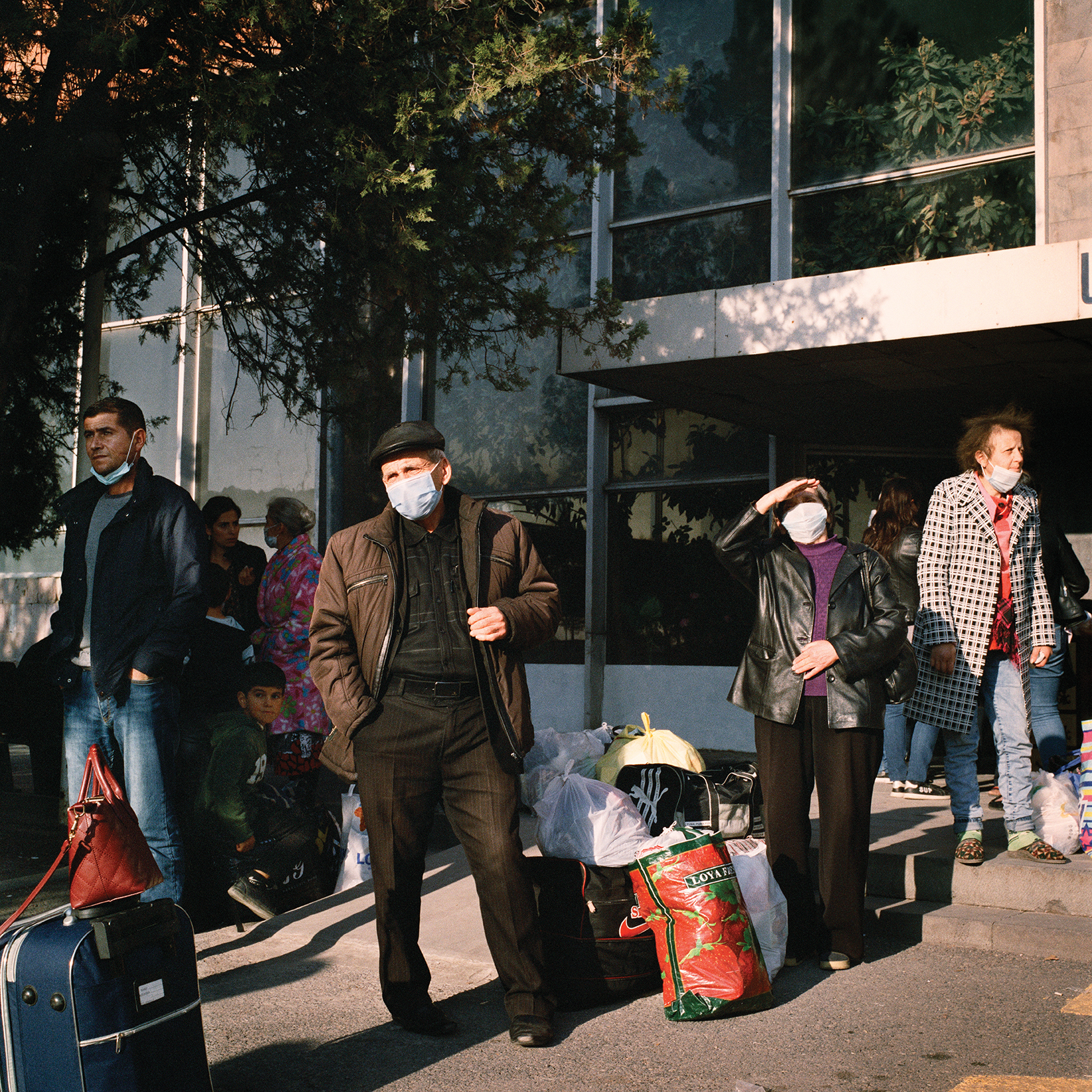

Anastasia Taylor-Lind
Arina (L) and Angelina (R) Hakobyan in bed at home. The family had fled Nagorno-Karabakh to Armenia, but now, like many others, they have returned – a second mass movement of people. The November peace deal ended the conflict, but not the spread of the virus.
About this series
The war in Nagorno-Karabakh was the first conflict to start during the pandemic, and the overlap of the two crises was deadly. Infections spiralled out of control, caused by the pressure put on healthcare facilities and the mass movement of people in and out of this disputed territory (officially part of Azerbaijan, for years it has operated as a breakaway state backed by Armenia).
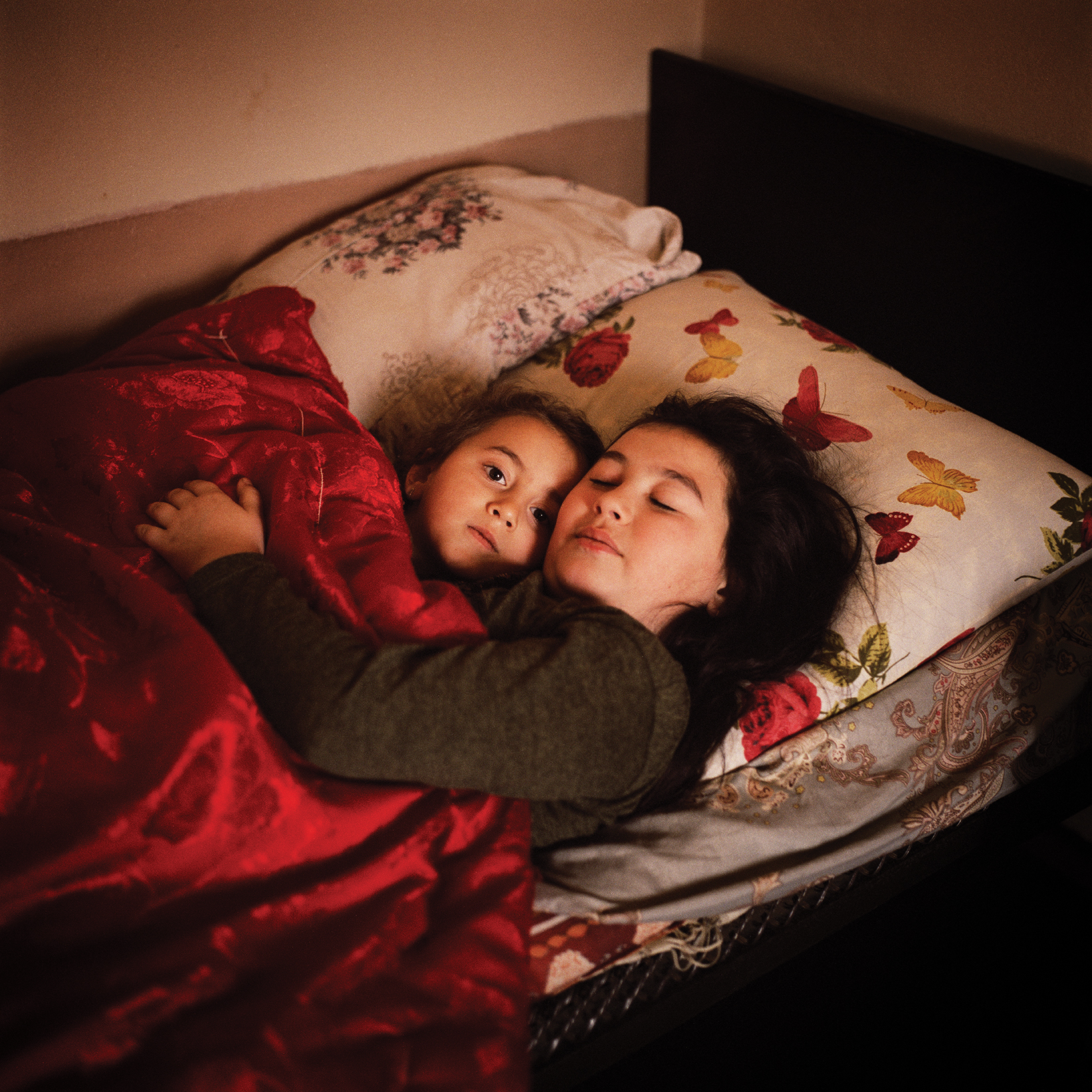
Our rapidly changing climate brings with it a host of threats to human health. In these photos, we see how fire and flood can devastate the land that people depend on, how heat creates new dangers of disease, and what happens when food and safe water become scarce. The stories also show us what people do to keep their families healthy in life-threatening environments, and how these threats could be reduced.
Health in a Heating World (single image)

Sujan Sarkar
Nine-year-old Rupali carries water for her family to use around the house. It’s salt water. Since 2009, when Cyclone Aila struck Mousuni Island, off the Indian coast south of Kolkata, the community has been reeling. Flooding and riverbank erosion have made the local water saline. The trees have either died or stopped bearing fruit, and agricultural land is infertile. You can just about wash things using salty water from the ponds, but proper, healthy drinking water is horribly scarce.


Zakir Hossain Chowdhury
Three months after Cyclone Amphan hit Bangladesh, Habibur Rahman Sarder salvages anything still useful from the wreckage of his house. Like many others, Habibur remains homeless, taking shelter wherever possible. He has nowhere to cook and nowhere to grow crops, and medical treatment is hard to come by. Bangladesh’s coastal communities are severely at risk from climate change, with 20–25 million people predicted to be forced out of their homes by 2050.
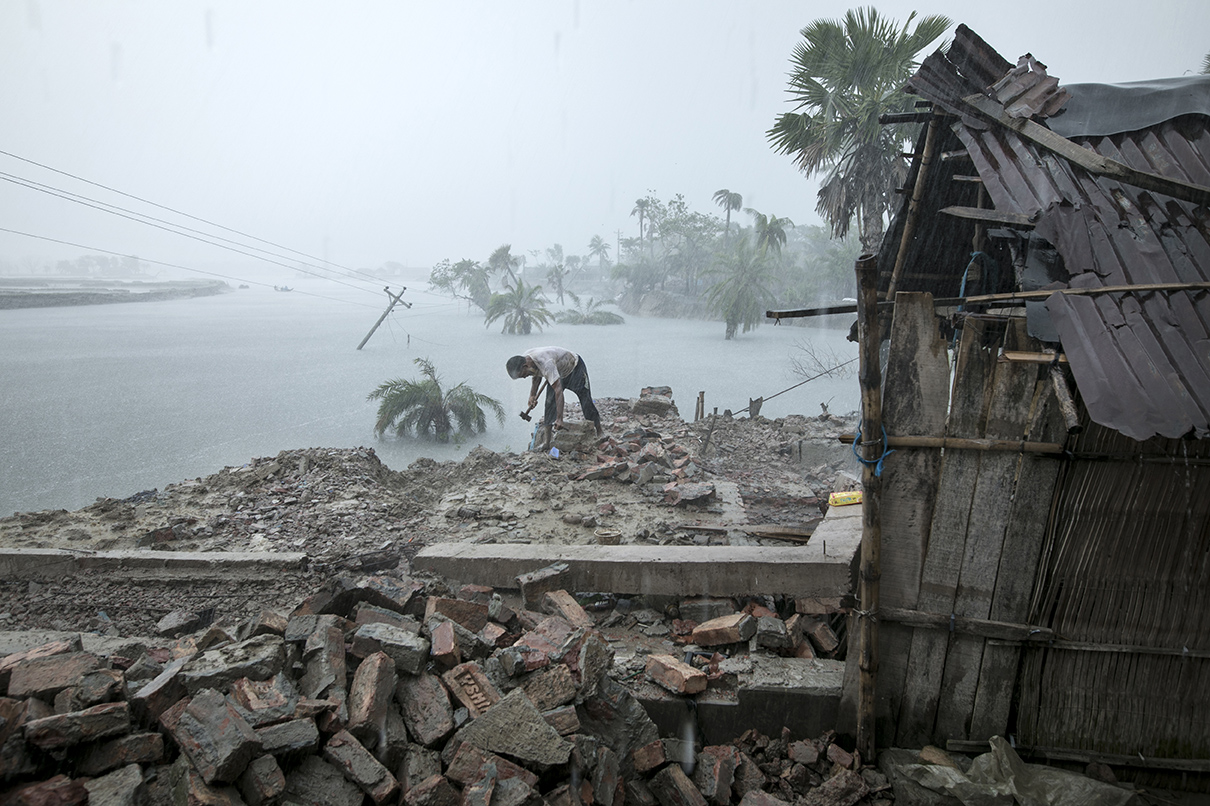

Krisztián Bócsi
Prevention is better than cure. The faster the world can cut greenhouse emissions, the better we’ll be able to avoid the health dangers posed by global heating – from dehydration and malnutrition to infectious disease and extreme weather. A big part of this will come from replacing fossil fuel use, like the Jänschwalde lignite power plant in Peitz, Germany. Lignite, also known as brown coal, is one of the most carbon-intensive sources of power. The German government is committed to eliminating coal use by 2038 as the country moves more into renewables.
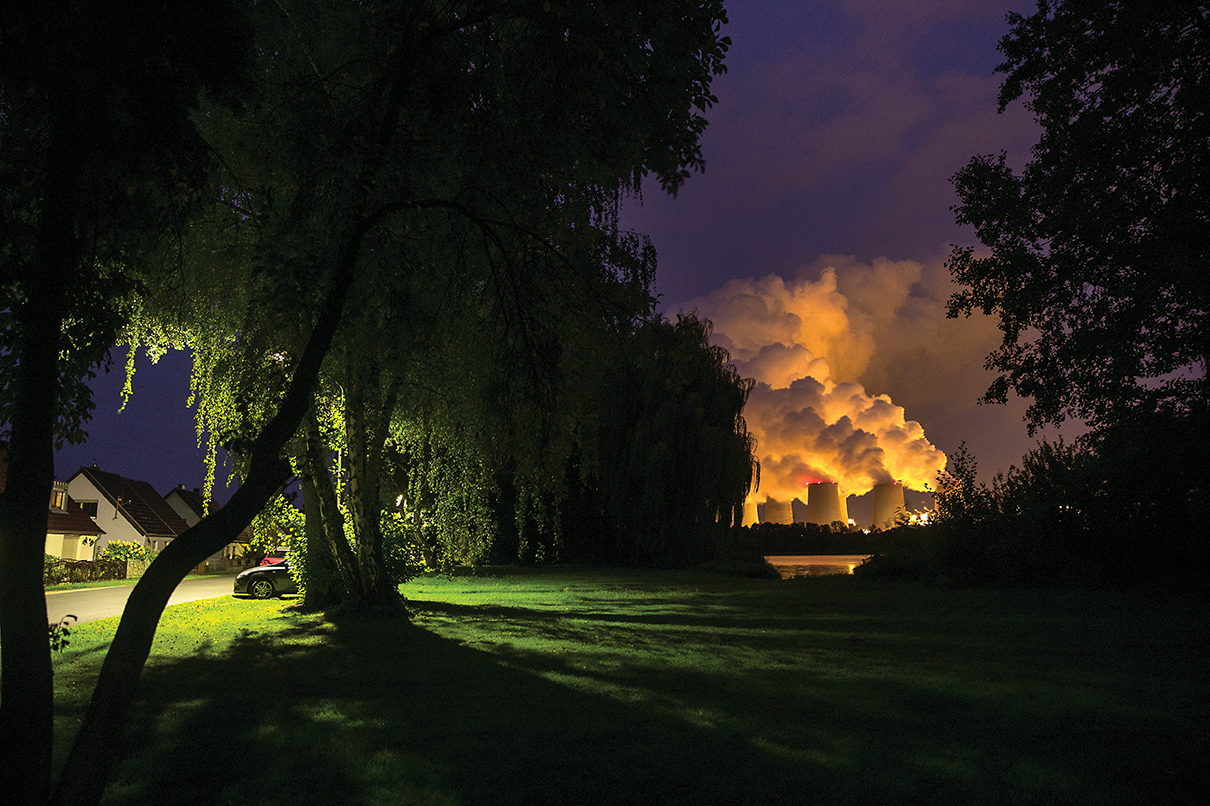

Michael Snyder
Here, on the edge of the northernmost town in the world, a little girl has gone out to play. Saga Bernlow and her family live on the Norwegian archipelago of Svalbard in the Arctic Ocean, where temperatures are rising fast. Their dogsledding business faces an uncertain future as the snowpack melts earlier every year. And other risks lurk too: scientists fear that melting permafrost may release long-extinct bacteria or viruses back into the atmosphere.
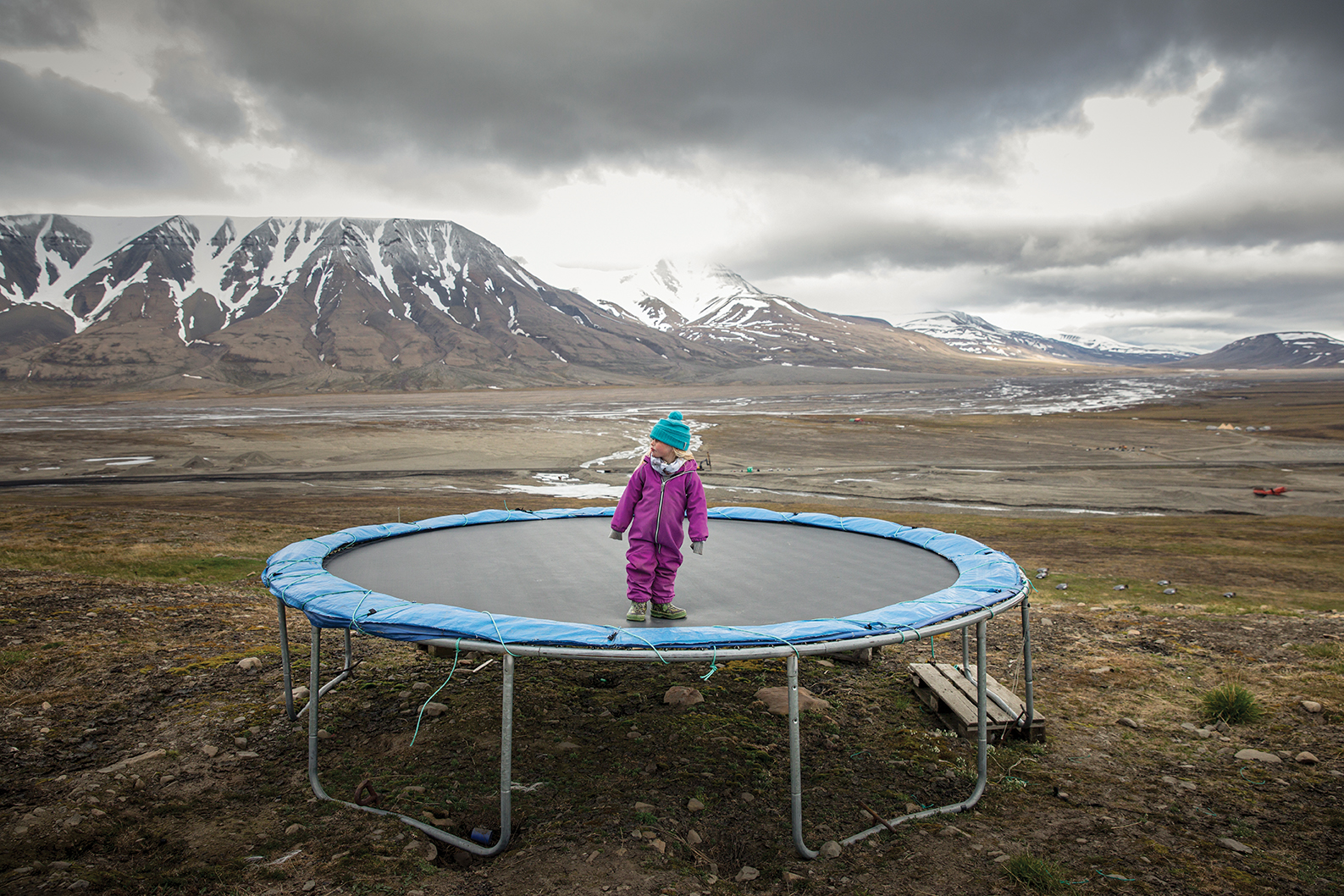

Sharwar Apo
Parents take their child to hospital in Rajshahi, Bangladesh, 10-15 miles across this drought-parched land, the mother holding a saline drip all the way. For much of the year, the land is dead like this, but for four months it’s flooded. Either way, safe drinking water is scarce, crops can’t grow, health problems abound – from dehydration to infection – and transport is limited. This family’s journey succeeded, and the child was treated for her diarrhoea. But many of those who attempt this journey are not so lucky.

Health in a Heating World (series)
Until the Corn Grows Back

Lys Arango
Mario’s family leave their community in San Miguel Acatán in search of work. Drought and shifting weather have made farming unworkable locally, so they need to look elsewhere to feed their children.
About this series
Increasingly erratic climate patterns have produced year after year of failed harvests in Guatemala, forcing thousands of people to migrate, trying to escape poverty and malnutrition.
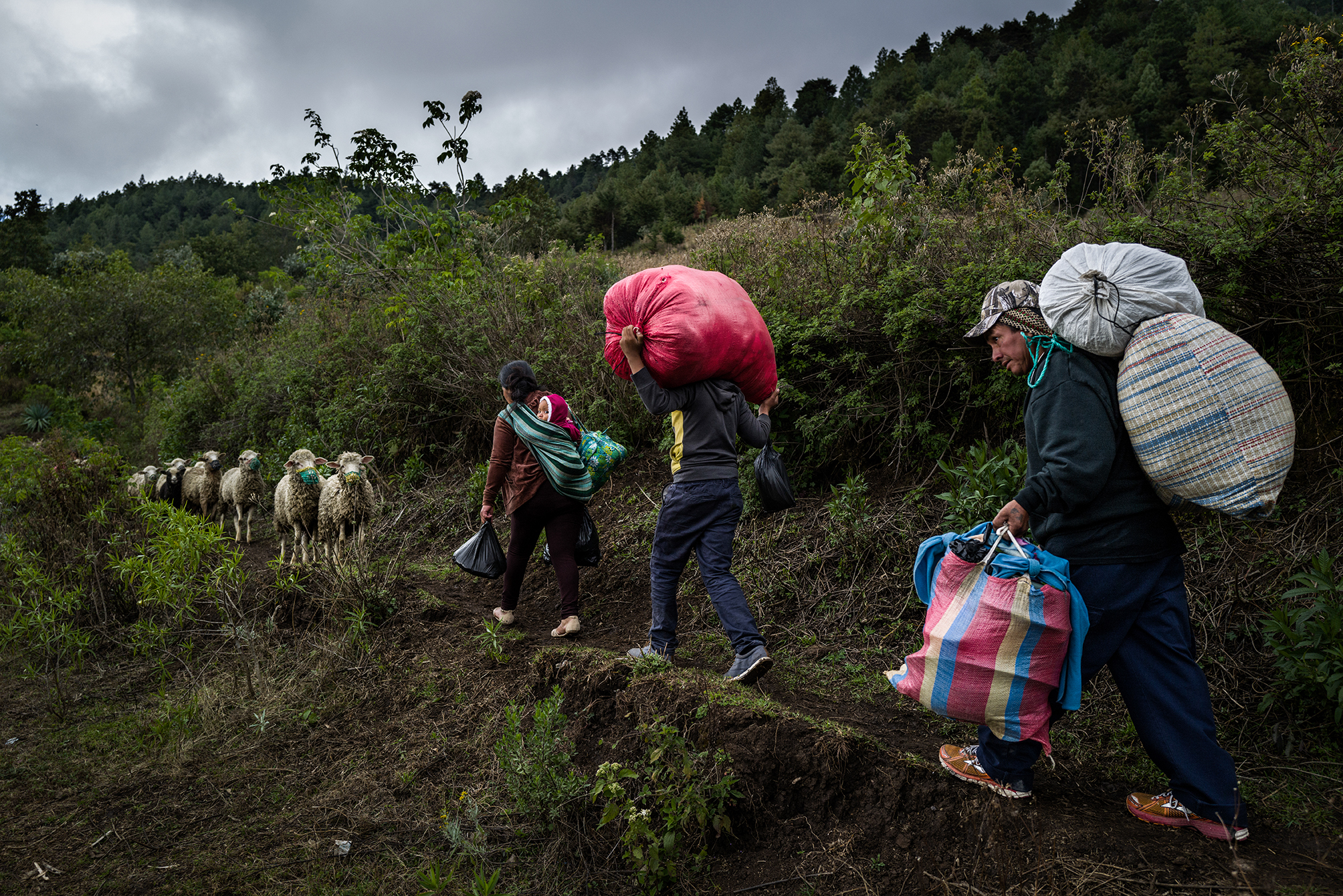

Lys Arango
A child suffering from malnutrition sleeps on the ground in San Antonio Huista. The previous year, most of the family’s bean and corn harvest was destroyed, so they had to seek seasonal work on large coffee plantations.
About this series
Increasingly erratic climate patterns have produced year after year of failed harvests in Guatemala, forcing thousands of people to migrate, trying to escape poverty and malnutrition.
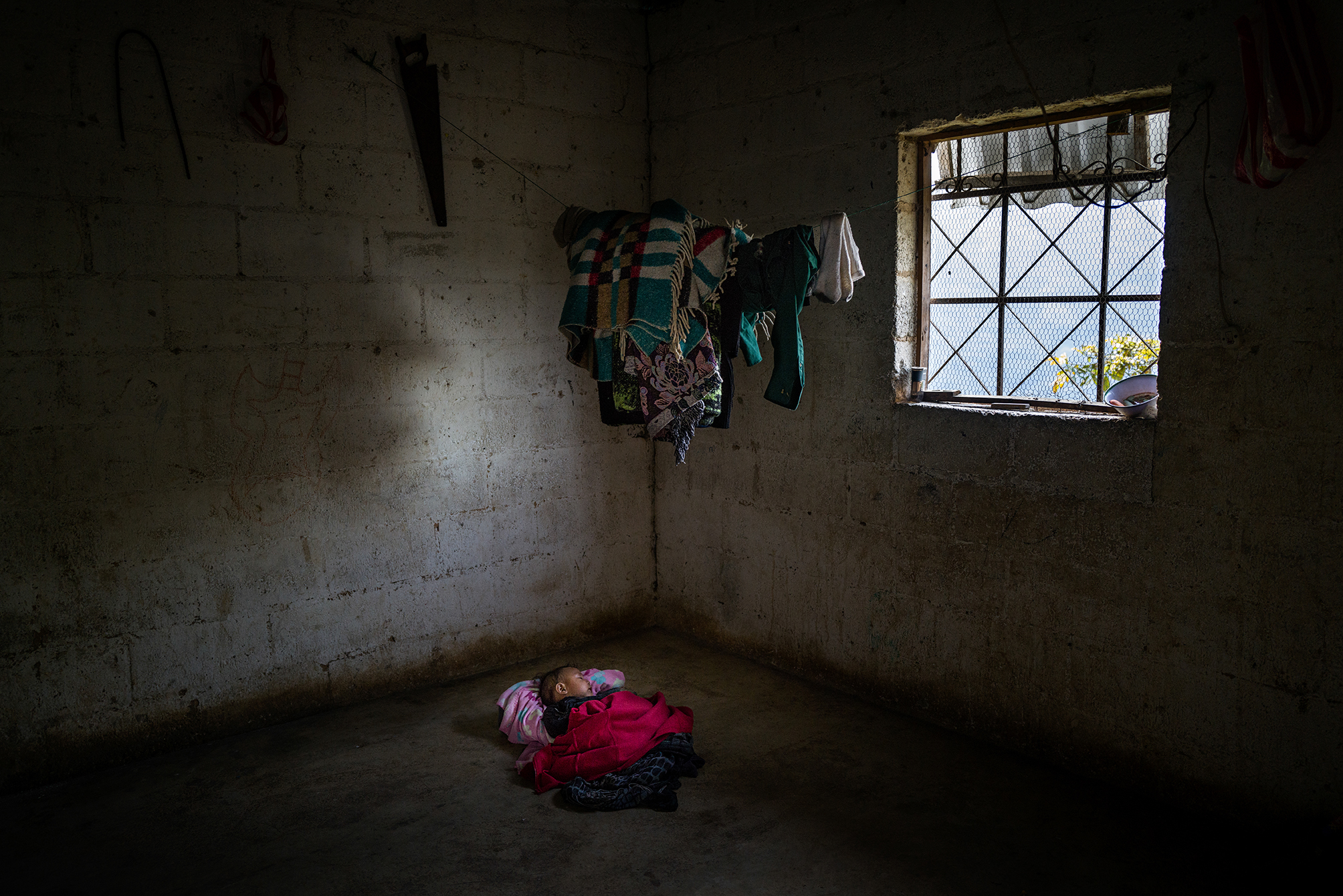

Lys Arango
Petrona, age ten, sits on a wooden bench inside a chuj, a Mayan steam bath. Her empty stomach is growling. Since her family suffered near-total crop losses, they are surviving as best they can on the coffee plantations, where Petrona has been working since she was five.
About this series
Increasingly erratic climate patterns have produced year after year of failed harvests in Guatemala, forcing thousands of people to migrate, trying to escape poverty and malnutrition.


Lys Arango
Many families in the Dry Corridor region are barely surviving, with a small meal of beans and tortillas. In Guatemala, one in two children suffer from chronic malnutrition, the highest rate in Latin America and the Caribbean.
About this series
Increasingly erratic climate patterns have produced year after year of failed harvests in Guatemala, forcing thousands of people to migrate, trying to escape poverty and malnutrition.
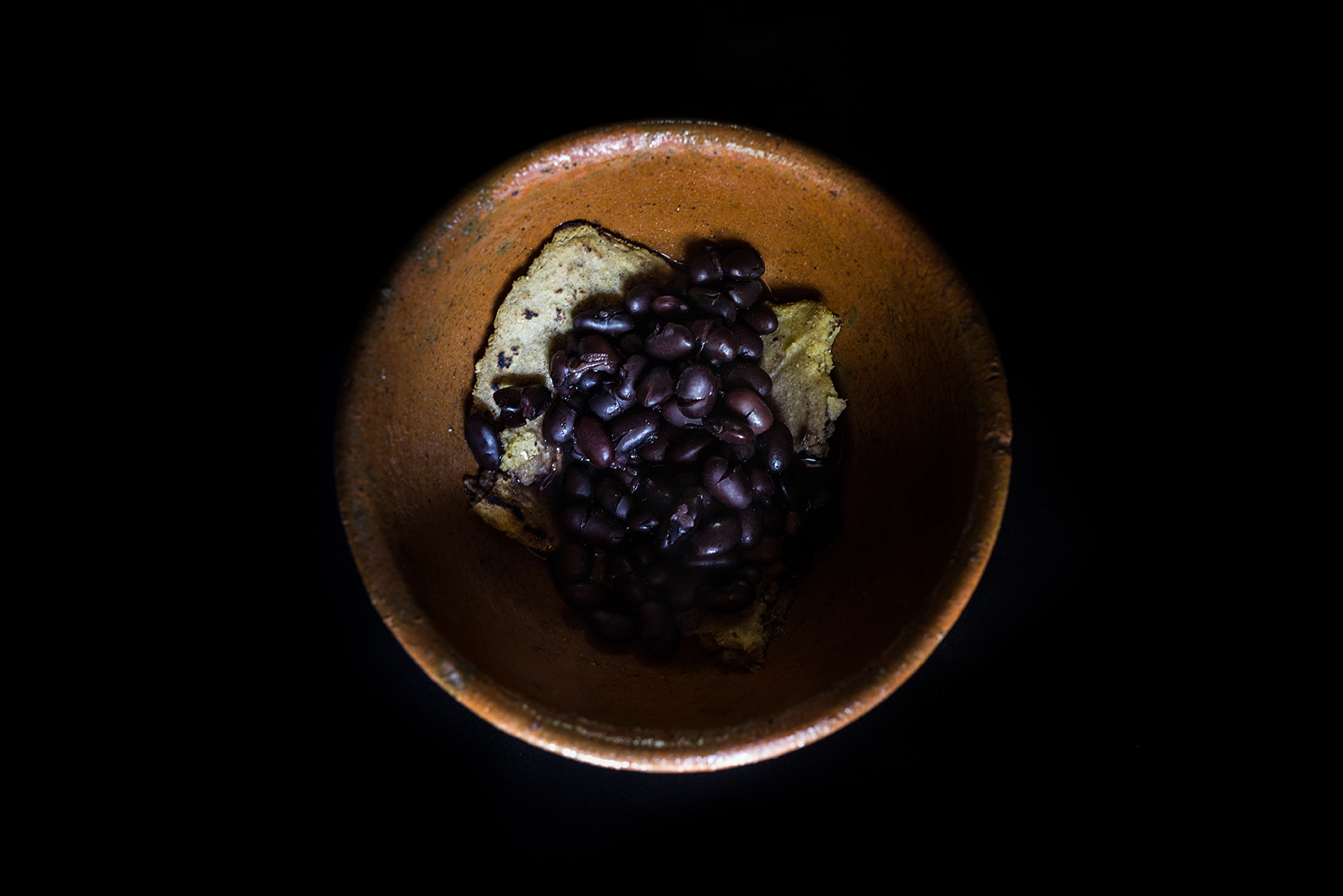

Lys Arango
María Estefanía, 17, weighs 40 kg and is breastfeeding her 11-month-old son, who weighs just 6 kg. His cheeks and stomach are distended, and his hair is falling out – classic symptoms of malnutrition. “I’m desperate,” says María. “I am not able to produce enough breast milk and we cannot afford formula.”
About this series
Increasingly erratic climate patterns have produced year after year of failed harvests in Guatemala, forcing thousands of people to migrate, trying to escape poverty and malnutrition.
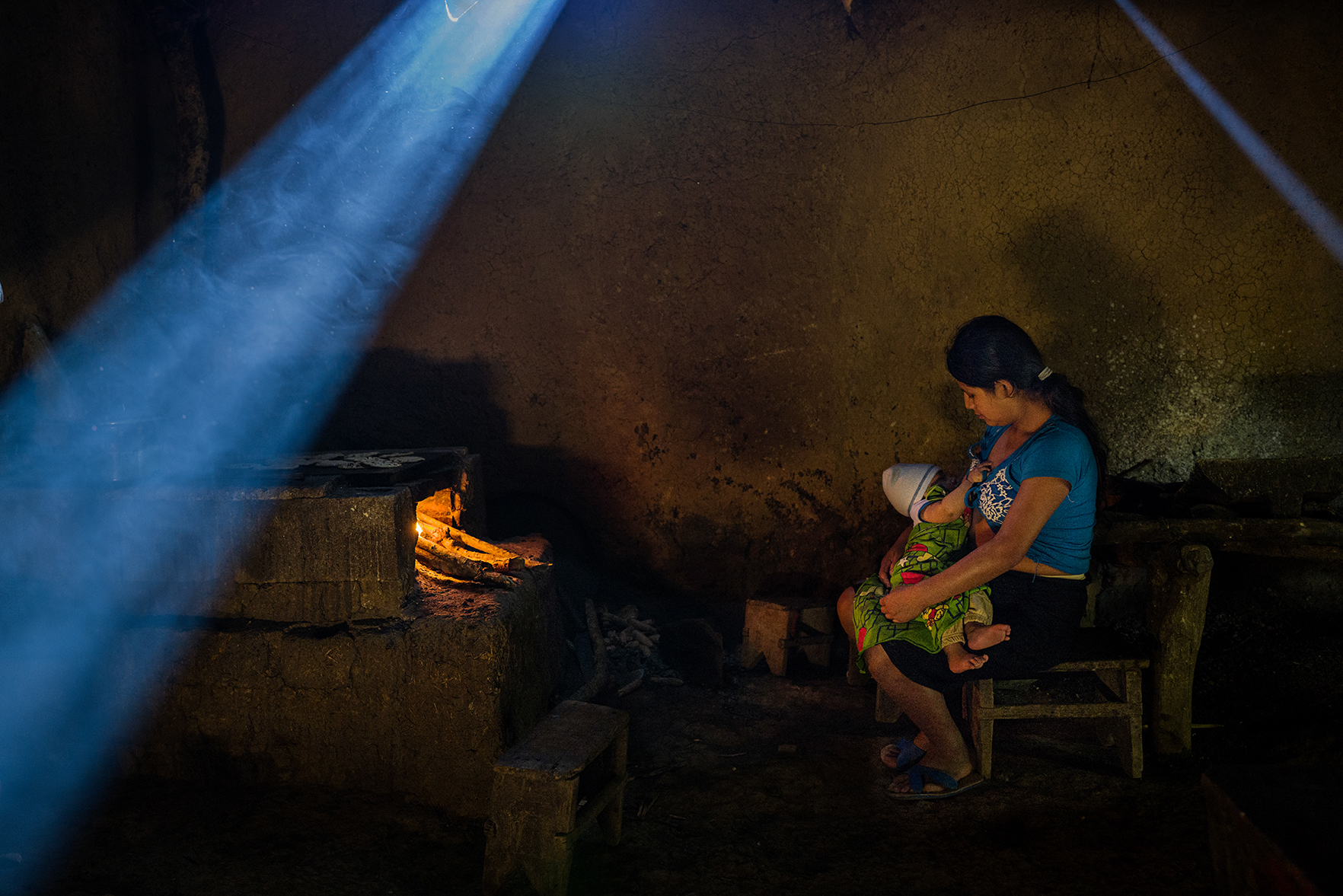
Diving Maldives

Edoardo Delille and Giulia Piermartiri
Maafushi island was heavily damaged by the 2004 tsunami.
About this series
As sea levels rise, the low-lying Maldives are predicted to be submerged by the end of the century. The government is working on solutions like barriers, and moving towards a net zero economy to promote sustainable living. To illustrate the future dangers, Edoardo Delille and Giulia Piermartiri projected tourist diving photos onto local scenes.
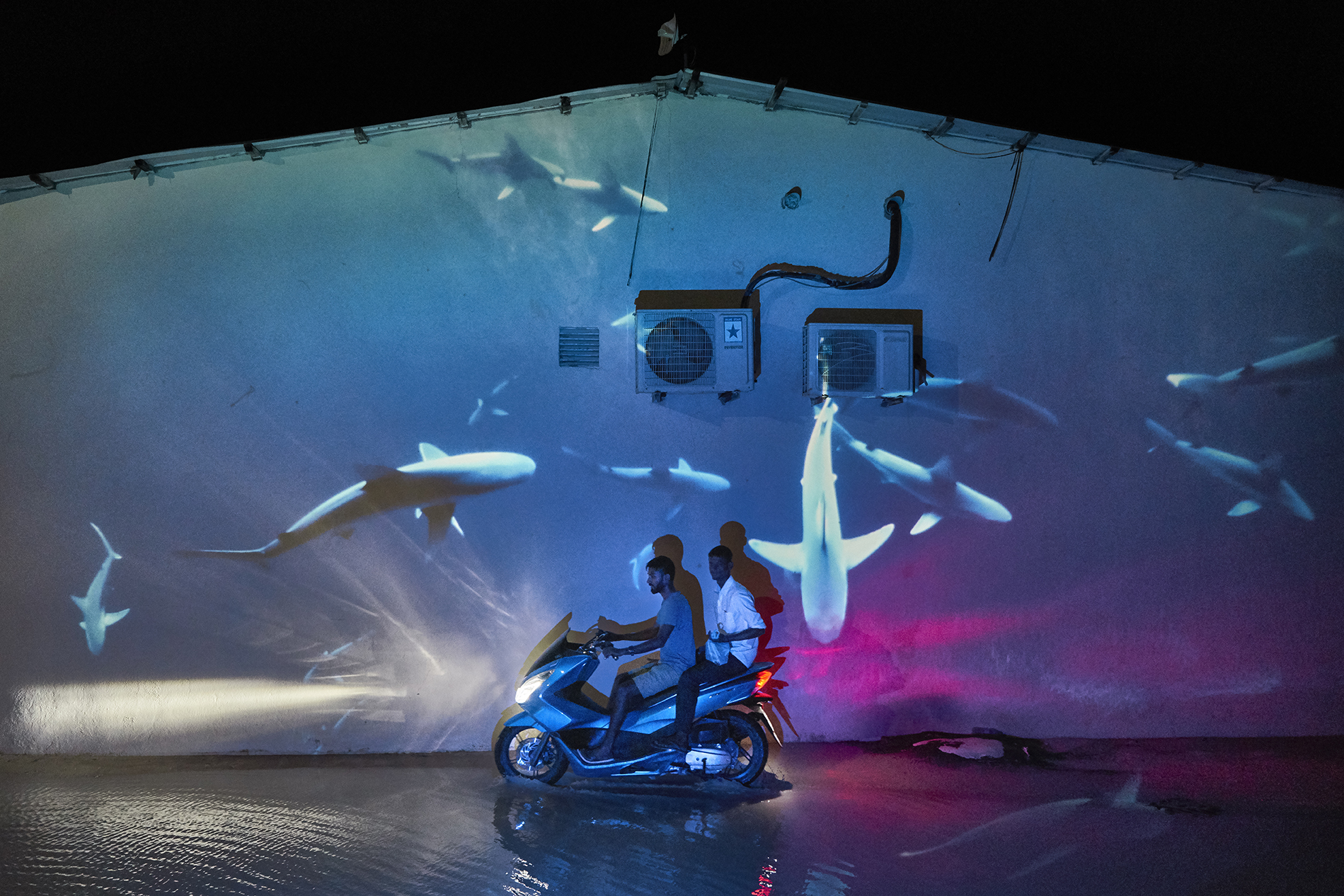

Edoardo Delille and Giulia Piermartiri
“My husband built this house with his own hands,” says Jeeza. “The idea that one day our children might have to leave it to the sea is like seeing the dream of a life that breaks.”
About this series
As sea levels rise, the low-lying Maldives are predicted to be submerged by the end of the century. The government is working on solutions like barriers, and moving towards a net zero economy to promote sustainable living. To illustrate the future dangers, Edoardo Delille and Giulia Piermartiri projected tourist diving photos onto local scenes.


Edoardo Delille and Giulia Piermartiri
“For the future of our children we must change our habits and live in a more sustainable way," says Aakin.
About this series
As sea levels rise, the low-lying Maldives are predicted to be submerged by the end of the century. The government is working on solutions like barriers, and moving towards a net zero economy to promote sustainable living. To illustrate the future dangers, Edoardo Delille and Giulia Piermartiri projected tourist diving photos onto local scenes.


Edoardo Delille and Giulia Piermartiri
Here on Villingili island, only electric scooters and pedal bikes are allowed, to reduce carbon emissions.
About this series
As sea levels rise, the low-lying Maldives are predicted to be submerged by the end of the century. The government is working on solutions like barriers, and moving towards a net zero economy to promote sustainable living. To illustrate the future dangers, Edoardo Delille and Giulia Piermartiri projected tourist diving photos onto local scenes.
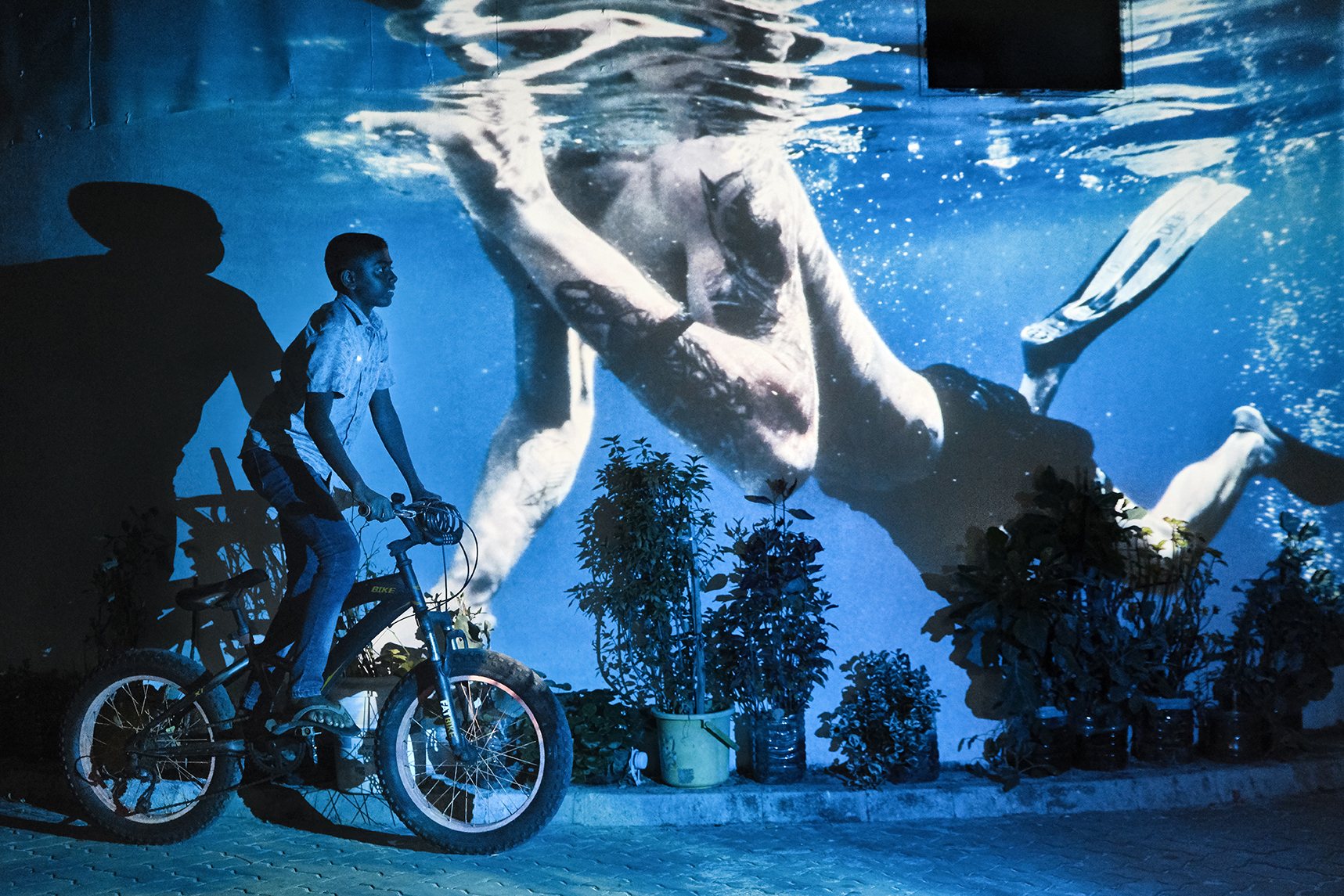

Edoardo Delille and Giulia Piermartiri
Maafushi has 3,000 inhabitants in just 0.3 square kilometres – nearly double the population density of London.
About this series
As sea levels rise, the low-lying Maldives are predicted to be submerged by the end of the century. The government is working on solutions like barriers, and moving towards a net zero economy to promote sustainable living. To illustrate the future dangers, Edoardo Delille and Giulia Piermartiri projected tourist diving photos onto local scenes.
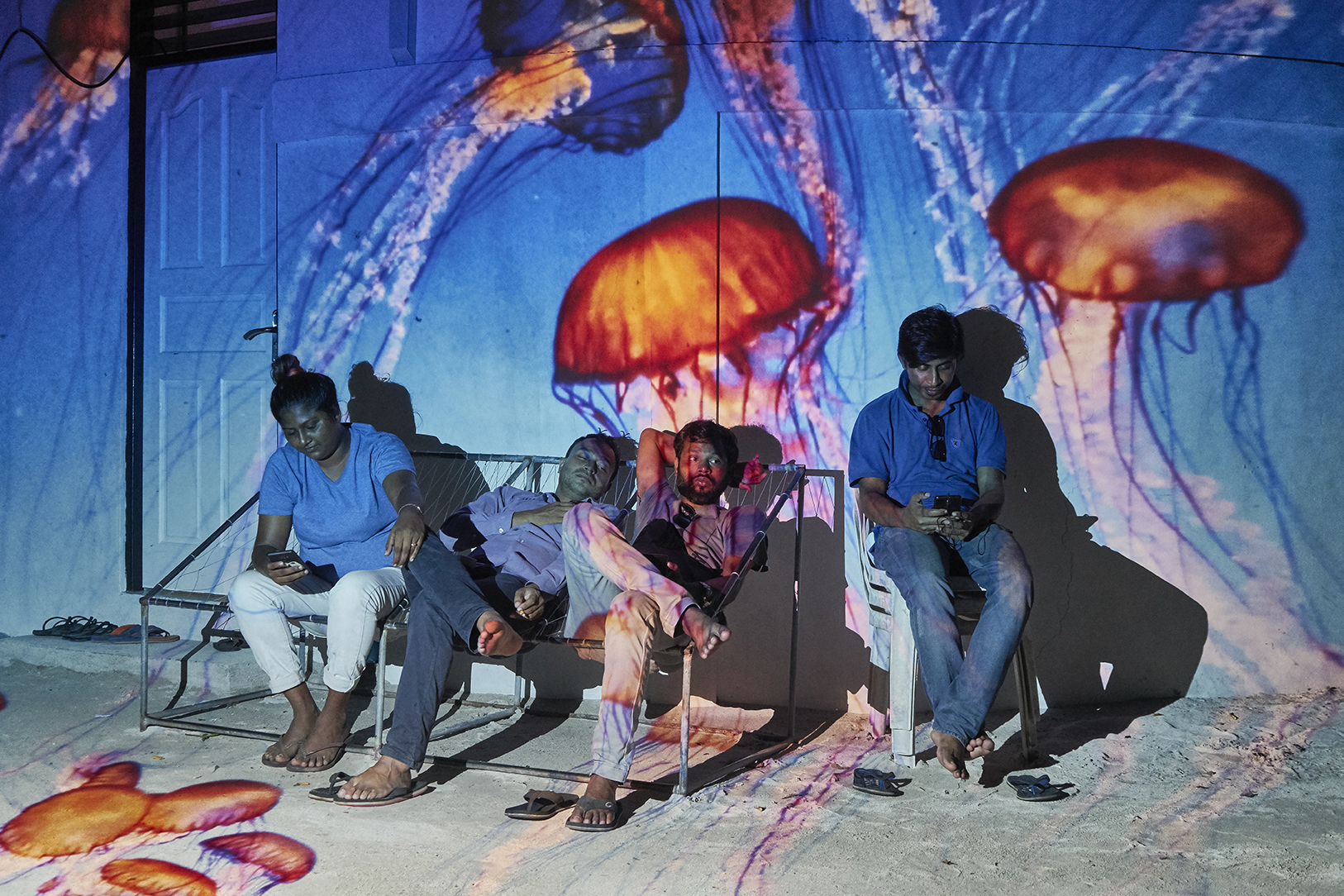
An Elegy for the Death of Hamun

Hashem Shakeri
The Hamun wetlands are mostly dry nowadays, but after recent flooding Moslem has been able to catch some fish. It won’t be long before the water disappears again.
About this series
For centuries, Sistan and Baluchestan has been a fertile region of Iran, with forests and productive cropland. But rapid climate change is turning it into a desert, bringing drought, hunger, unemployment and mass emigration.
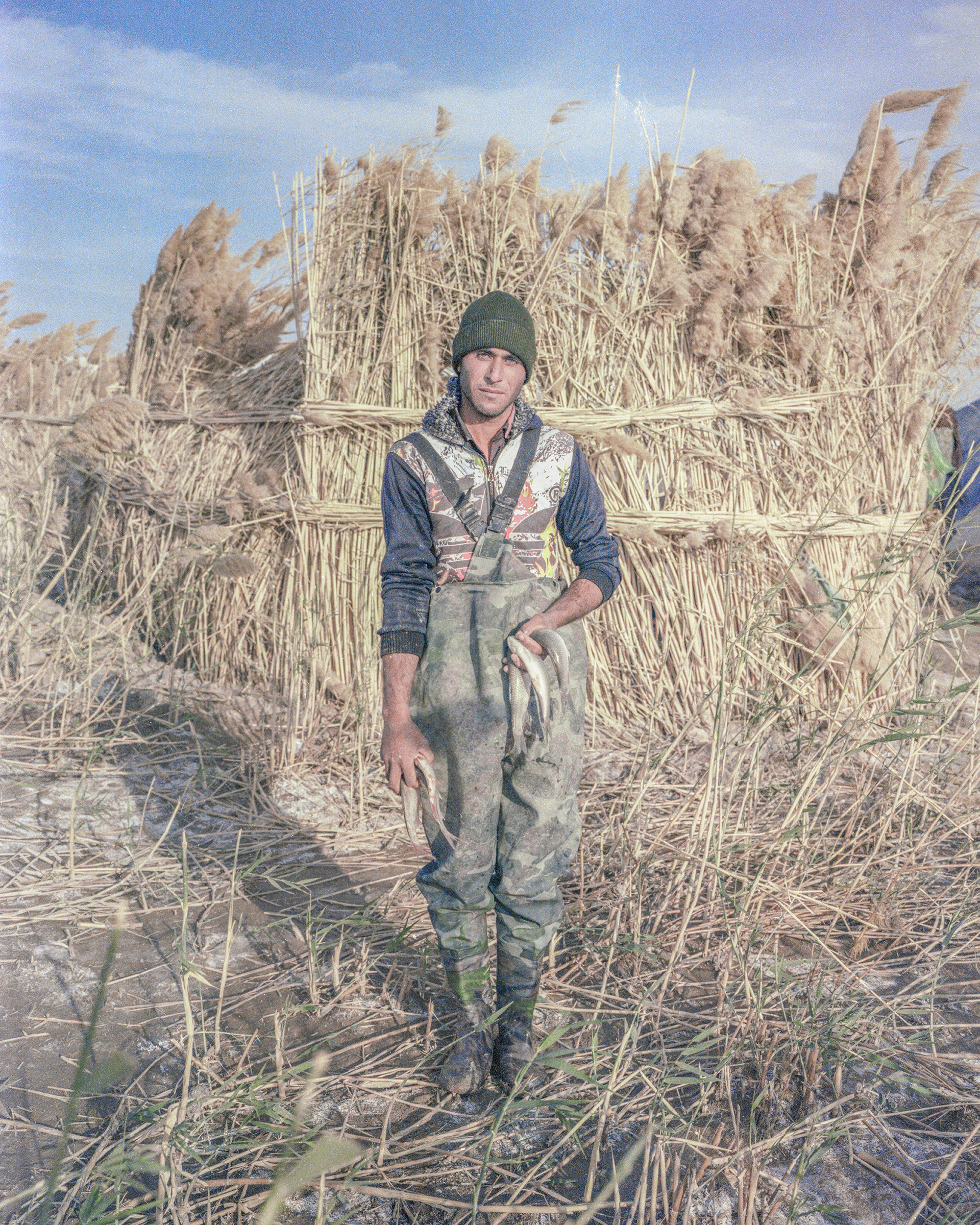

Hashem Shakeri
Yasmin Raeesi, age 17, uses a dead tree for drying clothes. She and her family live in a drought area with little drinking water, which leads to a health problems like dehydration, malnutrition and disease.
About this series
For centuries, Sistan and Baluchestan has been a fertile region of Iran, with forests and productive cropland. But rapid climate change is turning it into a desert, bringing drought, hunger, unemployment and mass emigration.
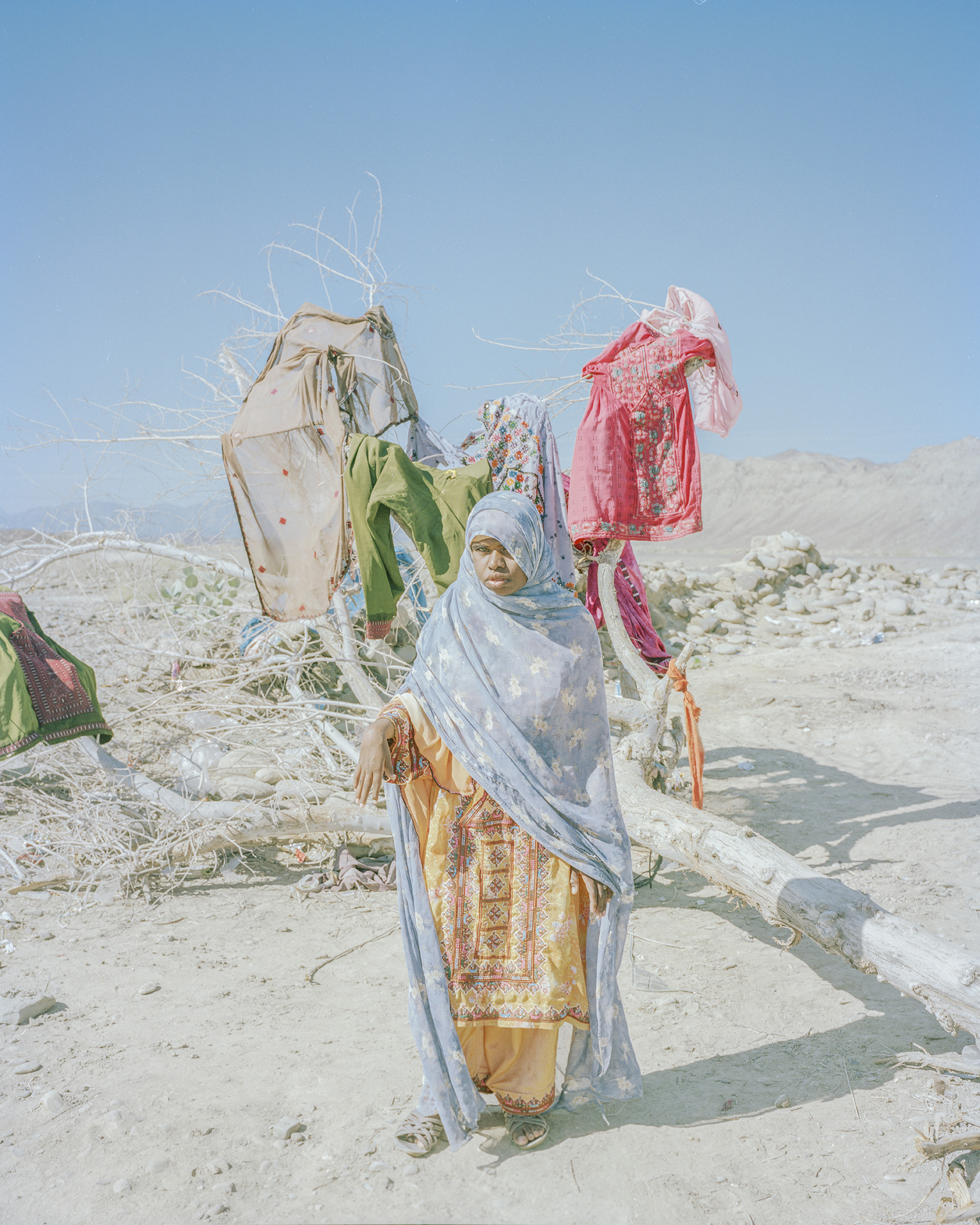

Hashem Shakeri
Abdullah, who is fasting, is resting under a fruit tree that has recently dried out and been infested by beetles. There are still plenty of green trees around, but he believes that farming will soon become unviable here.
About this series
For centuries, Sistan and Baluchestan has been a fertile region of Iran, with forests and productive cropland. But rapid climate change is turning it into a desert, bringing drought, hunger, unemployment and mass emigration.
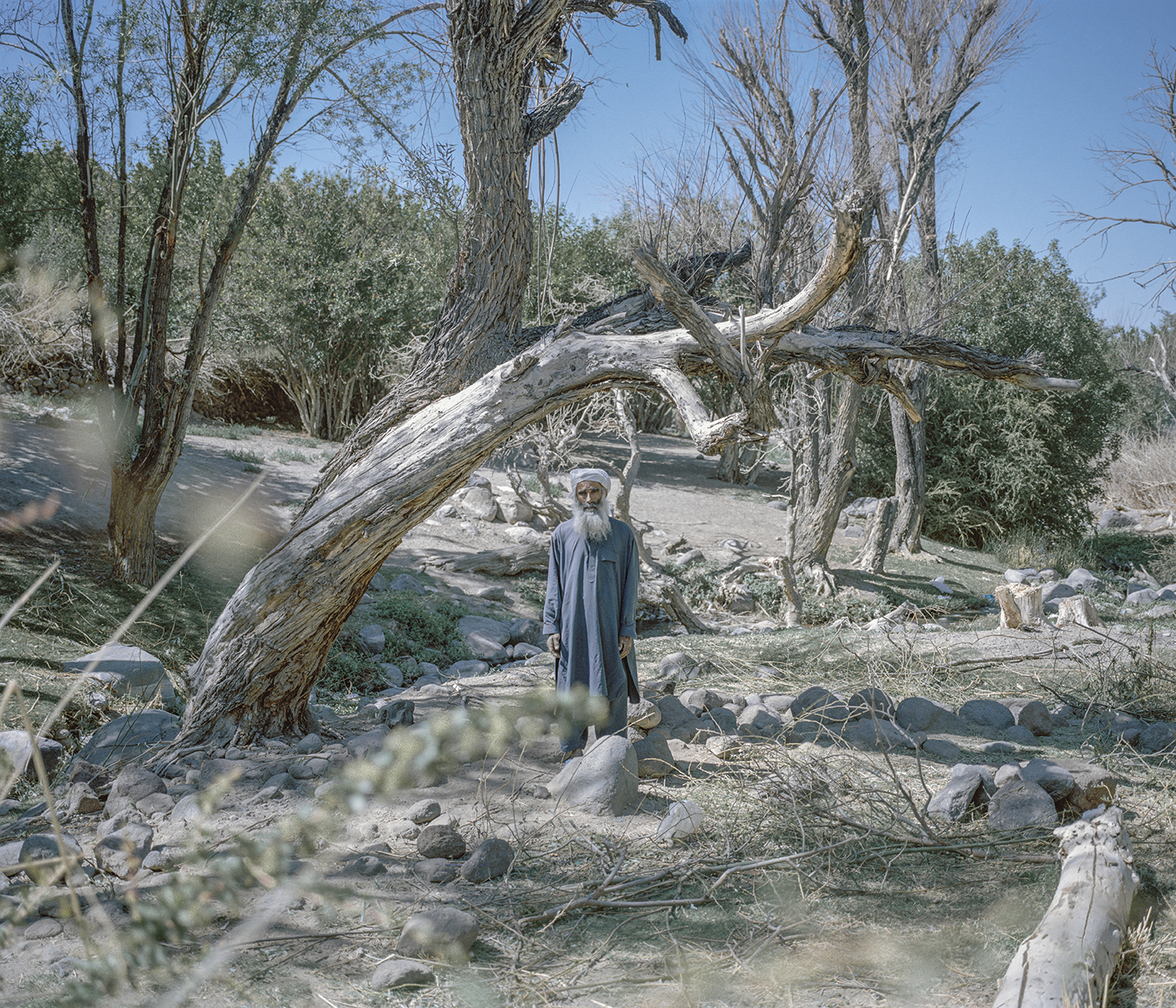

Hashem Shakeri
Balek Roza does not have a birth certificate but she is said to be 110. She has cataracts, and in her village there is no safe drinking water.
About this series
For centuries, Sistan and Baluchestan has been a fertile region of Iran, with forests and productive cropland. But rapid climate change is turning it into a desert, bringing drought, hunger, unemployment and mass emigration.
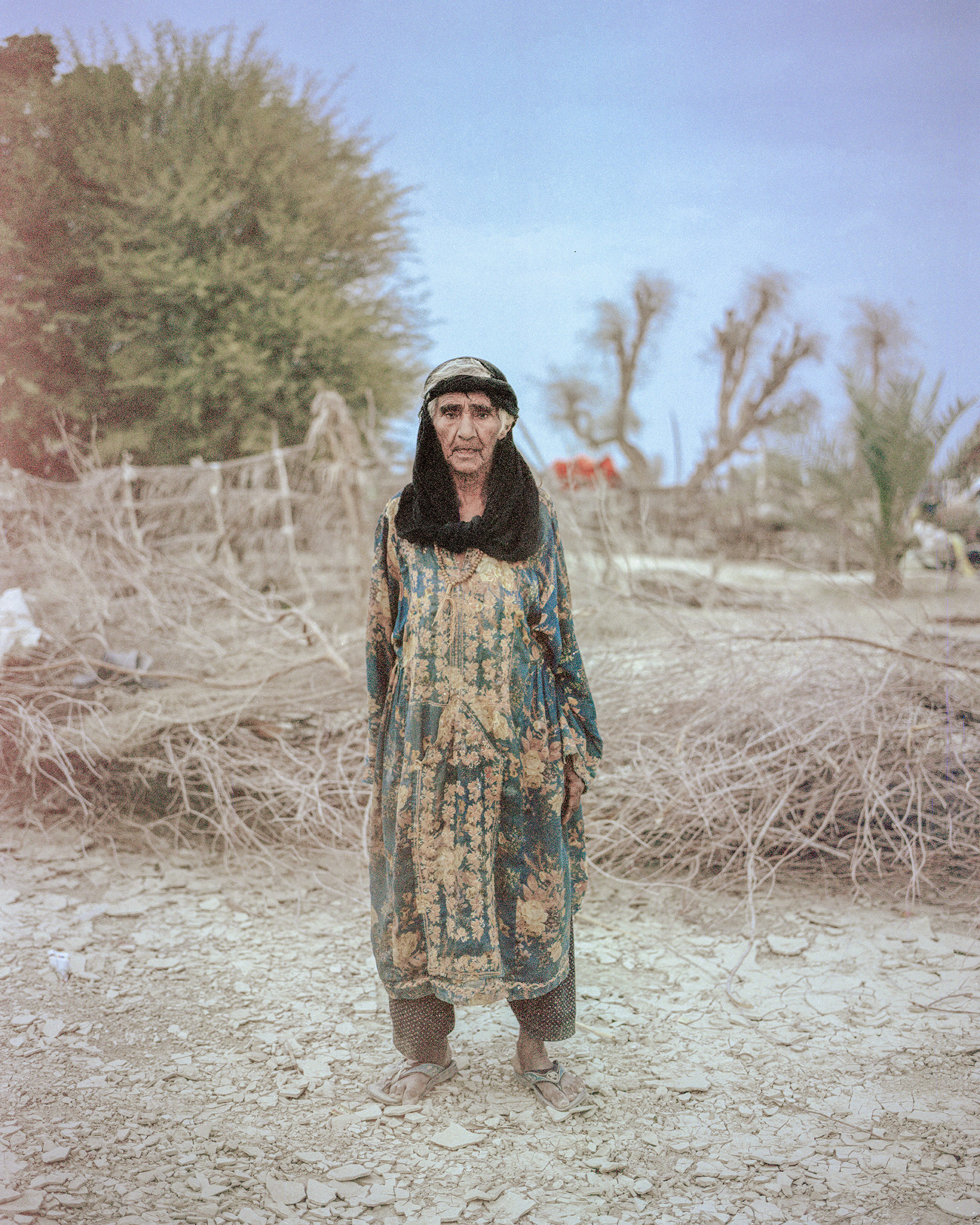

Hashem Shakeri
Abdul Rahman is standing on the land he works. Recent rainfall, after years of drought, had produced some good banana crops, but this year flooding has destroyed them.
About this series
For centuries, Sistan and Baluchestan has been a fertile region of Iran, with forests and productive cropland. But rapid climate change is turning it into a desert, bringing drought, hunger, unemployment and mass emigration.
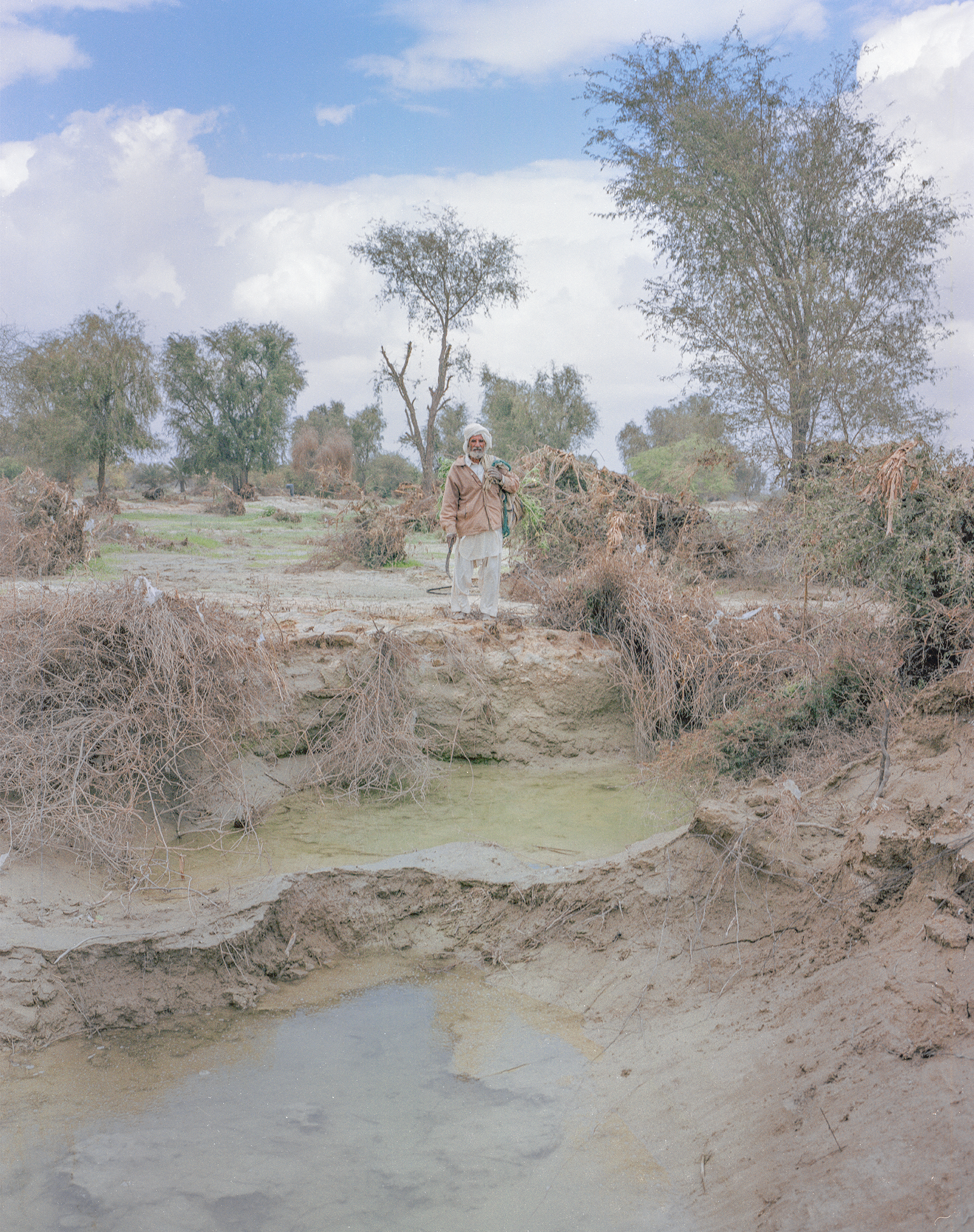
Sun, Not Salt

Ayomitunde Adeleke
Victoria lost her brother and sister to skin cancer. Their jobs exposed them to harsh sunlight every day. After uncertainty about why they were getting ill, they were eventually taken to hospital, but by then it was too late.
About this series
There’s evidence that rising temperatures are increasing the risk of skin cancer – a particular danger to people with albinism. In Nigeria, the connection is not always well understood, and people often think the symptoms are caused by eating too much salt.
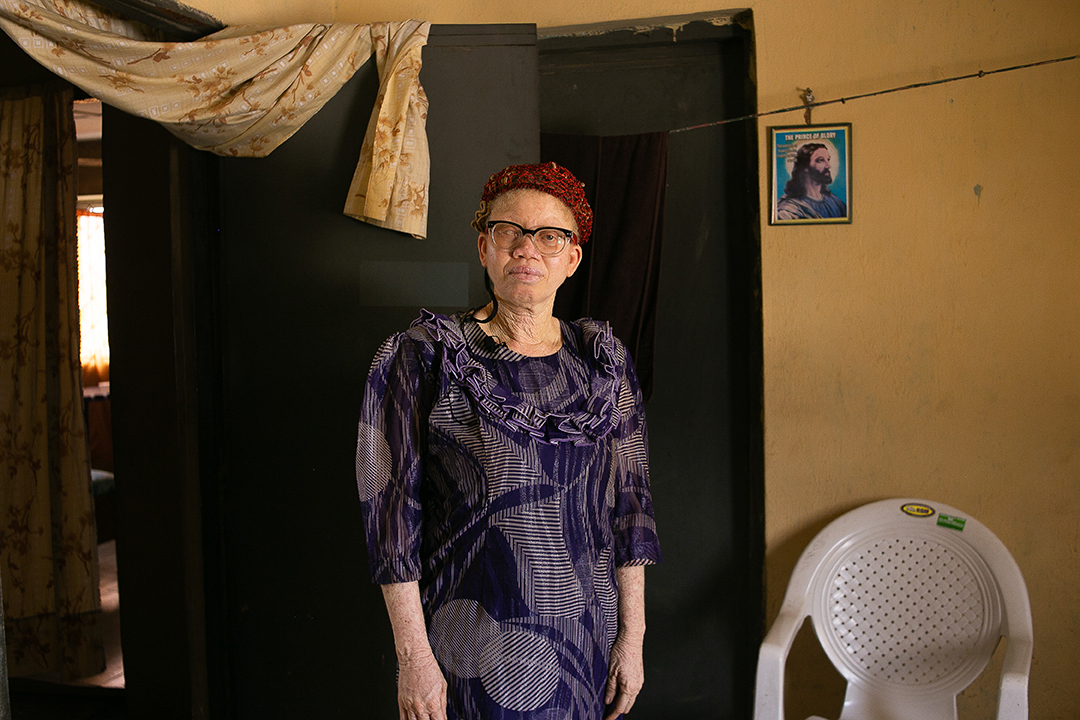

Ayomitunde Adeleke
Kolawole worked in aviation, in a job that put him in sunlight a lot, and he developed skin cancer that killed him. One of his first symptoms was a swollen eye, but no one initially made the link.
About this series
There’s evidence that rising temperatures are increasing the risk of skin cancer – a particular danger to people with albinism. In Nigeria, the connection is not always well understood, and people often think the symptoms are caused by eating too much salt.
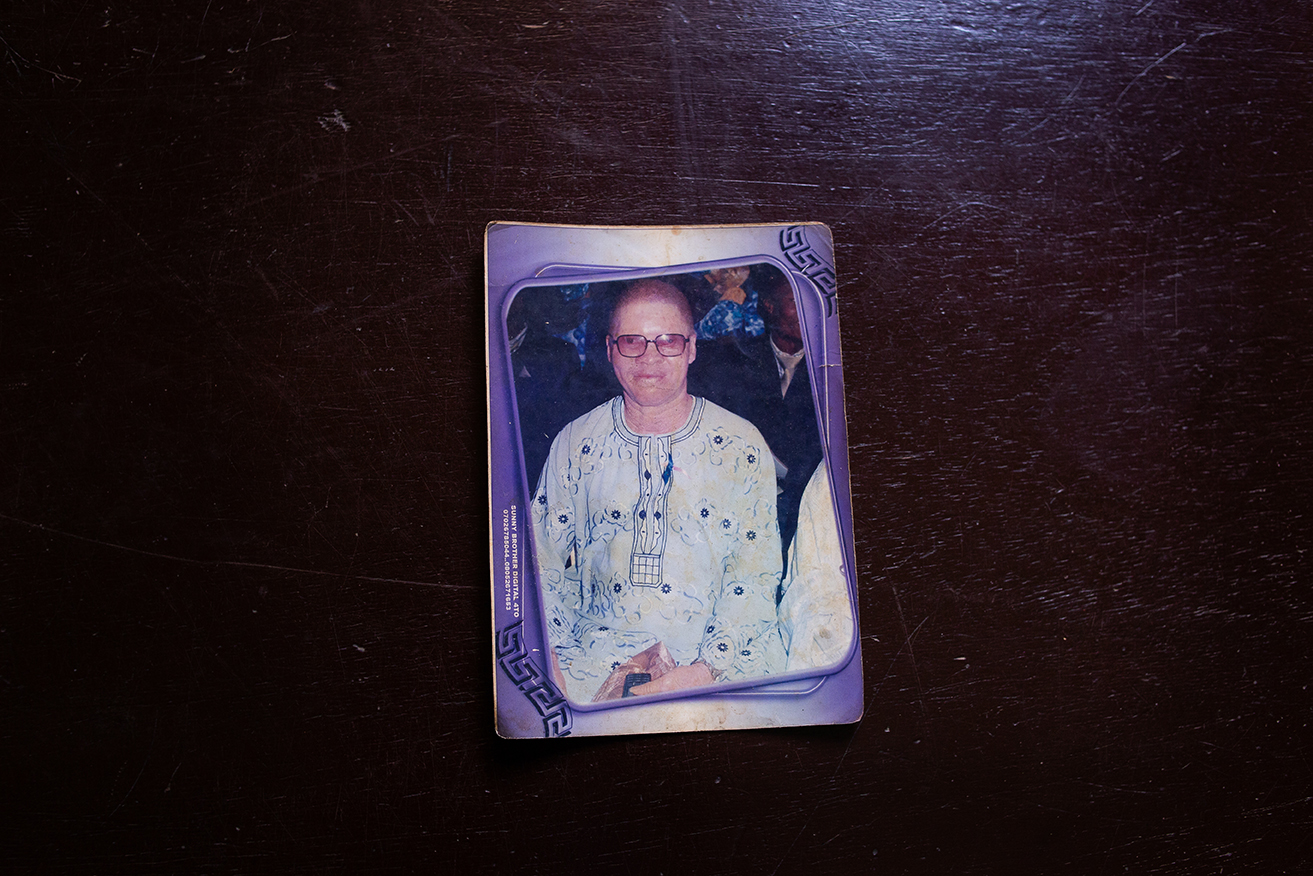

Ayomitunde Adeleke
Victoria and her friend Daniel, who drops in to keep her company. Daniel complained of some skin rashes, so Victoria took a look to see if they were sunburn-related. She commended him for wearing clothes and a nice hat that would help to protect him.
About this series
There’s evidence that rising temperatures are increasing the risk of skin cancer – a particular danger to people with albinism. In Nigeria, the connection is not always well understood, and people often think the symptoms are caused by eating too much salt.
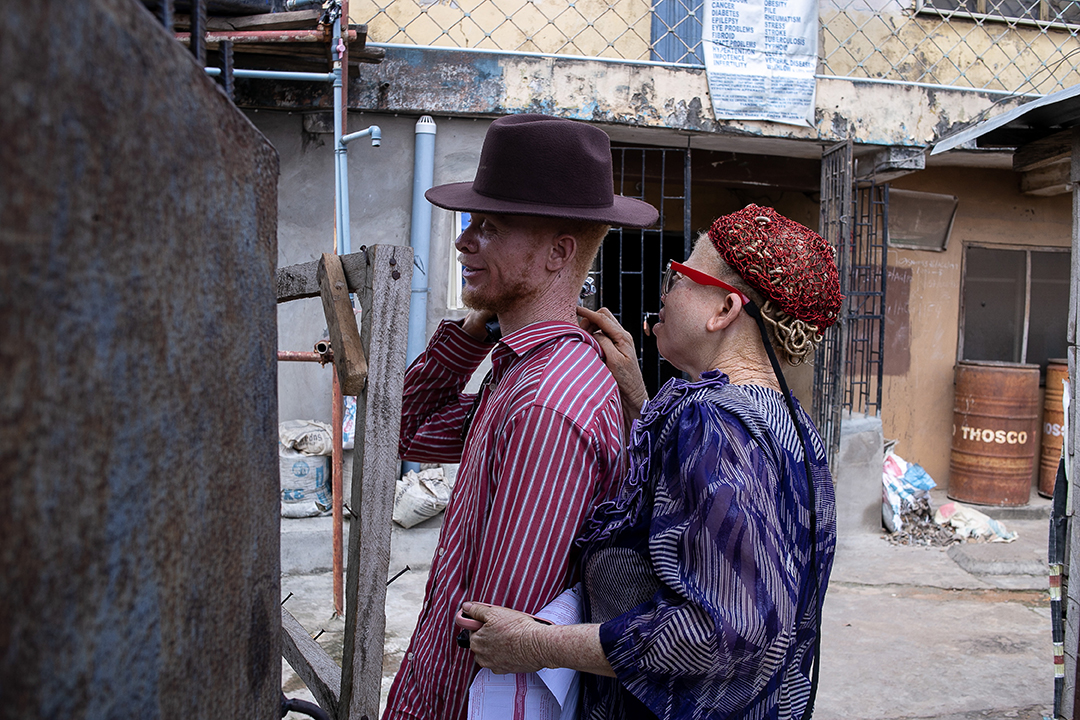

Ayomitunde Adeleke
A photo of a man who died of skin cancer, taken by medical staff in Abuja. As an albino, he hadn’t been able to get health insurance to cover the surgery he needed. Donations came in through the Lagos Albino Foundation, but they weren’t enough to save his life.
About this series
There’s evidence that rising temperatures are increasing the risk of skin cancer – a particular danger to people with albinism. In Nigeria, the connection is not always well understood, and people often think the symptoms are caused by eating too much salt.
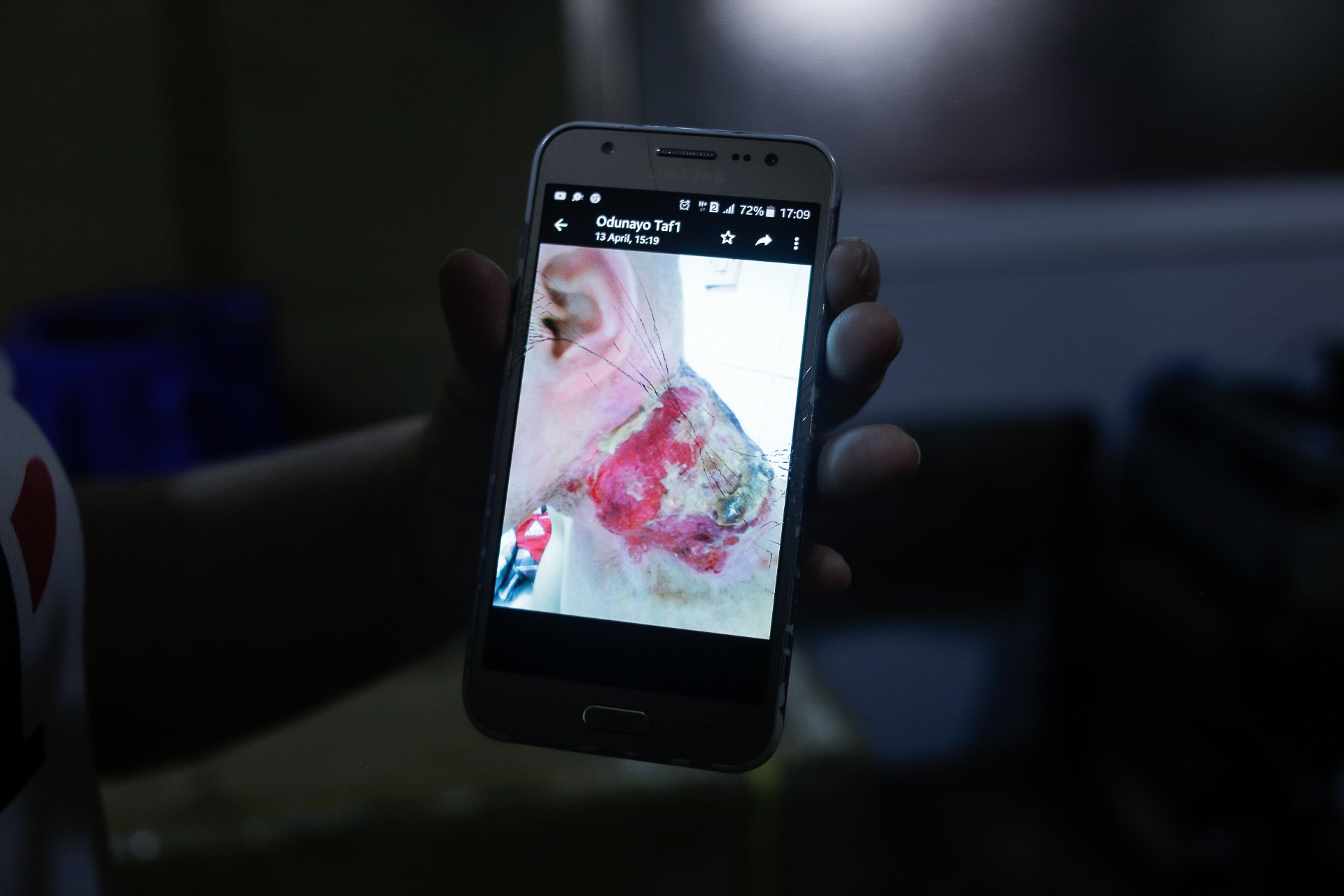

Ayomitunde Adeleke
Coco is a writer and a model, and runs her own lifestyle blog. She finds it hard to get modelling work because of prejudice against albinism. Some companies do think about diversity, but often in a simplistic way that doesn’t include her.
About this series
There’s evidence that rising temperatures are increasing the risk of skin cancer – a particular danger to people with albinism. In Nigeria, the connection is not always well understood, and people often think the symptoms are caused by eating too much salt.

Burnt Memory: Archaeology from a Climate Emergency

Gideon Mendel and Jonathan Pierredon
A composite of nine images of a burnt camera, from the home of Kenny and Connie Waranius.
About this series
The Carr fire in 2018 was one of California’s most devastating wildfires ever, spreading across dry land and accelerated by a tornado. It destroyed 359 square miles of land and forced 36,000 people to evacuate, and its smoke spread across five states. Eight people died. Rising temperatures and extreme weather events make fires like this an ever-greater threat to human life. Gideon Mendel worked with Jonathan Pierredon to create tintype photos of damaged objects found in the ruins of people’s homes.


Gideon Mendel and Jonathan Pierredon
A burnt camera, from the home of Kenny and Connie Waranius.
About this series
The Carr fire in 2018 was one of California’s most devastating wildfires ever, spreading across dry land and accelerated by a tornado. It destroyed 359 square miles of land and forced 36,000 people to evacuate, and its smoke spread across five states. Eight people died. Rising temperatures and extreme weather events make fires like this an ever-greater threat to human life. Gideon Mendel worked with Jonathan Pierredon to create tintype photos of damaged objects found in the ruins of people’s homes.
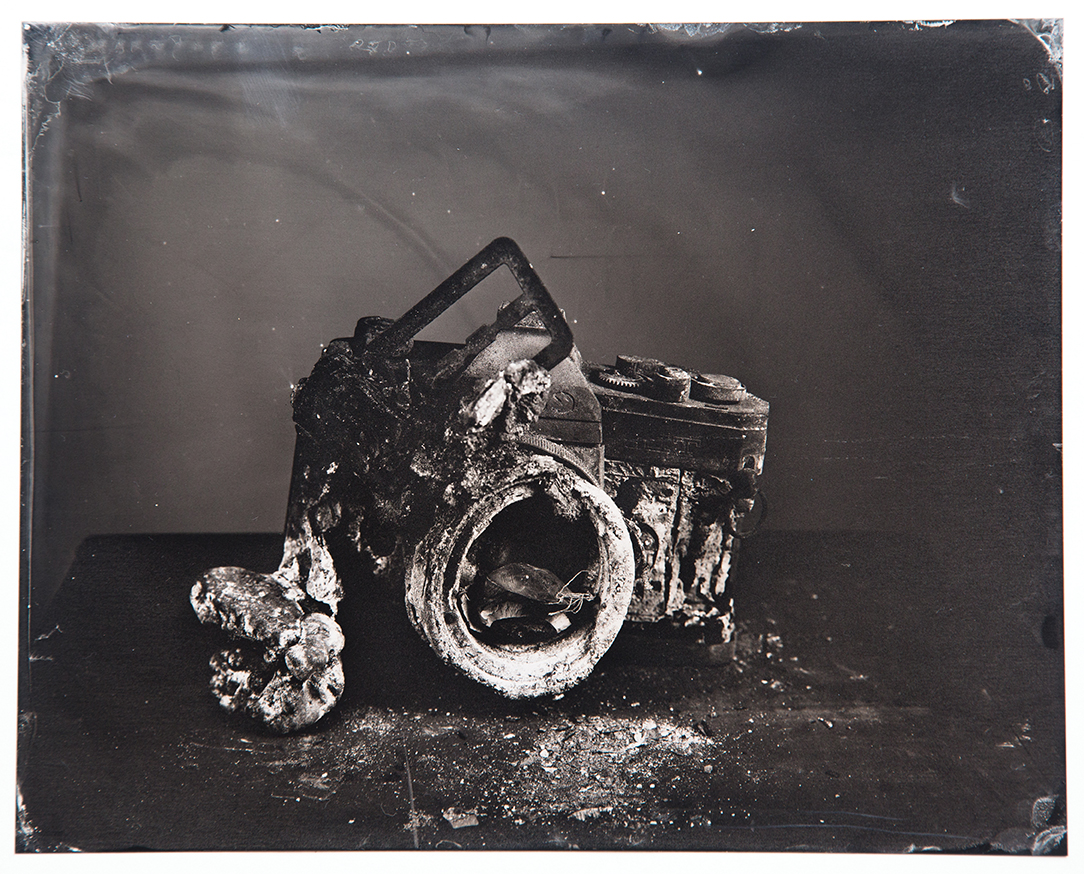

Gideon Mendel and Jonathan Pierredon
A burnt pair of binoculars, from the home of Kenny and Connie Waranius.
About this series
The Carr fire in 2018 was one of California’s most devastating wildfires ever, spreading across dry land and accelerated by a tornado. It destroyed 359 square miles of land and forced 36,000 people to evacuate, and its smoke spread across five states. Eight people died. Rising temperatures and extreme weather events make fires like this an ever-greater threat to human life. Gideon Mendel worked with Jonathan Pierredon to create tintype photos of damaged objects found in the ruins of people’s homes.
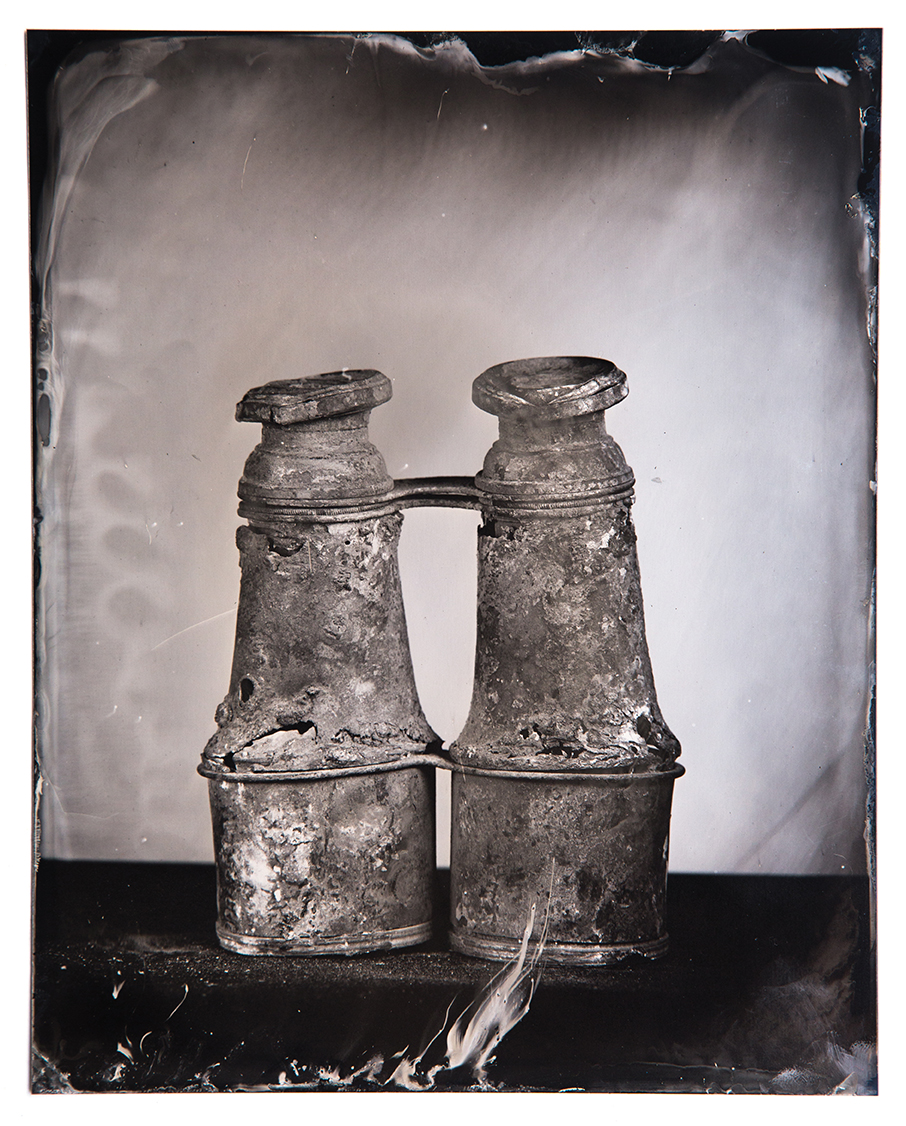

Gideon Mendel and Jonathan Pierredon
A burnt page from an art book, from the home of Robert and Marcia McKenzie.
About this series
The Carr fire in 2018 was one of California’s most devastating wildfires ever, spreading across dry land and accelerated by a tornado. It destroyed 359 square miles of land and forced 36,000 people to evacuate, and its smoke spread across five states. Eight people died. Rising temperatures and extreme weather events make fires like this an ever-greater threat to human life. Gideon Mendel worked with Jonathan Pierredon to create tintype photos of damaged objects found in the ruins of people’s homes.
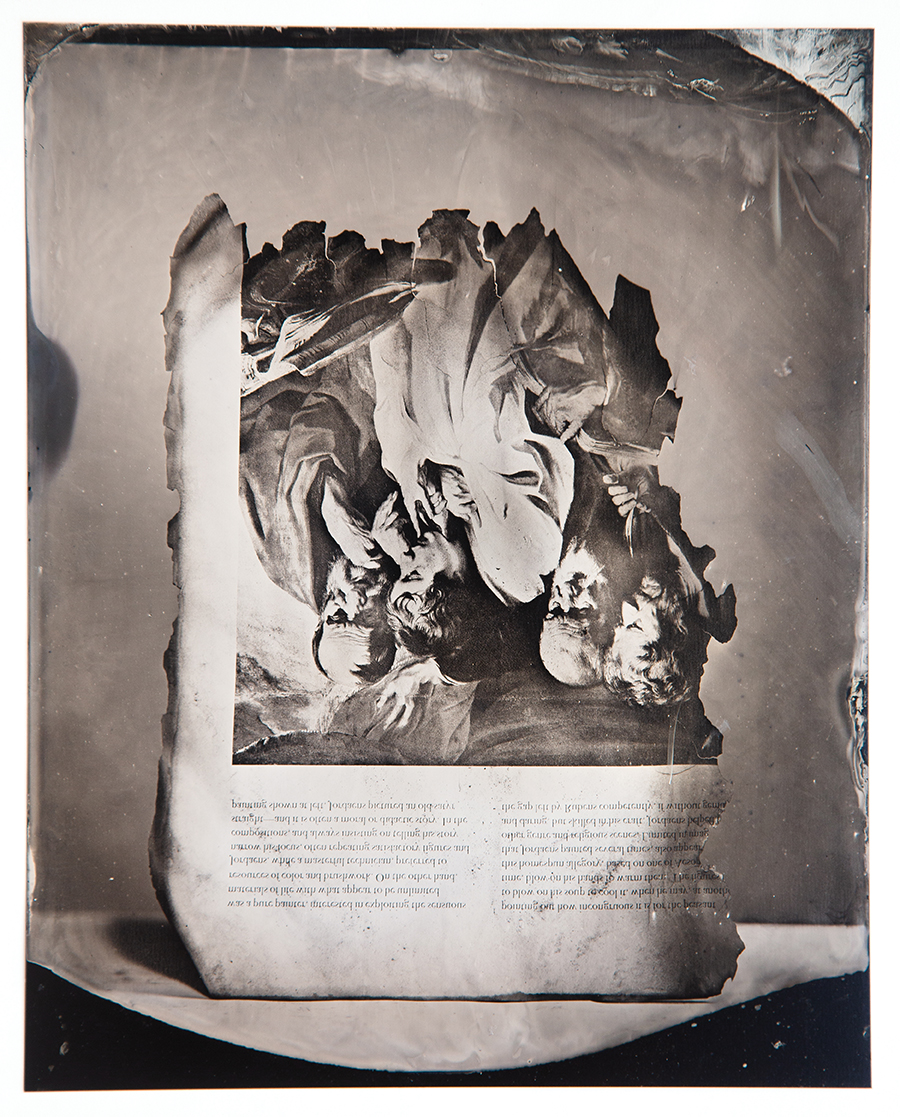

Gideon Mendel and Jonathan Pierredon
A melted glass jar, from the home of Eva and David Spliethof.
About this series
The Carr fire in 2018 was one of California’s most devastating wildfires ever, spreading across dry land and accelerated by a tornado. It destroyed 359 square miles of land and forced 36,000 people to evacuate, and its smoke spread across five states. Eight people died. Rising temperatures and extreme weather events make fires like this an ever-greater threat to human life. Gideon Mendel worked with Jonathan Pierredon to create tintype photos of damaged objects found in the ruins of people’s homes.
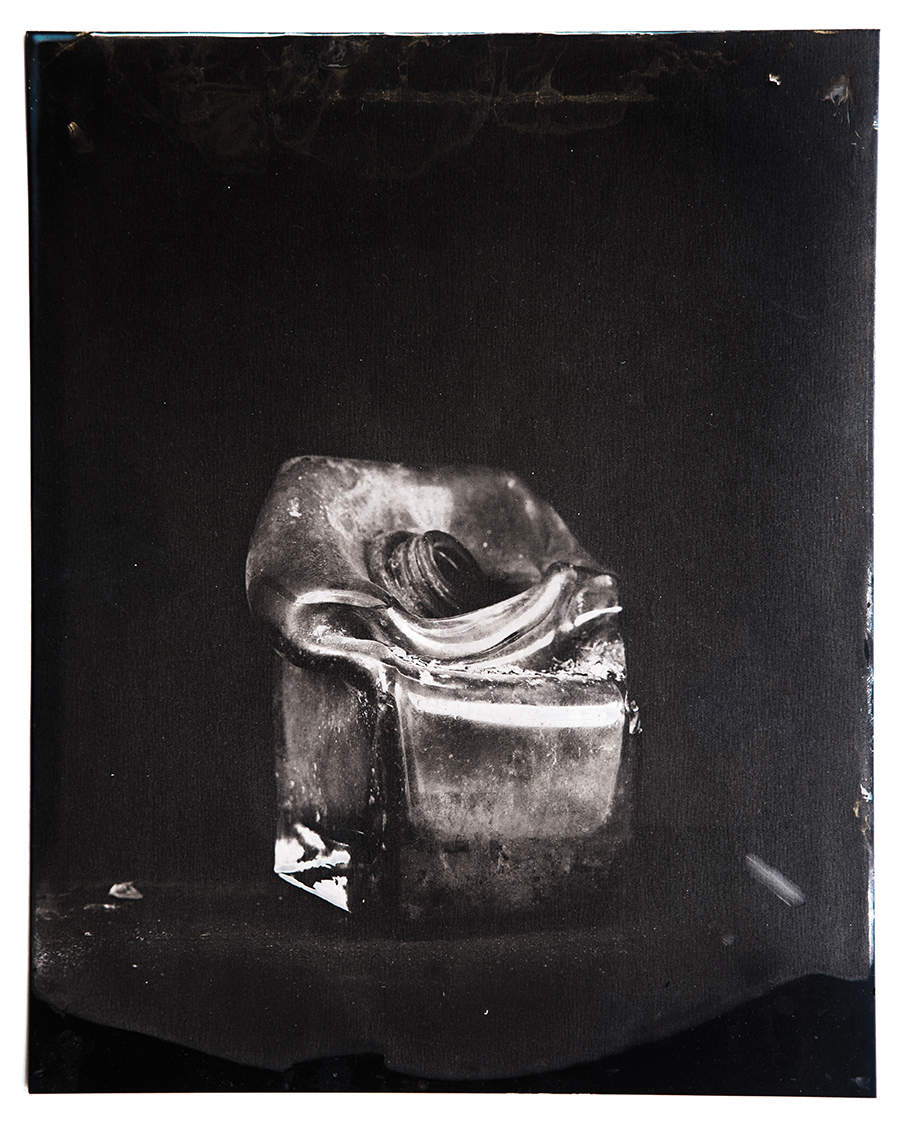
A high-profile panel of judges from the arts and global health communities selected the shortlist from over 10,000 individual entries, from which the winning images will be chosen.
- The finalists of each category will receive £1,000.
- Our single image and series winners will each receive £10,000.
- Prizes will be presented at an awards ceremony on 28 July 2021. Subscribe to our YouTube channel to attend the event.
Read about the entry conditions and judging criteria, and the terms and conditions for the Wellcome Photography Prize 2021.
You can also read our frequently asked questions.
Our privacy statement explains how, and on what legal basis, we collect, store, and use your personal information.
If you would like to know more about the prize
- Read our frequently asked questions
- Email PhotoPrize@wellcome.org
For media enquiries
- Call +44 (0)20 7611 8866
- Email media.office@wellcome.org
The Wellcome Photography Prize 2021 is supported by Spectrum.

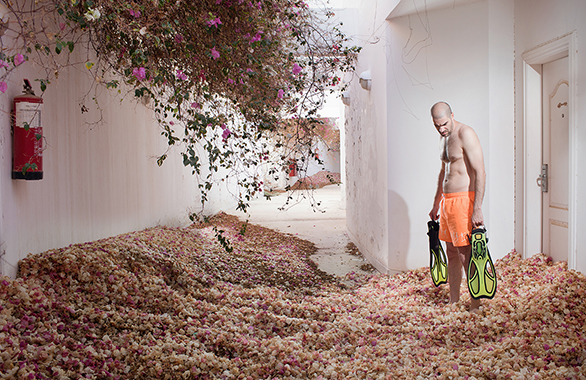

Hayleigh was quite deflated at this point, two months into lockdown, and washing her hair felt like a huge task.
